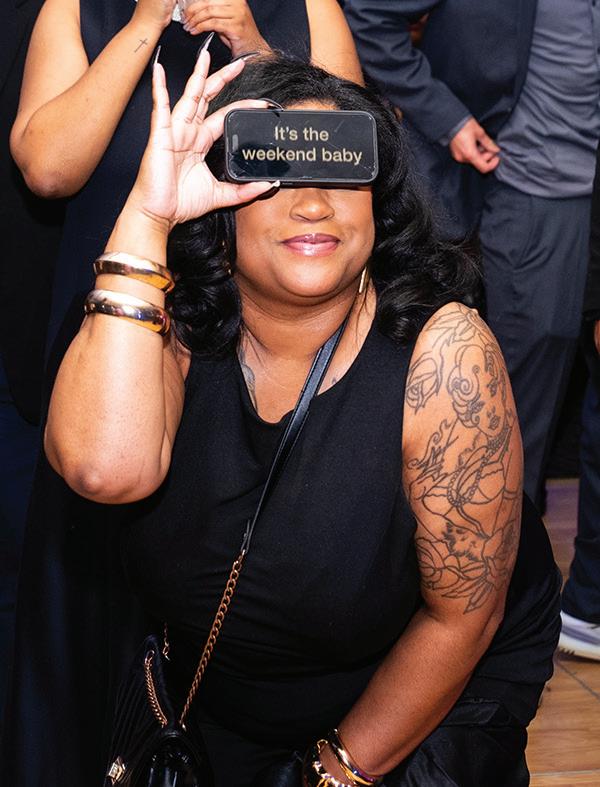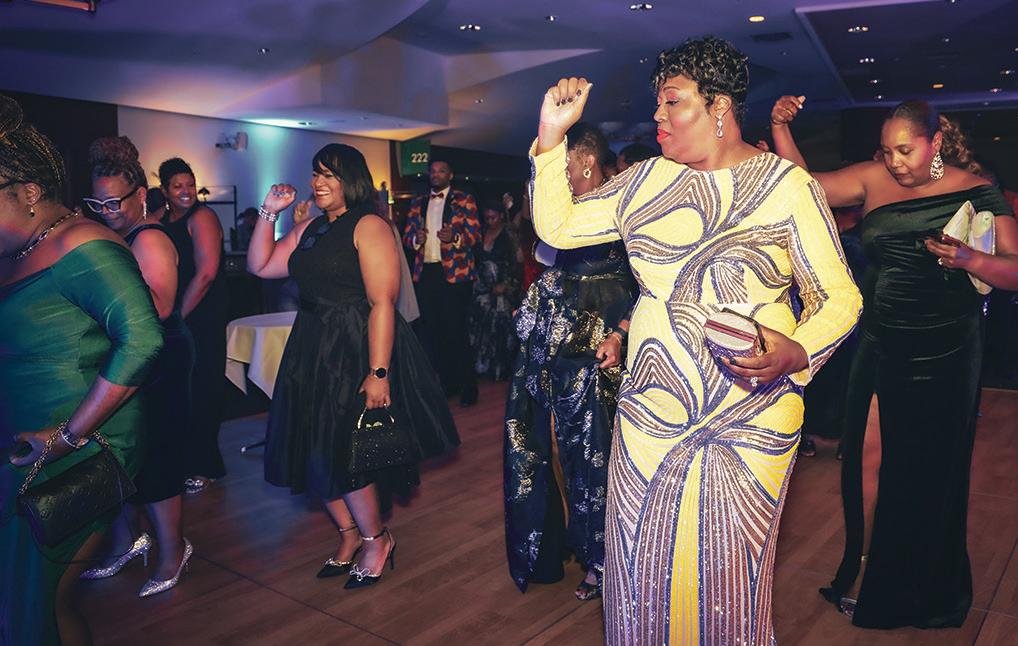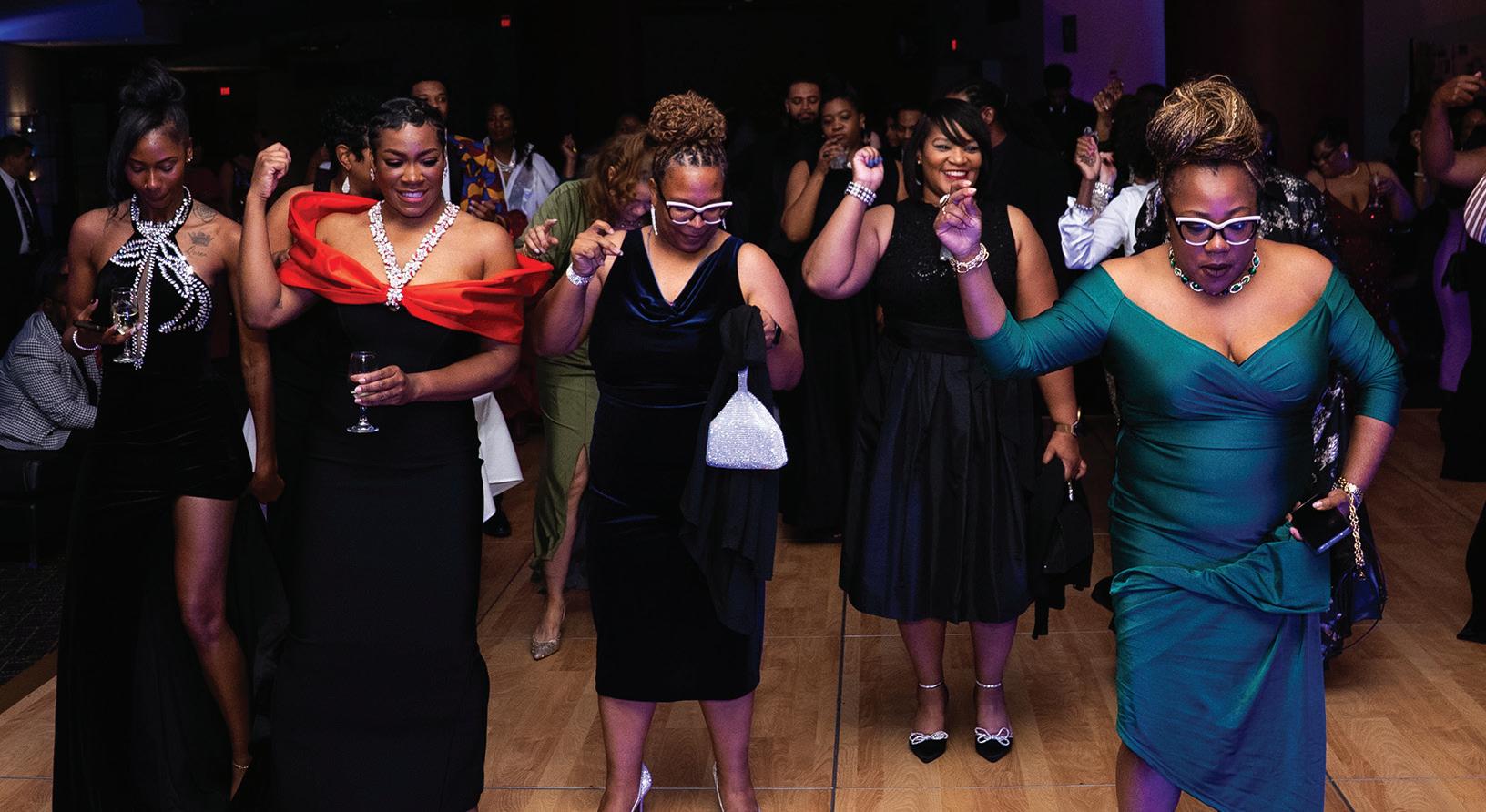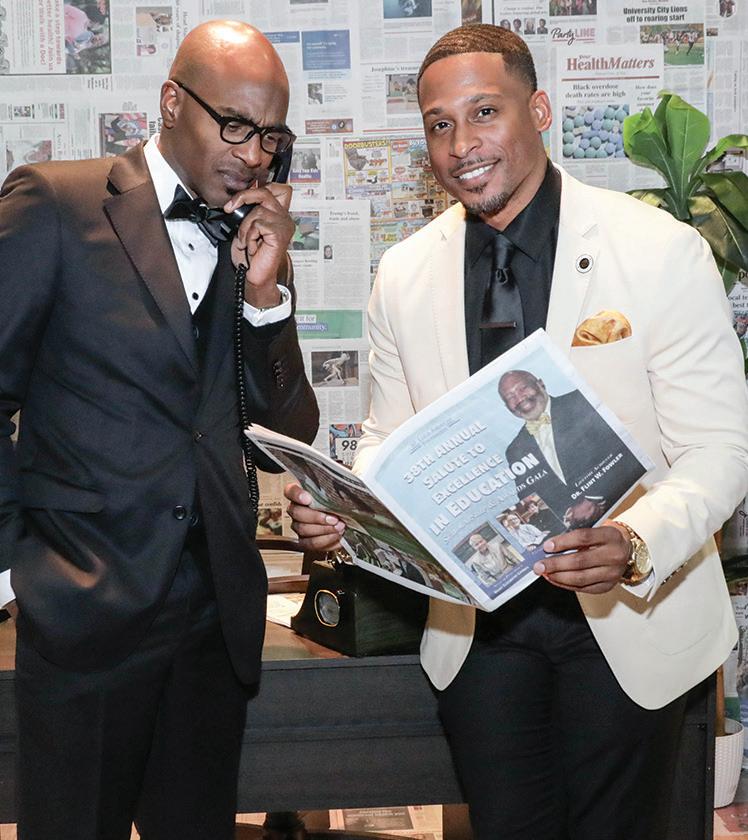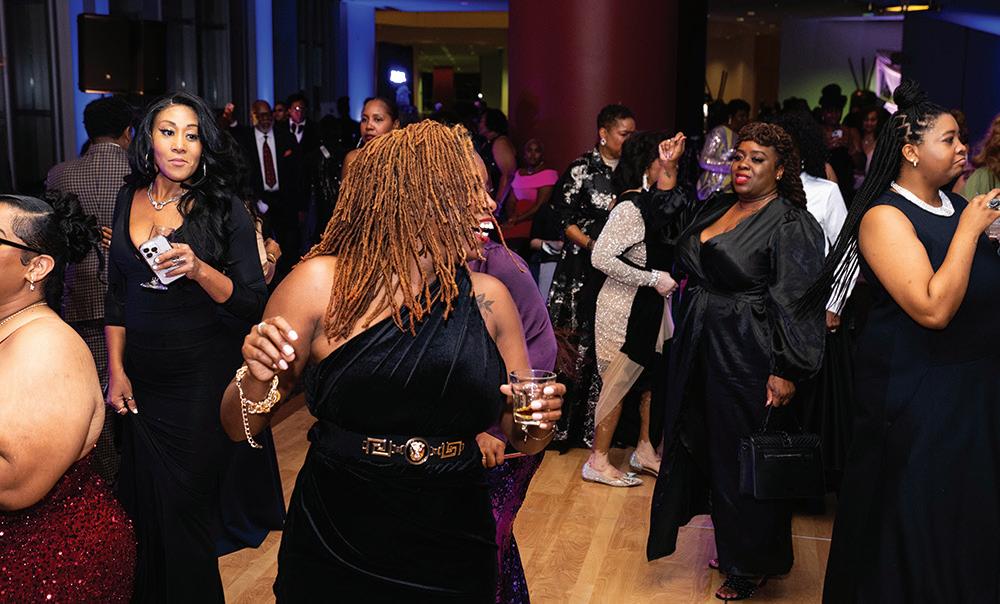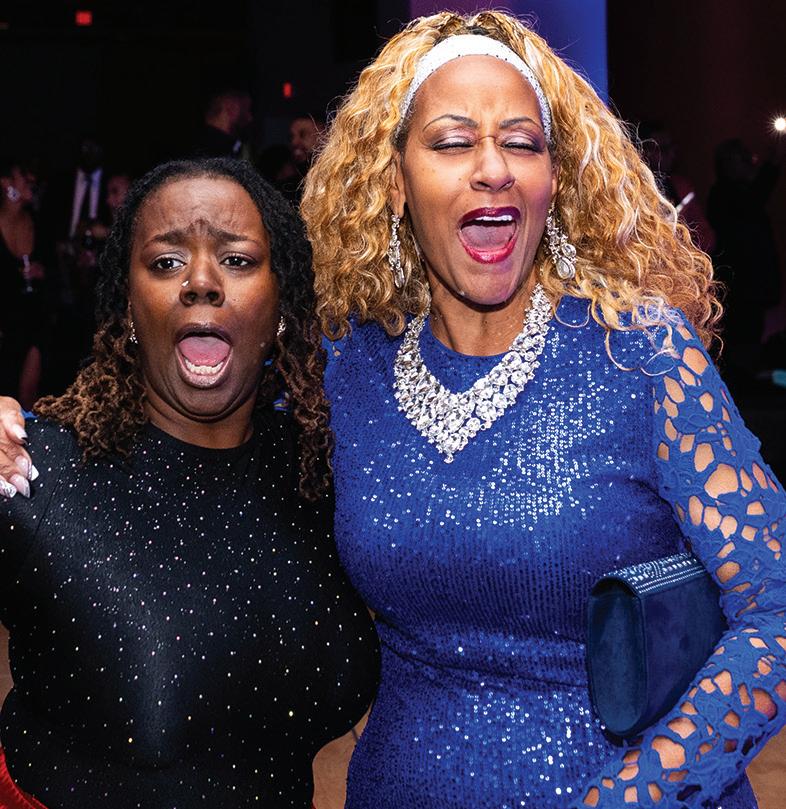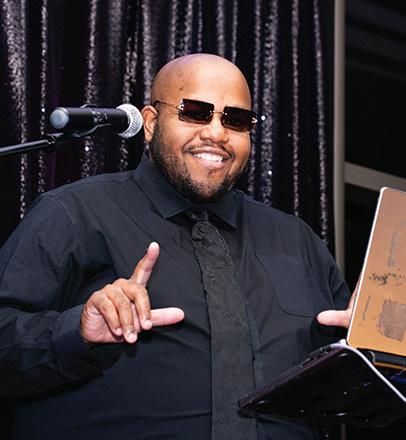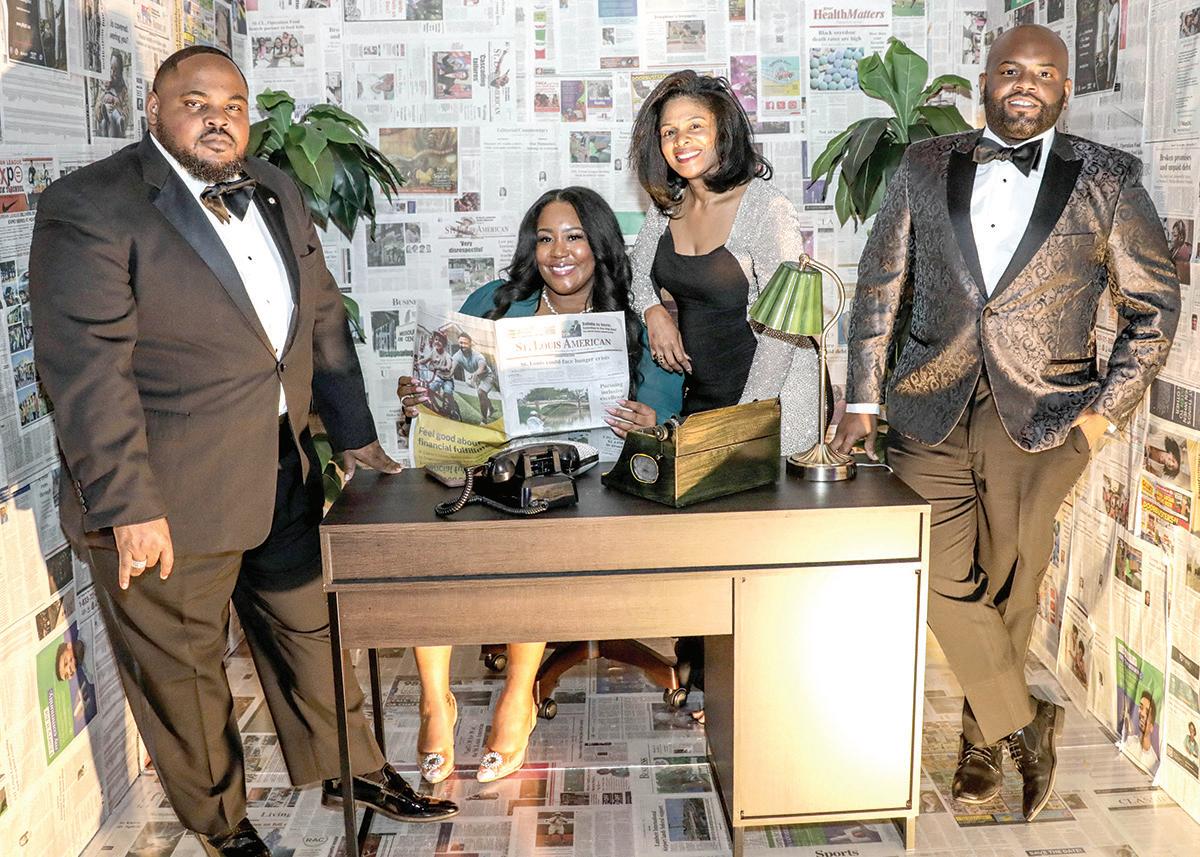




By Sylvester Brown Jr. St. Louis American
Hundreds of thousands of St. Louis County residents may now qualify for tax-free federal payments worth up to $50,000, but many are not applying, some saying they don’t trust the program or the people promoting it. That mistrust, advocates say, is keep-
Advocates push for clearer information as $50,000 payments go unclaimed.
ing families from receiving money that could help pay medical bills or bring relief after decades of illness linked to radioactive waste contamination. “I get a lot of emails from people
who say, ‘My brother doesn’t think this is real, he thinks it’s a scam,’” Karen Nickel, co-founder of Just Moms STL, told KSDK-TV. “There are a lot of people who don’t want to send their documents because they don’t trust the federal government.”
The assistance comes through the Radiation Exposure Compensation Act, a federal program created to help people harmed by the nation’s early nuclear weapons work. Congress extended and expanded the program last year, adding 21
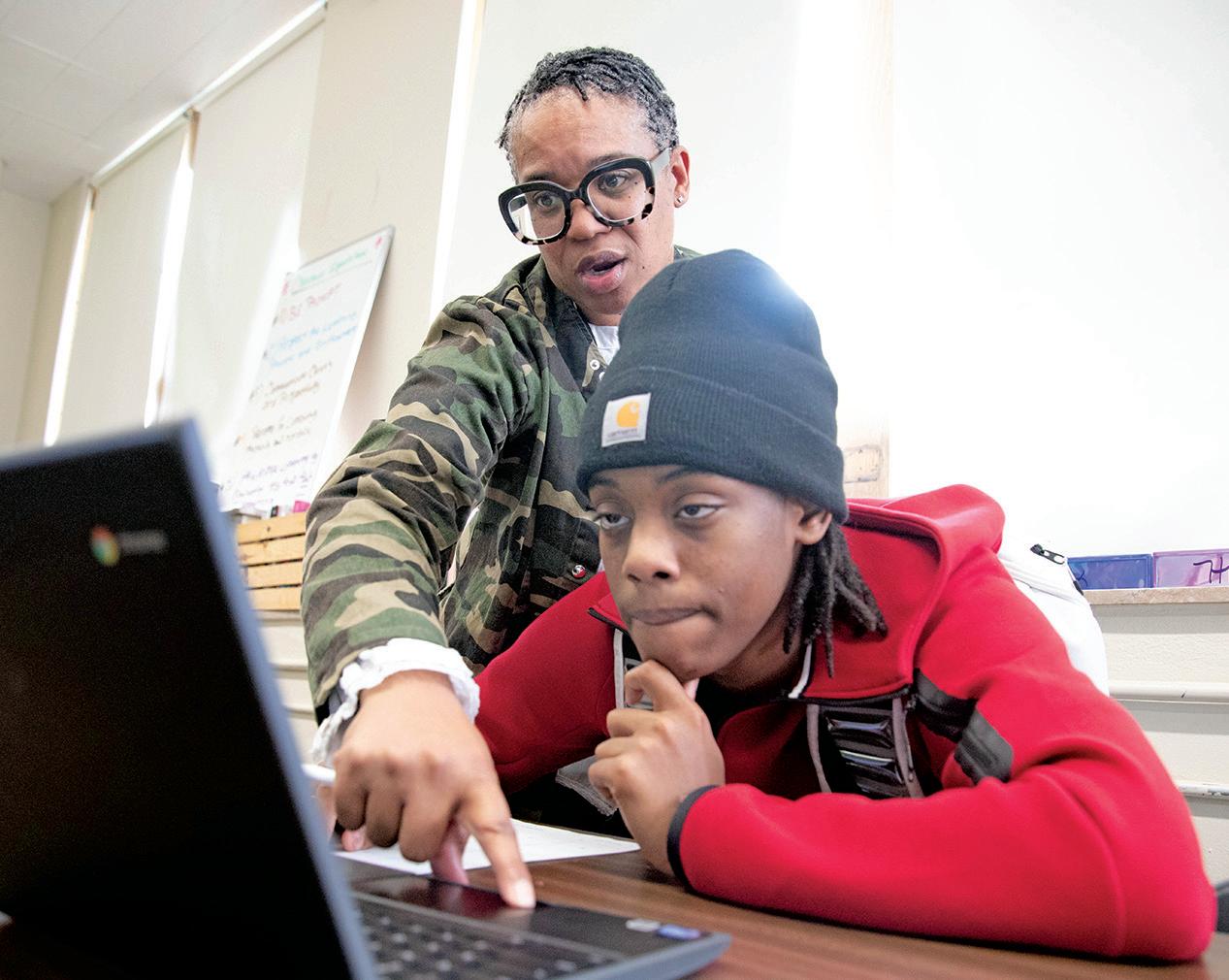
By Leah Gullet For The St. Louis American
n a recent Tuesday morning in a kindergarten classroom at Momentum Academy, teacher
Caroline Simmons knelt beside a student who had gotten out of his seat for the fourth time in five minutes — and they were only an hour into the school day.
“He’s not misbehaving,” she said softly. “His brain just wants to do a million things at once.”
For Simmons, a first-year teacher, moments like this capture both the joy and the strain of the profession. They also highlight what many Missouri educators say has become one of the biggest challenges in today’s classrooms: students arriving with different needs, less experience in structured learning environments and higher levels of support required to keep them engaged.
A13
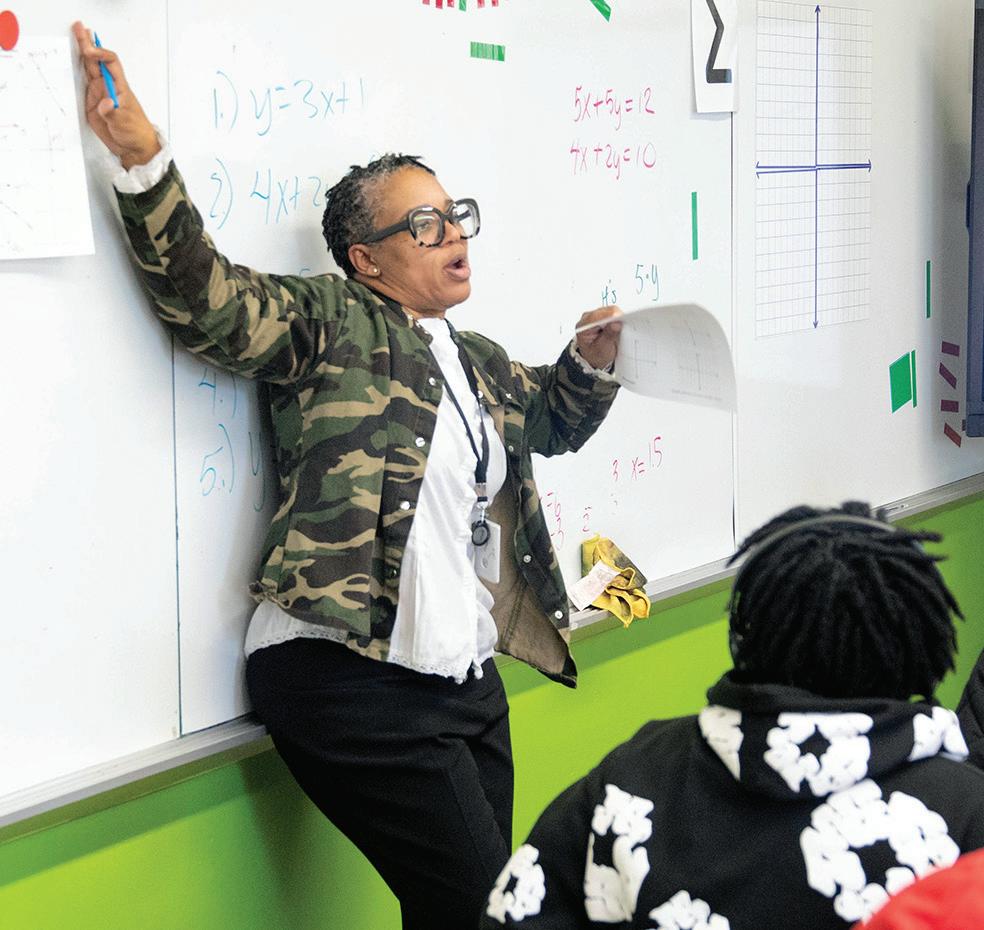
As winter approaches, questions mount over city’s tornado response
By Sylvester Brown, Jr. St. Louis American

With winter less than a month away, city officials are under growing pressure to find safe housing for families displaced by the spring tornado that tore through North St. Louis. Hundreds of residents — most from majority-Black neighborhoods — are still relying on shelters, hotel rooms or relatives as they wait for longterm options.
Mayor Cara Spencer’s administration has spent months scrambling to secure enough space. The city has evaluated
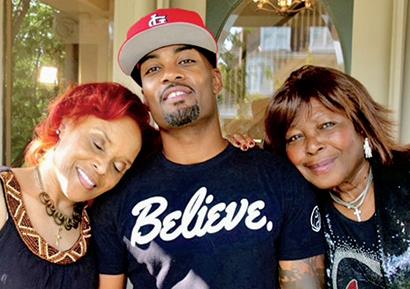
By Ashley Winters St. Louis American
When most people think about adoption, the focus often falls on new beginnings — adoptive families welcoming a child into their home and children finding stability and love. But behind every adoption is another story, one shaped by courage, uncertainty, identity and loss.

This November, as the nation observes National Adoption Month, Lutheran Family and Children’s Services of Missouri is highlighting the experiences of birth parents, who are often absent from public discussion about adoption.
See ADOPTION, A13
By Jamila K. Taylor
When I was a child, I was determined to become the first Black woman on the Supreme Court. For a Black child growing up in Richmond, Virginia, the capital of the Confederacy, it was perhaps an audacious goal. But in some respects, it was simple. I was just aspiring to a federal job.
I can thank my mother for that. She worked for the federal government for 35 years, at the Departments of the Treasury and Defense. After my dad died when I was in middle school, my mother raised three girls on her own. She didn’t have a college degree, but she excelled at jobs that offered security and stability in return. My family was by no means wealthy, but my parents owned our home, and we had health care. It was enough for our family, and it allowed a little girl to have big dreams.
Many Black families in America have a similar story. Federal employment as a reliable path to the middle class has been central to our economic progress for generations. But the Trump administration’s systematic purge of Black federal workers imperils that progress. It is a big part of why Black Americans are facing such difficult economic challenges right now.
population but nearly 20% of the federal workforce. In some agencies, it is significantly higher: In 2024, Black workers comprised 36% of the Departments of Education and Housing and Urban Development. To be clear, progress does not equal perfection: Black people are far less likely to have higher-paying federal jobs and are significantly underrepresented among the ranks of military leaders and top congressional staff. But the federal government has for generations offered Black workers job security and protections too often denied by the private sector.
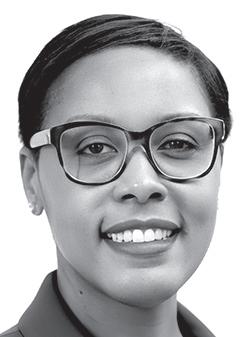
The administration has many descriptors for its mass firings of federal workers. Reductions in force. Restructuring. Reform.
The more accurate term is the word they don’t say out loud: racism.
“The principles on which our Government is based require a policy of fair employment throughout the Federal establishment, without discrimination because of race, color, religion, or national origin.” These words were the foundation of Executive Order 9980, signed by President Truman in 1948, which established fair hiring practices within the federal government. For decades prior, Black Americans seeking federal jobs encountered the typical discriminatory barriers to employment and fair wages. With these executive orders, however, the federal government was sending a long-overdue message to Black workers: You are welcome here.
The impact has been significant. Black Americans represent 13% of the U.S.
Since his second term began, President Trump has signed dozens of executive orders eliminating federal diversity, equity and inclusion initiatives. He has directed mass firings of career government employees, disproportionately targeting agencies where women and people of color make up the majority of staff. He seems to take particular delight in targeting Black women leaders, such as his persistent attempt to fire Federal Reserve Gov. Lisa Cook. It is no surprise that his political appointees are overwhelmingly white men. Alarm bells are going off in the private sector as well. In 2025, the unemployment rate for Black Americans has risen from 6.2% to 7.5%, with Black women bearing the brunt of the losses. Presidents are by no means responsible for every economic indicator, but this administration’s approach appears to have emboldened private actors.
President Trump appears determined to relegate Black Americans to the unemployment line. Driving Black professionals out of public service hurts the entire country.
I did not achieve my childhood dream of becoming the first Black woman to serve on the Supreme Court; that honor belongs to Justice Ketanji Brown Jackson. But my story shows what Black children and families can accomplish if we have the opportunities to match our ambition, the jobs to harness our talent and a president who rejects, rather than embraces, the racism that still holds us back.
Jamila K. Taylor, Ph.D., is president and CEO of the Institute for Women’s

By Jaidyn Mckinnie
American democracy is entering a dangerous stage of decline. While coverage focuses largely on the most recognizable signs of democratic backsliding, such as attacks on free speech and the use of state force against peaceful protesters, a quieter crisis is reshaping the foundation of representation itself.
Across the country, redistricting battles are being used to minimize the influence of Black voters and weaken the power and electability of Black legislators who represent them. These maps fracture diverse districts, erase majority-Black constituencies, and recast racial gerrymandering as partisan strategy.
Gerrymandering is the process of drawing legislative maps to favor one group over another. Partisan gerrymandering exists in both parties, but the distinction between partisan and racial gerrymandering is crucial. The latter targets voters based on race, undermining equal protection and silencing political voices that have historically been excluded. Today, partisan gerrymandering often serves as a facade for racial redistricting, allowing maps that weaken Black and Brown representation while appearing procedurally neutral.
The result is a democracy that technically counts every vote but ensures that some count for less.
Now, all eyes are on California, where the passage of Proposition 50 has become the first major test of how far states can go in countering gerrymandered maps. The measure introduces new electoral mechanisms for redrawing maps and is expected to offer an example of how other states approach redistricting and opposition efforts ahead of the midterms. While Black-centered organizations such as the NAACP have invested heavily in the measure, its potential impact on Black voting power remains uncertain, though analysts suggest it may strengthen Latino representation. Still, its outcome will shape national discourse on representation and determine whether state-level reforms can meaningfully alter the balance of power.
While some states experiment with expanding representation, the federal landscape is moving in the opposite direction by dismantling DEI programs, eliminating race-conscious hiring and purging staff in agencies that oversee civil rights enforcement.

These efforts to reshape representation operate through coordinated pressure on state and federal institutions. Republican-controlled legislatures in Texas, Missouri, North Carolina, Ohio and Florida have advanced or are seeking to advance maps that fracture diverse districts and erase Black-performing seats to manufacture partisan strongholds.
Gov. Mike Kehoe of Missouri approved new maps that work to unseat Rep. Emanuel Cleaver, one of the state’s two Black Congress members. His district, once a Black stronghold centered in Kansas City, is being divided among three predominantly white districts.
Similar redistricting patterns in Florida and Texas, where the districts of Reps. Al Lawson, Marc Veasey and Al Green, were dismantled, follow the same logic.
These efforts reveal a shift from engaging voters to reshaping the systems that define their representation.
Despite this, the Congressional Black Caucus is the largest it has ever been, reflecting decades of organizing and civic engagement that expanded voting access. But this progress is increasingly fragile. Gerrymandered maps that fracture Black communities and eliminate majority-Black districts weaken not only the ability of Black legislators to hold their seats, but also the capacity of Black voters to shape outcomes.
Voting power determines not just who wins elections, but whose communities receive investment, whose schools are funded and whose voices are heard in policy debates that shape everyday life.
The threat facing the United States is not only that democracy could fail, but that it could survive in form while dying in function. Ongoing efforts to manipulate representation risk creating a government that looks democratic but operates as a controlled system of exclusion.
To protect multiracial democracy, the nation must confront not only the authoritarianism of power, but the quiet redrawing of the lines that decide who holds it.
Jaidyn Mckinnie is a research intern at the Joint Center for Political and Economic Studies and a student at UCLA.
By Marc Morial
“This project is befitting of the legacy of greatness that so many Black New Yorkers have built here in Harlem. It is Black-owned in a time when we are being taught as if the words DEI are that of a slur, when in fact what they are is a representation of the fulfillment of the ideals that make so many proud to be New Yorkers.” — New York City Mayor-Elect Zohran Mamdani
Harlem has always been more than a neighborhood — it’s a symbol of resilience, creativity and the enduring fight for justice. This week, the National Urban League reaffirmed that legacy with the dedication of the Urban League Empowerment Center which does more than add bricks and mortar to the skyline. It sets a new standard for what inclusive development should look like in America.



its. The project is expected to generate over $300 million in economic activity, with a pledge to hire local residents, women and people of color. These jobs are being created with intention.
Perhaps the most profound element of the Empowerment Center is its role as a cultural and historical beacon.
In 2026, the Urban Civil Rights Museum will open its doors within the Center, becoming New York City’s first museum dedicated to the American civil rights movement. Unlike traditional narratives that focus on the South, this museum will spotlight struggles and triumphs in Northern urban environments. Through interactive exhibits and immersive experiences, it will invite visitors to become agents of change.

This is not development for development’s sake — it is development with purpose, and with passion. It is a bold declaration that equity and opportunity must be built into the very foundation of our communities.
The Empowerment Center is a vision realized. At its heart there are 170 units of affordable housing for families earning between 30% and 80% of the area median income. In a city where housing insecurity is rampant, this commitment ensures Harlem remains a place where working families can thrive. Among its residents will be young adults aging out of foster care, supported by The New York Foundling’s program — a population too often left behind.
The Empowerment Center also includes retail and office space for minority-owned businesses and nonprof-
The Center also houses the Whitney M. Young Center for Leadership and partners with cultural institutions like the Studio Museum in Harlem and the United Negro College Fund. Soon, organizations such as 100 Black Men of New York and Jazzmobile will join this vibrant hub. This development will weave together housing, culture, education, and economic empowerment.
In today’s climate, where civil rights protections are under siege and diversity initiatives face relentless attacks, the Empowerment Center stands as a defiant answer. It says: We will not be erased. Our history matters. Our communities deserve investment — not neglect. It is a physical manifestation of the Urban League’s enduring mission: to be a bridge between aspiration and achievement, policy, and people.
As we look toward America’s 250th anniversary, this project offers a blueprint for what inclusive development can — and should — be. It is not just Harlem’s triumph. It is a national call to action.
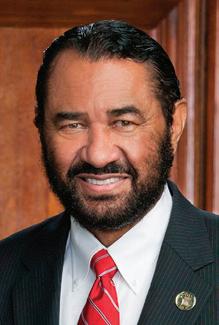
By Kenya Vaughn St. Louis American
The St. Louis chapter of the National Association of Black Journalists celebrated excellence, legacy and the power of Black storytelling at its 12th Annual Living Legends Honors on Nov. 15 at Saint Louis University’s Il Monastero Banquet Center.
NABJ-St. Louis this year honored Gloria Ross, a veteran public relations professional; Mike Claiborne, a St. Louis Cardinals radio broadcaster; Shirley Washington, a longtime TV anchor and reporter; and Reginald Riddle-Young, a veteran journalist at the East St. Louis Monitor.
“Tonight is about honoring those who have blazed trails with leadership, courage and commitment to our craft,” chapter President Latonya Yarbro said during her opening remarks.
The event began with a procession of former honorees, including St. Louis American Publisher Dr. Donald M. Suggs and photographer Wiley Price. Past legend Sharon Stevens offered a tribute to two recently departed members, Linda Lockhart and Ron Harris.
“It is because of her and other living legends why we do what we do,” Stevens said of Lockhart.
Dr. Rochelle Smith, of Saint Louis University, highlighted the broader role Black journalists play in shaping public understanding.
“Black journalists have long carried responsibility larger than the newsroom — documenting our joys, our struggles, our resistance and our triumphs,” said
Smith, the university’s vice president for diversity and innovative community engagement. “When Black journalists speak, America sees itself more fully, more honestly and more beautifully.”
Recently retired KSDK news director Art Holliday, a 2018 Living Legend, served as emcee. He saluted the honorees as “pillars that have shaped our profession and our community.”
NABJ Region II Director Angela Smith also offered greetings and thanked attendees for “paving the road for us and for the journalists still to come.”
The chapter recognized several recent alumni of its long-running Minority Journalism Workshop, and proceeds from the ceremony support the event, which gives high school students hands-on newsroom experience.
St. Louis American Executive Editor Rod Hicks delivered the evening’s keynote address. He said his conversations with the honorees revealed four distinct themes — each raised by a different recipient: proving their worth, preparing for the unexpected, cutting through misinformation and showing humanity in difficult moments.
“They reminded me that many of us have spent our careers proving our worth in spaces that did not always expect us to excel,” Hicks said. “They underscored the need to be ready for anything … and highlighted the compassion required when we sit with people on the worst day of their lives.”
He encouraged journalists to “protect the truth in a world that keeps trying to bury it” and to “show up with humanity that earns trust.”
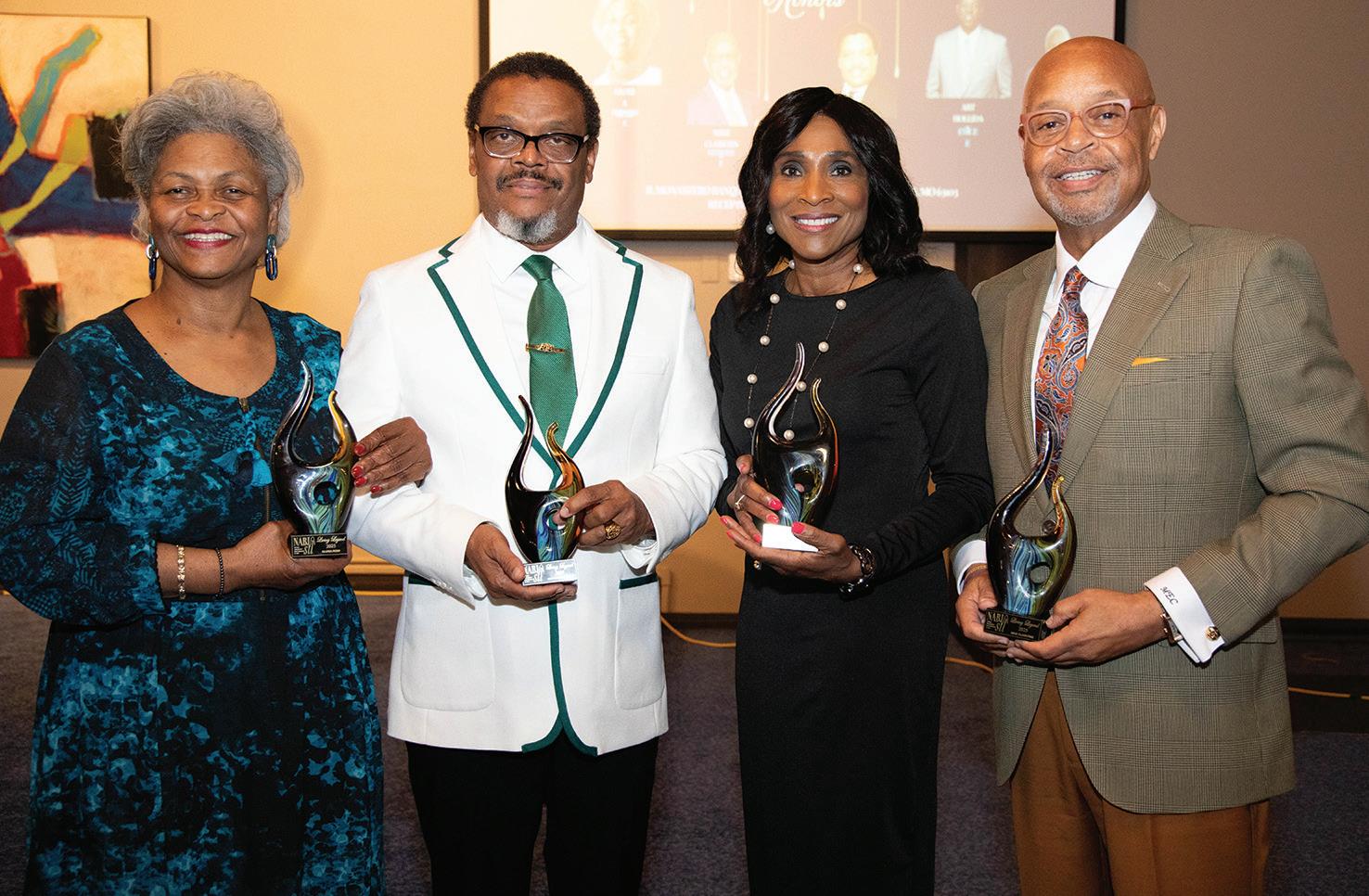
Riddle-Young was introduced by past honoree Adella Jones, who praised him as “Mr. East St. Louis.” Riddle-Young framed his remarks around service.
“The adventure of life is to learn. The nature of life is to change. The challenge of life is to overcome and the essence of life is to care,” he said. “The purpose of life is to grow, but the opportunity of life is to serve — the most important work any human can do is to serve.”
He added: “Our role is to keep the public informed, hold power accountable and give voice to the voiceless. We are ethically obligated to ensure truth.”
KMOV anchor Maurice Drummond introduced Claiborne, a longtime sports broadcaster and former St. Louis
American columnist, calling him “an ultimate five-tool player in a tough and ever-changing competitive world of broadcasting.”
Drummond noted that Claiborne has succeeded across radio, television, print and digital media.
“Mike’s smooth voice and easy delivery during his magnificent career in sports has provided some of the most compelling and important interviews from some of the greatest figures in the history of sports,” he said.
“But Mike has also given a voice to the everyday man and woman.”
Stevens introduced Ross, praising her meticulous and often behind-the-scenes contributions. Ross is widely known for her beautifully written obit-
uaries.
“My work is not just about documenting death,” Ross said. “It is honoring a life.”
She added that Black journalists play a crucial role in telling stories that might otherwise be overlooked. “Nobody else is going to tell our stories,” she said.
Veteran Fox 2 anchor Shirley Washington was introduced by past honoree Bonita Cornute, who lauded her professionalism and preparation. Washington, who began her career as a photographer and video editor, reflected on her journey through newsrooms across the country before returning home to St. Louis.
“I grew up watching phenomenal women who were remarkable at their craft,” she said, naming Stevens and Robin Smith. “And the beautiful thing is that they looked like me.” Washington emphasized the importance of representation in broadcast news. “Young girls who look like me watch the evening news and realize something significant: ‘I can do that too,’” she said. “It has been an incredible journey, and this has been an amazing night.”
The ceremony underscored the enduring influence of Black journalists in St. Louis and beyond — storytellers who have shaped local narratives, defended truth and uplifted their communities.
As Hicks reminded the audience, the honorees’ legacy endures not only in what they achieved but in the standards they set for the profession: resilience, preparation, compassion and service.

At Christian Hospital, we’re known for clinical excellence. When you choose us for your care, you’ll benefit from access to BJC HealthCare, including BJC Medical Group and WashU Medicine physicians, and the nationally recognized cancer care provided by Siteman Cancer Center.
Our award-winning care in your neighborhood doesn’t stop there. We’ve expanded services, upgraded technology, and added providers to better support your health.
preventive

Commentary

Vehicles lined up before dawn for the annual Urban League of Metropolitan St. Louis annual turkey and trimmings giveaway. Volunteers stood ready to load cars in 2023 and this year’s event, from 1 to 3 p.m. Tuesday, Nov. 25, arrives as many St. Louis families are still dealing with the aftermath of the May 16 tornado and temporary suspension of SNAP benefits.
The Urban League of Metropolitan St. Louis has met the challenge of helping feed St. Louis area families since the May 16, 2025, tornado, and during the suspension of SNAP benefits during the government shutdown.
While the storm was six months ago and SNAP benefits have resumed, many households are still struggling to rebound from weeks of uncertainty, compounded by the lasting effects of tornado recovery.
The Urban League held a special Saturday distribution event on Nov. 15 at its N. Kingshigway headquarters and it will hold its annual turkey and dinner fixings from 1 to 3 p.m. Tuesday Nov. 25, two days before Thanksgiving.
Nearly 2,000 free turkeys will be distributed to needy area residents through support of TIAA Bank and Schnucks Supermarkets.
“We are very thankful to TIAA Bank for agreeing to support the Turkey Giveaway, which has helped thousands of needy families to have Thanksgiving Dinner over the years,” said Michael P. McMillan, president and CEO of the Urban League of Metropolitan St. Louis.
“TIAA Bank is proud to support the communities in which we work and live,” said Joseph Hernandez, TIAA Bank senior vice president and CRA officer.
“The Urban League of Metropolitan St. Louis is making a difference in so many lives, and we’re honored to team up to make an even bigger impact.”
McMillan added, “We remain committed to stabilizing families and communities during this challenging time.”
To support the Urban League’s Humanitarian Disaster Relief Fund, please visit www.ulstl.com
By Maxine Bryant
In the United States, three powerful myths — the story of Columbus discovering America, the First Thanksgiving, and the Southern Strategy — have constructed a picture of power.
Each was a strategic invention, designed to make domination look like destiny, violence sound like virtue, and inequality feel like heritage.
Historically, America has strategically constructed stories that cast it as a bright light. It’s time to be just as strategic in our truth-telling as those who built the lies.
The Columbus myth
The story goes that a brave explorer “discovered” a new world and opened the path to civilization. But that tale of discovery is really a story of erasure. Indigenous peoples had lived across the Americas for tens of thousands of years, building vast, complex societies. By calling their lands “discovered,” Europe declared them empty, available, and waiting to be claimed.
moral story. The myth of peaceful coexistence became a symbol of national virtue.
Thanksgiving, then, was not simply a holiday — it was a strategic cleansing of colonial guilt. It taught that America’s beginnings were humble, cooperative, and blessed by God — not built on displacement and genocide.
The Southern Strategy: Inventing division If Columbus created legitimacy and Thanksgiving created innocence, the Southern Strategy created control.
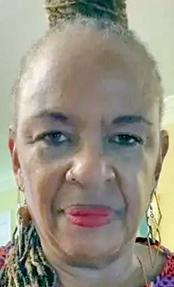
Maxine Bryant
That was no accident. The Columbus myth transformed invasion into heroism, conquest into progress, and genocide into God’s plan.
The Thanksgiving myth Fast-forward to 1621 and a familiar image: Pilgrims and Native Americans sitting together in gratitude and peace, the supposed birth of American friendship and faith. But the real story is far more complex — and far more revealing.
The Wampanoag people, led by Massasoit, joined the feast not as honored guests but as concerned neighbors. Hearing gunfire from the settlers, they came to investigate, not to celebrate. Their nation had been ravaged by a Europeanborne epidemic. That gathering was not a religious celebration and did not mark the start of lasting peace. Within decades, the alliance collapsed in war and blood.
Two centuries later, in 1863, Abraham Lincoln declared Thanksgiving a national holiday amid the Civil War. His goal was to unify a fractured nation under a shared,
After the Civil Rights Movement dismantled Jim Crow laws in the 1960s, political strategists faced a challenge: how to preserve white political power in a newly desegregated America. The answer was familiar — change the story.
Instead of open racism, they spoke of “states’ rights,” “law and order,” and “family values.” Confederate symbols were rebranded as “heritage.” Economic inequality became “personal responsibility.” Racial resentment was coded as patriotism.
Perfected by Presidents Nixon and Reagan, this strategy redefined who “real Americans” were — and who was taking their country away. It didn’t just divide; it mythologized division, convincing millions that protecting privilege was defending freedom.
It’s not enough to correct these myths with facts. We must be as strategic in truth-telling as those who built the lies. Our counter-narratives must do what theirs did: move hearts, shape identity, and make justice feel like destiny. I stand on the African proverb: Until the Lion tells the story, the hunter is always the hero. Now is the time to tell truth strategically and boldly. If myths helped build America, then truth — strategically told — can rebuild it.
Maxine Bryant, Ph.D., is the founder of GriotSpeaks, author, and African American culture keeper.

here always seems to be a never-ending list of tasks during the holiday season, from booking flights to purchasing gifts for loved ones. As you prepare for the holidays, it’s also critical to keep an eye out for online scams that aim to steal your money and your joy.
Nationally, nearly 1 in 3 consumers reported falling victim to an online scam during the 2024 holiday season, and Missourians have lost more than $137 million to fraud and scams just last year, according to the Federal Trade Commission. Scams are becoming increasingly more sophisticated, making them more convincing and harder to detect.
“The holidays are scammers’ busy season. From fake travel websites and false package delivery messages to phony charity donations, scammers take advantage of people’s spirit of generosity and bustling holiday schedule,” said Diedra Porché, National Head of Community and Business Development at JPMorganChase. “Your best defense to protect yourself and loved ones is to stay educated on common and emerging scam tactics.”
This month, Chase will host over 20 fraud and scam education workshops across the country in coordination with local law enforcement and other local partners. These workshops, which are free and open to the public, aim to educate the public on recognizing scams and empowering individuals with the knowledge and tools they need to protect themselves. Chase hosts over 1,000 fraud and scam education workshops per year across its more than 5,000 branches.
Don’t let the threat of scams dampen your celebrations. Consider the following tips to help you celebrate safely.


Mentoring program Backpack to Briefcase honored for guiding students on right path
By Zaria Mac St. Louis American
A. McDonald entered the Backpack to Briefcase program as a psychology major at Southern Illinois University Edwardsville unsure of how she would bridge the gap between college and fulltime work. By graduation, she had a job lined up and, with the help of several scholarships, no student loan debt.
“It allowed me to form a connection where I was able to have a job right out of college, and I still work for them now.”
– A. McDonald
“It allowed me to form a connection where I was able to have a job right out of college, and I still work for them now,” she said. “In Backpack to Briefcase, you are getting so much information that’s beneficial to you. I was able to gain more information that I can use later in interviews and just the professional setting as a whole.”
She said she received several scholarships “and was able to leave my college journey without any student loan debt.”
McDonald’s experience is one example of how the St. Louis-based mentorship and scholarship program has supported students over the past 16 years. The initiative, co-founded by Larry Blue and Kendra Neely-Gage, was recently recognized by the NAACP St. Louis Branch with its Next Generation Trailblazer Award, honoring programs that support educational and economic

Kendra Neely-Gage and Larry Blue are co-founders of the Backpack to Briefcase Scholarship and Mentoring Program, which helps prepare students to transition from school to their careers.
advancement.
“This award comes with accountability and responsibility that I don’t take lightly,” said Neely-Gage, executive director of the program. “To be recognized by the NAACP, knowing the organization’s history and the leaders they’ve celebrated, took my breath away.”
Blue and Neely-Gage, both first-generation college graduates, say their own
experiences navigating higher education and early careers influenced how they shaped the program. “You have a walking example in both of us,” Neely-Gage said. “We figured it out the hard way, and now we’re sharing those lessons.”
Backpack to Briefcase began in 2009 as a small project aimed at helping stu-

associate director of corporate support for WSIE 88.7 The Sound FM, recently received the African American Radio Pioneer Award and was inducted into the 2025 class of the National Black Radio Hall of Fame at the Renaissance Hotel in St. Louis. Boyce has a 45-year career working in radio for several signals in St. Louis. She has also worked in radio, television and the film industries across the country.
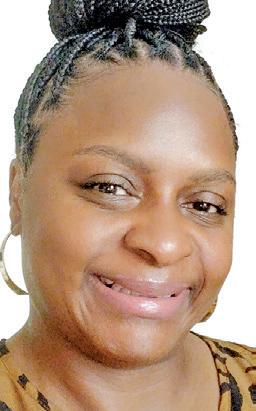
St. Louis Public Schools Interim Superintendent Dr. Myra Berry has named Laterica Williams as interim executive director of human resources. Williams brings more than a decade of progressive experience in human resources leadership and organizational management, eight years of which have been with SLPS. She holds both bachelor’s and master’s degrees in human resources management from Lindenwood U.
Continued from A5
When you have so many gifts to buy, you’ll want to look for bargains. However, make sure that the discounts you’re offered are legitimate.
Scammers often lure buyers with massive discounts, especially on popular and sold-out items, often using fake websites or social media ads. If you think, “this deal is too good to be true,” listen to your gut. It’s likely a scam.
When shopping online or on social media, make sure to only buy from trusted websites and vendors. Review the website’s URL and ensure that it starts with “https://” (the ‘s’ stands for secure) as scammers can create fake websites to look like legitimate retailers. If you’re unfamiliar with a store, search for the name with terms like “scam,” “complaints,” or “reviews” to uncover any red flags.
Be especially cautious when making purchases from social media marketplaces. Always verify the
Continued from A5
dents move from campus into the workplace. It has since served more than 600 participants and awarded more than $250,000 in scholarships in Missouri, Illinois and Kansas. Its workshops focus on resume writing, interviewing, professional etiquette and other skills students often learn informally or after entering the work-

product exists before purchasing and use payments with purchase protections, like a credit card, to pay. Gift card scams typically begin with outreach from a scammer, often pretending to be someone else, who urgently pressures victims into buying specific gift cards and sharing the card numbers and PINs. Scammers use various stories, such as pretending to be government officials, tech sup-
force.
“What we teach works across all ethnic groups, socioeconomic backgrounds, and genders,”
Neely-Gage said. “We don’t care about your GPA, your major, or your race. If you’re enrolled in a university and ready to learn, you’re welcome.”
Blue, who chairs the program’s board, said they try to expose students to working professionals who can offer practical guidance. “These are
port, friends or family in emergencies, prize promoters, utility companies or online romantic interests.
Remember: Legitimate organizations will never demand payment by gift card, and requests for gift card payments are a sign of a scam.
How you pay matters
Not all payment methods offer purchase protection. When buying gifts
transferable skill sets you can take anywhere,” he said. “From negotiating your salary to mastering LinkedIn or leveraging AI — our students walk away with real world experience.”
He added that some students secure internships or early job offers through connections made in the program. Others have gone on to fields such as media, business and entrepreneurship.
for the holiday season, consider using your debit and credit cards, as they may provide protections that allow you to dispute a charge if you don’t receive what you paid for or it’s not as you expected. If you purchase something using payment methods like Zelle, wire transfers, gift cards or cash, and it turns out to be a scam, it’s unlikely you’ll get your money back. Only use Zelle to pay others you
Neely-Gage said the program prioritizes softskill development as much as scholarship support.
“It’s not about the money,” she said. “It’s about the soft skills and the mentorship we hone in on. We teach students how to command a room, tell their story, and be comfortable with their most authentic selves.”
The two founders divide responsibilities — Neely-Gage works closely with universities
Gift card scams typically begin with outreach from a scammer, often pretending to be someone else, who urgently pressures victims into buying specific gift cards and sharing the card numbers and PINs.
know and trust.
Seek out free resources
Give yourself peace of mind while shopping by using digital tools to monitor your personal information. For example, Chase Credit Journey offers free credit and identity monitoring. This includes alerts to let you know if your data is exposed in a data breach or on the dark web. You don’t have to be a
and builds the curriculum, while Blue focuses on employer partnerships and programming that connects students with industry professionals.
For Blue, the NAACP award carried some personal meaning. “It’s a full-circle moment,” he said, recalling that NAACP St. Louis Branch president Adolphus M. Pruitt once mentored him as a college student. “I never imagined that 30 years later, I’d be recog-
Chase customer to use it.
To learn more about how to help protect yourself from scams this holiday season, visit Chase. com/Security
For informational/ educational purposes only: Views and strategies described in this article or provided via links may not be appropriate for everyone and are not intended as specific advice/recommendation for any business. Information has been obtained from sources believed to be reliable, but JPMorgan Chase & Co. or its affiliates and/or subsidiaries do not warrant its completeness or accuracy.
The material is not intended to provide legal, tax or financial advice or to indicate the availability or suitability of any JPMorgan Chase Bank, N.A. product or service. You should carefully consider your needs and objectives before making any decisions and consult the appropriate professionals.
Outlooks and past performance are not guarantees of future results.
JPMorgan Chase & Co. and its affiliates are not responsible for, and do not provide or endorse third party products, services, or other content.
Deposit and credit card products provided by JPMorgan Chase Bank, N.A. Member FDIC.
nized by him.”
As the program continues to grow, its leaders say the goal remains steady: helping students transition from school to work with more confidence and support than many of them had starting out.
“The best will rise in the right environment,” Neely-Gage said. “And our mission is to make sure that environment exists — right here in St. Louis and beyond.”


By Willy Blackmore Word in Black
It’s by no means new news that there are myriad ways that extracting and burning fossil fuels — or making them into other products, like plastics — is bad for public health, and particularly so for Black and Brown Americans. But we still continue to burn methane, and gasoline, and even coal, so the point bears being made again (and again).
The latest to do so is a broad coalition of medical and health organizations that released a new report last week titled “Fueling Sickness: The Hidden Health Costs of Fossil Fuel Pollution.”
It makes the case that society’s ongoing reliance on fossil fuels is severely damaging public health already — particularly demographics overburdened by such pollutions, including Black and Brown Americans — and that it will only get worse as the effects of climate change get worse.
“Fossil fuels harm our health in more ways than most people realize,” Dr. Mark Vossler, board president at Physicians for Social Responsibility, one of the organizations that put out the report, said in a statement.
“This report makes it clear that every stage of the fossil fuel process, from extraction, to transportation, to burning for energy causes widespread damage to the heart, lungs, brain and other organs. Rapidly transitioning away from fossil fuels is not just an environmental necessity; it’s a public health imperative.”
A disproportionate burden
“Fueling Sickness” shows that fossil fuel pollution is everyone’s problem while also making it clear that it is even more of a problem for some groups, including Black Americans.
By Jennifer Porter Gore Word in Black
After going dark for more than 40 days, causing anti-hunger programs to run out of money, the federal government is back open, and food benefits are being reinstated nationwide for low-income families. But there are still dark clouds on the horizon for the tens of millions of Americans who rely on the government to keep from going hungry.
won’t stop the $187 billion in planned cuts to the Supplemental Nutrition Assistance Program, known as SNAP, over the next 10 years.

On Friday, nearly 1,500 national, state and community-based organizations sent a letter to Congress urging them to pass a bipartisan bill to reverse those cuts to SNAP funding. Several House and Senate Democrats are introducing the bill, which would repeal the unprecedented cuts mandated in the massive budget bill President Donald Trump
Society’s
That’s because the bill that ended the longest government shutdown in history,
A8
Important tool in obtaining valuable information now
By Dr. Graham A. Colditz
Of the many advances in science and technology over the past 25 years, genetic testing is arguably one of the most notable. Once a rare part of health care, it is now becoming much more common. And it’s possible that someone you know — or maybe even you — has had it done. Most often, people get genetic testing to settle curiosity about which parts of the world their ancestors may have come from or to connect with relatives from other branches of their family tree.
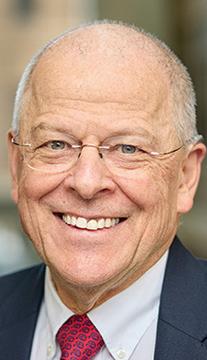
But genetic testing can also reveal important information about our health, including the risk of cancer.
“Genetic testing for cancer risk uses a saliva sample or blood sample to look for changes in specific genes — or pieces of DNA — that are associated with increased risk of certain types of cancers,” said Erin Linnenbringer, a board-certified genetic counselor and associate professor at Washington University School of Medicine in St. Louis.
Genetic testing can eveal important information about our health, including the risk of cancer.
There are many genes that are related to cancer. Two of the most well-known examples are BRCA1 and BRCA2, Linnenbringer added. Women with harmful changes — known as “variants” or “mutations” — in these genes have a much greater risk of developing breast, ovarian and pancreatic cancer. Men with these mutations also have a greater risk of breast and pancreatic cancer as well as prostate cancer.
While most gene mutations don’t increase cancer risk as much
Continued from A7
“A complex array of interconnected factors (including but not limited to historical redlining, lending discrimination, exclusionary land use policies, disinvestment and urban renewal projects) have resulted in low income and communities of color disproportionally living in areas with a greater concentration of polluting sources, like highways and factories, and thus have greater exposure to multiple pollutants from multiple sources,” the report reads.
“As a result, a higher percentage of racial minorities are exposed to particulate matter and ozone, contributing to a greater incidence of childhood asthma and other respiratory conditions.”
As the report notes, fossil fuels harm public health at every point of their production and use cycle, from extraction to refining to transportation to combustion — and the waste products made along the way, like coal ash, can make people sick, too.
Continued from A7
signed into law in July. For the first time, states will be forced to pay a share of SNAP benefits, a requirement that could increase their costs up to 75%. States will have to stretch already tight bud-

Respiratory diseases like asthma are some of the most obvious effects of breathing polluted air. Fine particulate matter and other emissions generated by extracting and burning fossil fuels can damage other parts of the body,
gets — likely by slashing the number of families they can feed.
Roughly 42 million people who face hunger or food insecurity receive monthly SNAP benefits. Almost 28% of SNAP participants — approximately 10.2 million people — are Black. Participants receive an average of $187 a month.
too, including the cardiovascular system and the brain, increasing the risk of neurological diseases.
Like so many of the negative consequences of fossil fuel pollution, the neurodegenerative effects are not evenly felt. “The neurocognitive harms of fossil fuel pollution disproportionately impact
The anti-hunger advocates who wrote to Congress argue that the upcoming SNAP budget cuts are the largest in history and will result in more Americans going hungry.
Crystal FitzSimons, president of the nonprofit Food Research & Action Center, says the SNAP cuts “will reverse
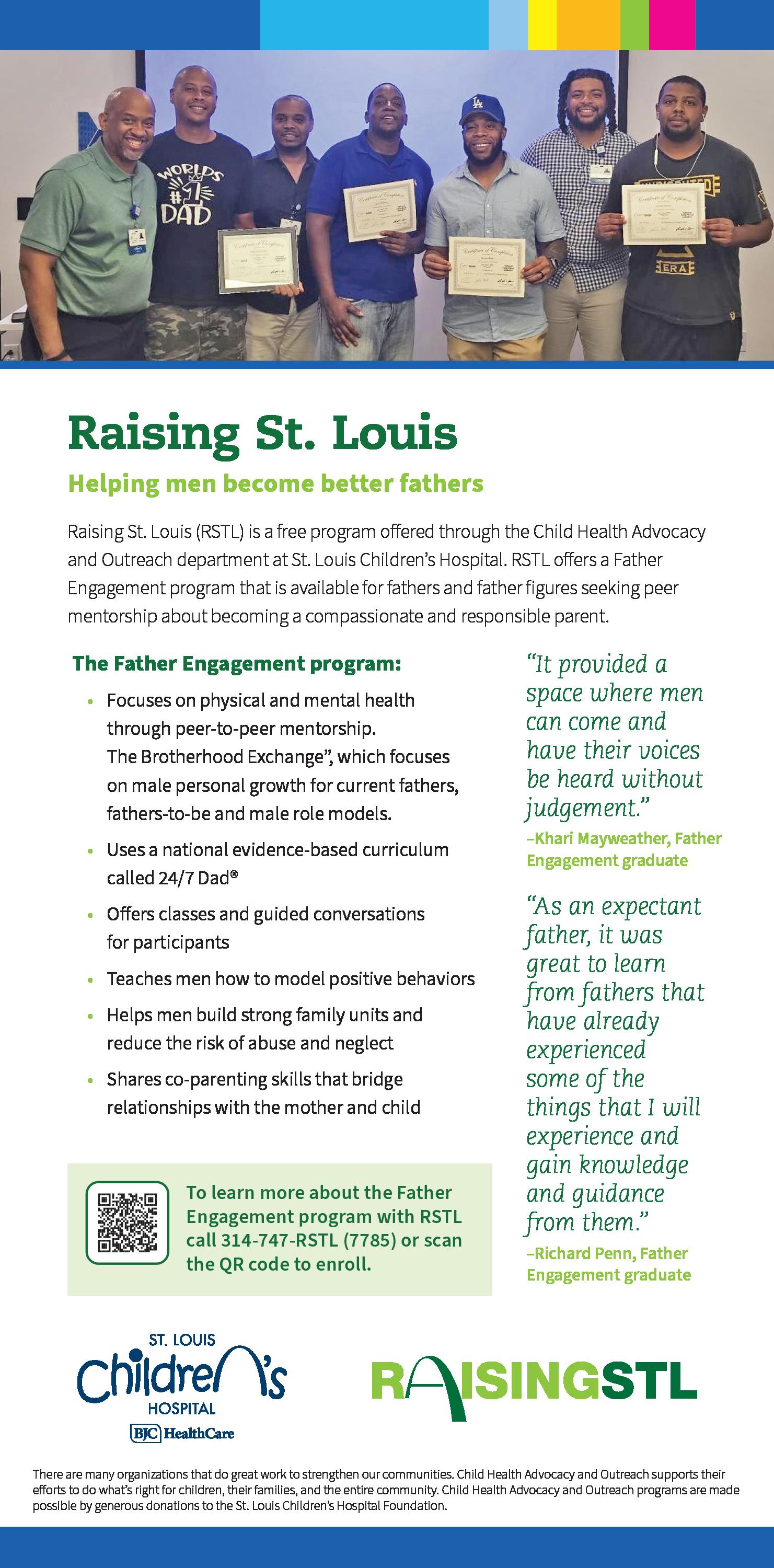
Fossil fuels harm public health at every point of their production and use cycle, from extraction to refining to transportation to combustion — and the waste products made along the way, like coal ash, can make people sick, too.
children, older adults and communities already facing environmental and health inequities. People living near busy roadways, diesel truck routes or polluting industries are exposed to higher levels of PM2.5 and other air pollutants. These communities are more likely to be low-income or communi-
decades of progress in the fight against hunger in America.”
If nothing is done, states “will be forced to radically cut the number of eligible families receiving food assistance, or find other ways to cut spending or increase taxes,” she says. “If states can’t pay the tab, they will be forced out of SNAP entirely, eliminating SNAP for everyone who is eligible. These cuts simply cannot stand.”
The nonpartisan Congressional Budget Office, which conducts financial analysis of Capitol Hill legislation, estimates that around 4 million people — including children, older adults, veterans, and individuals with disabilities — will see their food assistance taken away or cut substantially under the budget.
Since its inception in the 1960s, experts have said SNAP has become the nation’s most effective anti-hunger program. Studies show it can reduce
Continued from A7
as those in BRCA1 and BRCA2 can, they can still have an important impact. And knowing that can help with managing the increased risk from a mutation.
Screening tests or regular health exams can begin at younger ages and be done more often, which can help find a cancer earlier when it’s more treatable. And, for some types of cancer, medication, surgery or screening can even help prevent the disease.
Right now, this type of genetic testing is typically ordered through a health-care professional and is done in people who have had cancer or have a strong family history of cancer.
“People who are diagnosed with an adult-onset cancer at a young age, such as having breast cancer before the age of 40, who have been diagnosed with an aggressive or latestage cancer, or who have certain types of rare cancers, like ovarian cancer or pancreatic cancer, should consider having genetic testing,” Linnenbringer said. “The same is true if you have more than one
ties of color, compounding the risks.”
Similarly, mental health, kidney health, hormonal health, and reproductive health are all also negatively affected by fossil fuel pollution.
According to the report, “one of the strongest associations between air pollution and negative birth
a family’s risk of food insecurity by almost 30% and help keep millions of children above the poverty line.
SNAP also helps boost local economies: in 2023, the program accounted for nearly 10% of the roughly $1.4 trillion in gross revenue supermarkets generated that year.
But the program’s benefits lapsed Nov. 1 during the longest government shutdown in U.S. history, putting pressure on food banks and social service agencies and forcing millions of people to scramble for food.
The shutdown ended Nov. 12 when seven Democrats and one independent voted with Republicans to fund the government. Trump immediately signed the bill.
New rules could end food assistance for millions
But reversing the forthcoming SNAP cuts law won’t be easy.
relative on your mom’s or dad’s side of the family who has had cancer, or if your parent, brother or sister was diagnosed with cancer at a young age.”
If you have concerns about your family history and cancer risk, the first step is often sharing that with your health-care provider. “They may be comfortable reviewing your family history and ordering an appropriate genetic test, or they may refer you to a genetic counselor or other specialist,” Linnenbringer said. “You can also search for a counselor near you, at findageneticcounselor. nsgc.org.”
Genetic counselors are a great resource for thinking through the elements that go into deciding if genetic testing is right for you. “They are health-care professionals with specialized training in both genetics and patient communication and counseling,” Linnenbringer said.
In addition to assessing cancer risk from your personal and family history, genetic counselors can also help with considering the implications of testing that might not immediately come to mind. This can include its possible effect on life insurance and emotional health, as well as other family members —
outcomes like low birth weight and preterm birth are with power plants and petrochemical industries” — facilities that Black Americans are much more likely to live alongside than other people are. The Physicians for Social Responsibility collaborated with a number of organizations, too: Alliance of Nurses for Healthy Environments, Children’s Environmental Health Network, Climate Psychiatry Alliance, Climate Psychology Alliance North America, The International Society for Environmental Epidemiology North America Chapter, The Medical Society Consortium on Climate & Health, Medical Student for a Sustainable Future, the National Medical Association, Oncology Advocates United for Climate and Health, and the Public Health Institute. There is at least some good news about the damage to public health that is being done by fossil fuel pollution, including in Black and Brown communities: we know how to stop it. As the report puts it, “the most powerful health protection strategy is to reduce climate pollution by transitioning away from fossil fuels.”
Among the other changes the budget makes to SNAP are work requirements for families with children aged 14 or older, older adults aged 55 to 64, and military veterans. In 12 states, the program will also restrict the foods families can purchase with SNAP. Ty Jones Cox, vice president of food assistance at the nonprofit Center on Budget and Policy Priorities, said the cuts “will raise families’ grocery costs, taking food assistance away from millions of people, including children and veterans, and forcing unaffordable costs on states.” When states can’t carry the financial burden, “they would be left with two choices — take SNAP benefits away from large numbers of people or end their SNAP programs entirely,” Cox said. “Congress must reverse course to prevent a hunger crisis of our own making.”
who may have the same mutations that your testing could find.
If you don’t have a good idea of your family health history, the upcoming holidays can be a fantastic opportunity to connect with family members and get more details. Try to find out the types of cancer any relatives may have had, and around what age they were diagnosed.
It can also be helpful to know if any have had genetic testing. This may not always be the easiest conversation, but it can be worth the effort — providing valuable information about whether genetic counseling or genetic testing may make sense. Looking to the future, Linnenbringer feels the benefits of genetic testing will likely only increase as we learn more through continued research and expanded testing across a wider range of people.
Dr. Graham A. Colditz, associate director of prevention and control at Siteman Cancer Center at Barnes-Jewish Hospital and Washington University School of Medicine in St. Louis, is an internationally recognized leader in cancer prevention.
Cardi B welcomes baby number four, first with Stefon Diggs

Rap star Cardi B welcomed her fourth baby, a boy. A rep for Cardi confirmed the news to PEOPLE on November 13. “Cardi is healthy and happy,” the rep said, according to PEOPLE.
The new addition is Cardi’s first child with her boyfriend, NFL star Stefon Diggs. Cardi also shared the news on Instagram in the caption of a video where she lip-syncs “Hello,” from her recently released sophomore studio album “Am I the Drama?.”
Diggs revealed the baby’s gender on a red carpet earlier this month. “It’s a boy. That’s enough for me,” he said. “I can’t wait to make him do push-ups and sit-ups and run around.”
The Grammy-winning artist rapper shares three children – Kulture, Wave and Blossom — with her estranged husband, rapper Offset. She filed for divorce him in July 2024, four years after first filing in 2020. The divorce it is yet to be finalized.
Lil Nas X said to be thriving in treatment
Two months ago, rapper Lil Nas X checked into a treatment facility after he was arrested for battery against a police officer in Los Angeles. His detainment came as a result of reports that a man was walking down the street in his underwear and exhibiting erratic behavior.
Paris Jackson suffers legal blow in battle with Michael Jackson’s estate
Last month Paris Jackson filed a petition to remove the executors of Michael Jackson’s estate after accusing them of skimming money.
According to PEOPLE, her attempt to challenge the executors managing her father’s vast estate has suffered a setback — and a court order that leaves her responsible for paying some of the estate’s attorneys’ fees.
Los Angeles Referee Mitchell L. Beckloff, a retired judge specially appointed to decide the dispute, granted the estate’s special motion to strike portions of Paris’ petition on Monday, Nov. 10, siding with executors John Branca and John . According to PEOPLE, the decision found that many of her legal claims targeted the estate’s own court filings, meaning they received special deference under California’s anti-SLAPP statute. The statute shields much legal petitioning activity from retaliatory lawsuits.

According to Us Weekly Magazine, The rapper, whose real name is Montero Lamar Hill, showed up to court this week wearing a brown leather jacket, beige pants and cowboy boots.
While the judge ultimately postponed the hearing until March 2026, Lil Nas X’s attorney Drew Findling shared a brief update outside the courtroom.
“As you can see, Montero is doing amazing, doing great and we are super happy for him,” Findling told Us Weekly and other reporters. “We’re just looking forward to a positive resolution in this case, which we’re very confident of.”
The ruling disposes of a portion of Paris’ filing.
Rod Wave says arrest was result of racial profiling
Earlier this week, singer Rod Wave was arrested on possession of a controlled substance and weapons charges after a traffic stop in Atlanta.
According to CBS News, Wave’s legal team claims he was the victim
In a statement to CBS News Atlanta, the rapper’s attorneys said that Wave, whose real name is Rodarius Marcell Green, was “unjustly profiled and unlawfully arrested in Atlanta.” Attorneys Drew Findling, Zach Findling, and Marissa Goldberg also claimed that Wave was a victim of the Atlanta Police Department’s Crime SupPression Unit’s “quota-driven approach” to arrests.
“We look forward to vigorously challenging this baseless arrest and the clear violations of Mr. Green’s rights in court,” the attorneys wrote, according to CBS News.
Sources: People.com, Us Weekly, CBS News

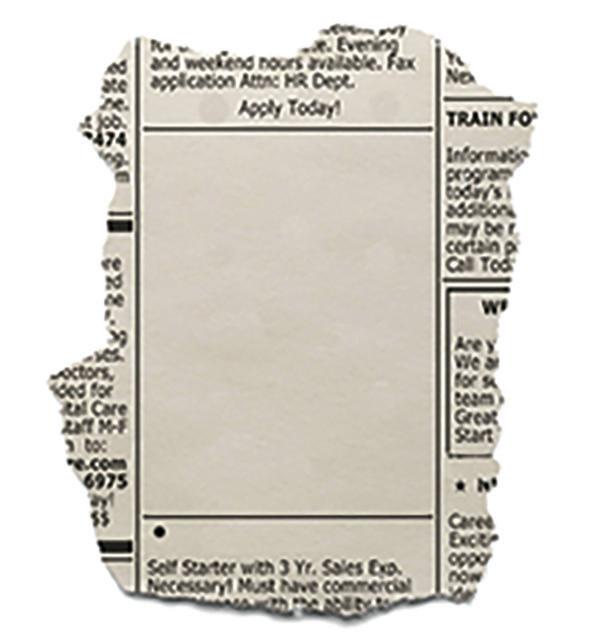











The St. Louis American’s award winning NIE program provides newspapers and resources to more than 8,000 teachers and students each week throughout the school year, at no charge.
Louis American’s award winning NIE program offers newspapers and resources to St. Louis area teachers and students each week throughout the school year, at no charge.
Questions or comments? Contact Cathy Sewell csewell@stlamerican.com or 618-910-9551
Questions or comments? Contact Cathy Sewell csewell@stlamerican.com or 618-910-9551



Students from the St. Louis American Summer Science Academy practice using a compass to navigate and investigate locations.
Teachers,
Students Aariyah Thompson and Savannah Fisher, in Ms. Stovall’s firstgrade class at Gateway MST Elementary School, are learning how to construct a series circuit.
Students at The American’s Summer Science Academy work in teams to discover the many different computer programming languages.
Teachers, if
program and would like to nominate your class for a Classroom Spotlight, please email: csewell@stlamerican.

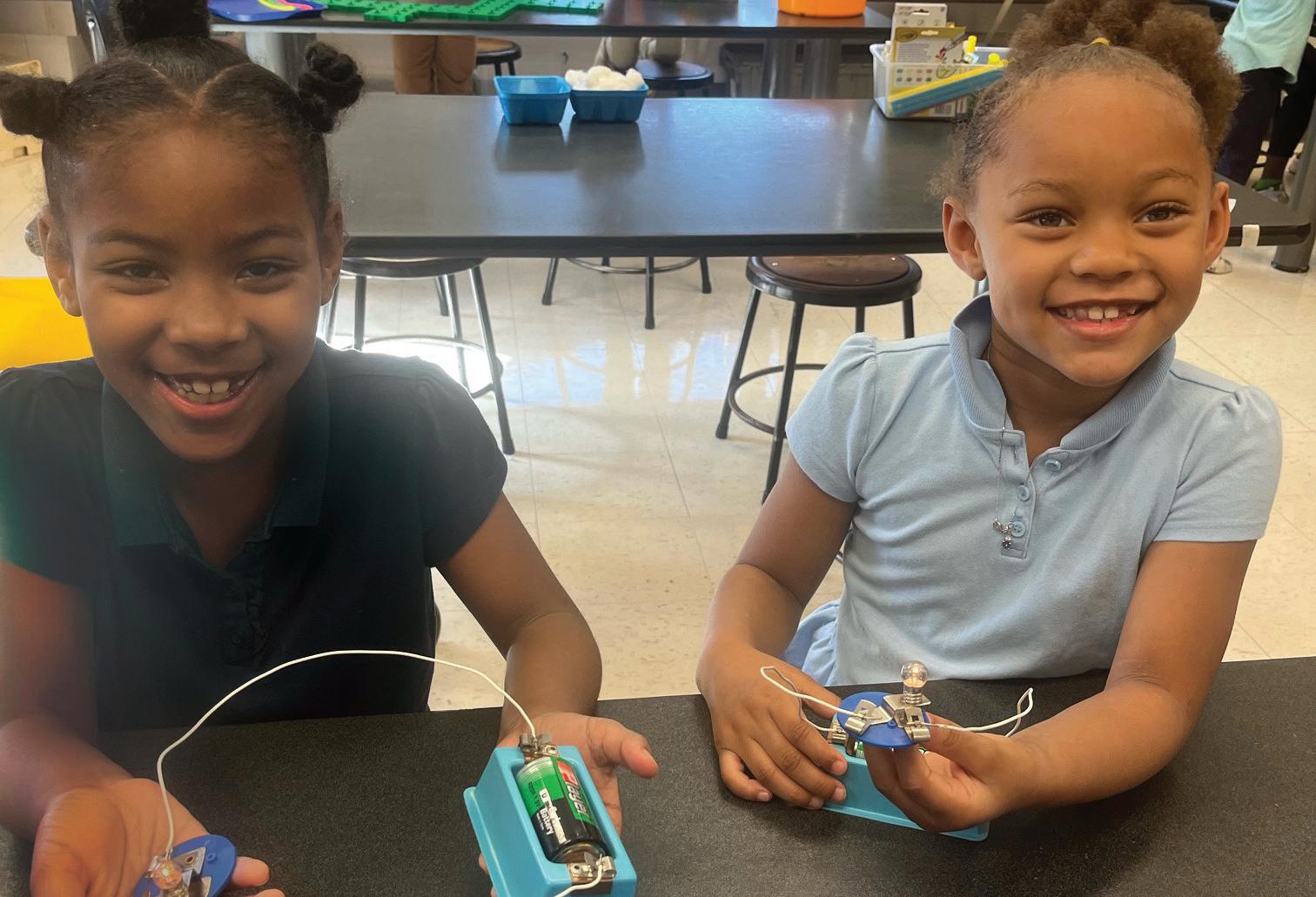
SCIENCE CORNER


A hurricane forms over tropical and subtropical ocean water. Warm water and cool, moist air combine to create strong winds that can gust up to 200 miles per hour! These winds create waves that bring the storm on shore. Hurricanes are very destructive. They can flip cars, sink boats, uproot trees, and demolish houses.
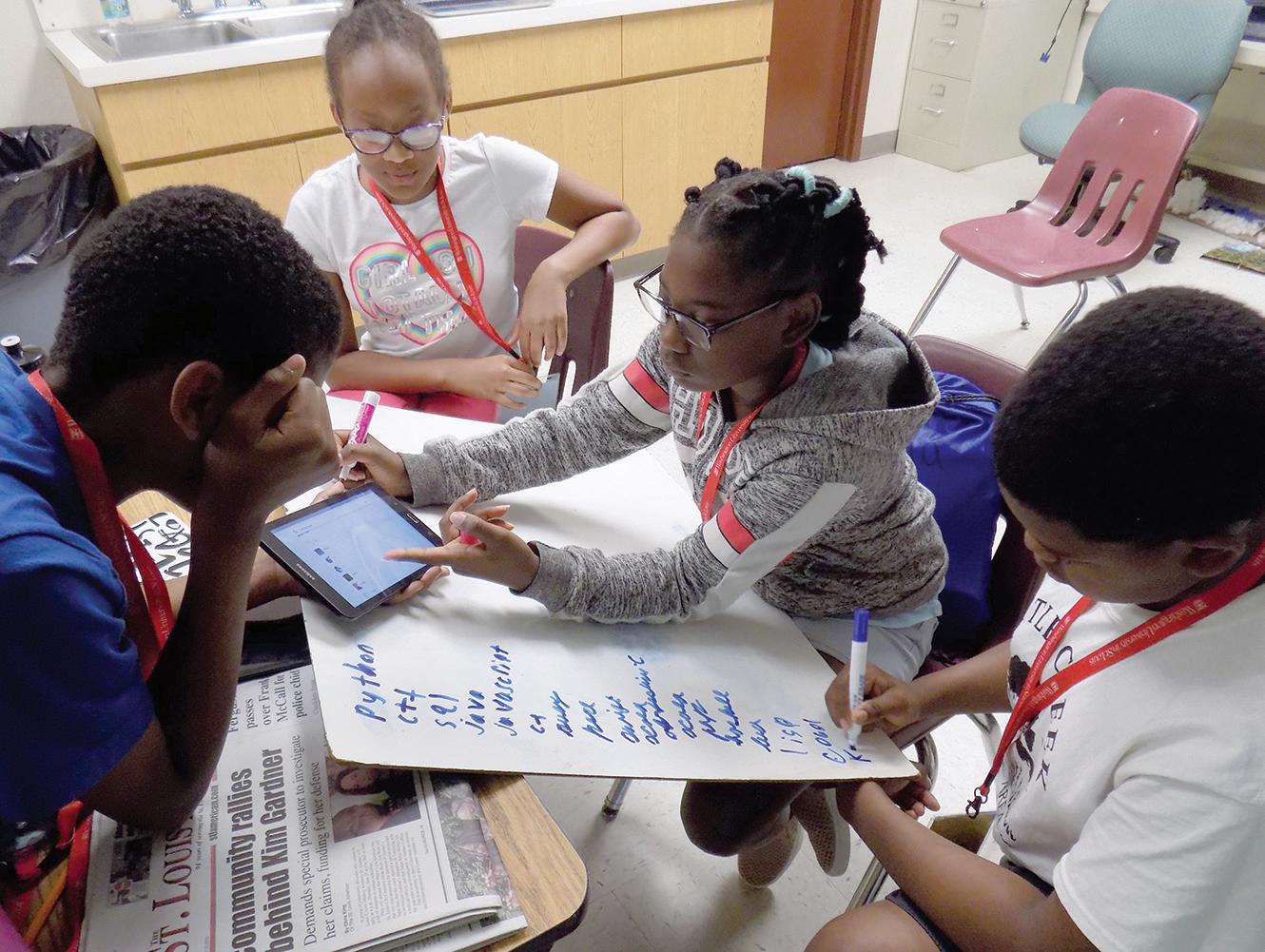
Microbiology is the study of organisms that are so small, they can only be seen with a microscope. These micro pic organisms include bacteria, algae, fungi, protozoa, and viruses. These are also known as microbes. Why is it important to study microbiology? It can give scientists information about nutrients, climate change, food safety, and the cause and control of diseases.


Hurricanes can last a few hours or several days. Most hurricanes occur during the fall months. How can you stay safe? Have an evacuation plan and an emergency kit prepared. Meteorologists can track these storms and keep you informed. For more hurricane facts, visit: http://www.sciencekids.co.nz/ sciencefacts/weather/hurricane.html.
penicillin, the smallpox vaccine, etc. Microbiologists can work as health care professionals, teachers, research technicians, veterinarians, and environmental scientists. If you enjoy gardening, working with microscopes, healthy lifestyles, and environmental causes, microbiology is for you.
Learning Standards: I can read nonfiction text for main idea and supporting details. I can make text-to-text and text-to-self connections.
leaves, stems, or roots. Fungi use spores to reproduce. One common type of fungus is the mushrooms you find on your pizza. Mold, yeasts, and mildew are also types of fungus.



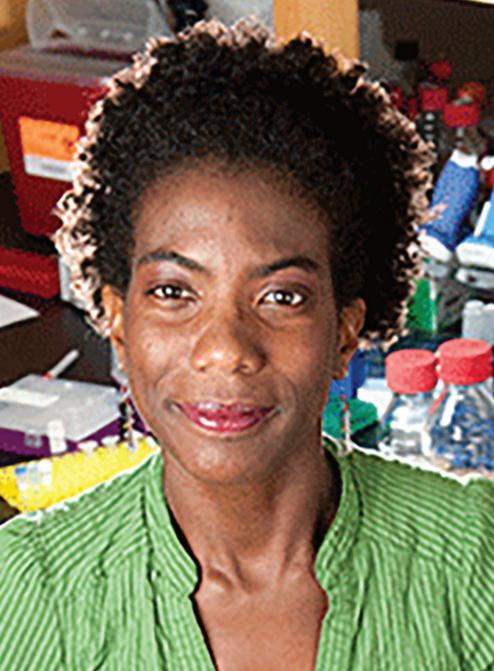
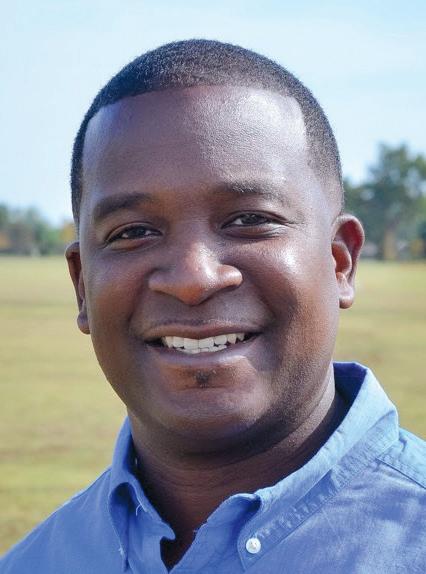
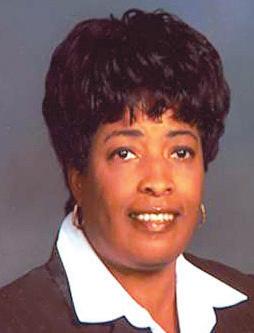
Jeanette Jones was born on September 19, 1950, in Fort Valley, Georgia. Jones graduated from Fort Valley State University in 1972 with a bachelor’s degree in biology education. In 1973, Jones received her master’s degree in botany and mycology (a branch of biology that studies fungi) from The Ohio State University. In 1976, she received her doctorate (Ph.D.) degree.
William (Bill) Parker grew up in New Orleans. He graduated from JFK High School, which focused on math, science, and engineering. Parker was interested in hurricanes at a young age, but he became interested in the weather after a high school statistics class. In this class, he learned how to predict the chance of rain. Parker wanted to attend a historically black college/ university (HBCU), so he chose Jackson State University to study meteorology. He graduated with his bachelor’s degree, in 1994.
Karine Gibbs is a young microbiologist who studies how tiny organisms called bacteria live, grow, and work together. She was born in Jamaica and moved to Baltimore when she was a child. In high school, she discovered her love for science while working as a summer research intern. That early experience showed her how curiosity and hard work could lead to real discoveries.
Fungi are organisms made of filaments (called hyphe) that are stacked together. Unlike plants, fungi do not have chlorophyll, so they cannot make their own food. Some fungi are parasites, which mean they live off of other organisms. Some fungi feed off of dead and decaying matter. Fungi are everywhere in the environment, including
There have been many big discoveries in microbiology, such as the invention of
In addition to powerful winds, hurricanes bring a lot of rain. (Taiwan received 114 inches of rain in three days during a hurricane.) These rains can cause landslides and flash floods.


fungus) help organic matter to decay and release carbon and oxygen into the environment. Unlike plants, fungi do not have
Procedure:
In this experiment, you’ll create a replica of a hurricane and identify how the forces work together to create a hurricane.
Materials Needed:
Learning Standards: I can read nonfiction text for main idea and supporting details.
For More Information, Go to: https://kids.kiddle.co/Fungus
Learning Standards: I can read nonfiction text to gain background information about fungi.
STEP ONE: Put on latex gloves and toast 4 slices of bread, leave 4 slices untoasted.
She also studied at the University of Nevada, the University of California Medical School, the National Center for Disease Control-Atlanta, and the Massachusetts Institute of Technology. After graduation, Alabama A&M University hired Jones as an assistant biology professor. In 1986, she served as an adjunct professor in the College of Pharmacy and Pharmaceutical Services at Florida Agricultural and Mechanical University and worked on a project with NASA. In 1991, Jones served as the first female vice president of research and development at Alabama A&M University. She also served as President of Alabama A&M University’s Faculty Senate from 2001 to 2006. In 1992, she was appointed to the U.S. Army Science Board by the U.S. Secretary of the Army, Togo West. Since 2004 Jones has been the director of the Center for Biomedical, Behavioral, and Environment Research at Alabama A&M University. She also worked as a consultant with federal agencies to help them develop training programs to attract women and minorities to STEM education and careers.
Karine went on to study biology at Harvard University, where she became fascinated by the world of microorganisms. In her lab, she studies a type of bacteria called Proteus mirabilis, which can sometimes make people sick. Her research explores how bacteria recognize each other and decide whether to cooperate or compete. By learning more about these tiny life forms, Karine helps scientists understand how infections start and how to keep people healthy.

Do they prevent the growth of mold?
• 2 Soda Bottles • 3 Paper Clips
• 3 Peanuts • ¼ C. Sand • Funnel
In this experiment, you will see how effective soap and hand sanitizers are at preventing the growth of mold.
• Water • Duct Tape
Materials Needed:
• 8 Slices of Bread with No Preservatives
Procedure:
Materials Needed:
• 16 Ziploc Bags • Latex Gloves • Masking Tape • Pen
q Fill one bottle with the paperclips, peanuts and sand. These represent the debris and help make the movement of water easier to see.
• 3 slices of bread • Water • 3 Ziploc bags
• Toaster • Knife • Spray Bottle • Baking Sheet
• 10x10 square centimeter grid • Ruler
• Camera • Teaspoon • Liquid Soap • Hand Sanitizer
Process:
w Place the funnel in the mouth of the bottle and pour water into the bottle until it is 3/4 full, then remove the funnel.
q Wet one slice of bread enough to make it moist and place it in a bag. Seal the bag very tightly.
e Turn the second empty bottle upside down and hold it over the first bottle so that the mouths of the bottle are aligned. The bottles will look like an hourglass.
w Place the two other slices of dry bread in two separate bags and seal them, as well.
r Tape the seam, pressing the duct tape firmly to
e Place the bag with the wet slice of bread and one of the bags with a dry slice of bread in a dark place, such as a closed cabinet or closet. Place the third bag with a dry slice

z A hurricane has moved 456 miles in 6 hours. How many miles per hour is the hurricane traveling? ______ If it continues to travel at that speed, how far will it travel in 10 hours? ______
STEP TWO: Cut all 8 slices of bread in half so that you have 16 slices of bread—8 toasted, 8 not toasted.
create a watertight seal. Continue taping 1 to 2 inches above and below the seam.
t Hold the bottles by the middle and lift the jugs.
In this experiment, you will learn how mold grows best. Mold is an important fungus that has several uses, including breaking down dead organic material. Some purified molds are actually used as an antibiotic to treat illnesses.
STEP THREE: Prepare the Ziploc bags according to the chart.
y Quickly, turn the bottles over so that the water-filled bottle is on top. Set the bottles on the table again.
u Observe the water as it drains into the bottle below. The water competes with the air from the empty bottle. Both substances push to pass through the neck.
i Turn the bottles over again. This time, shake the bottles in a circular motion. Be sure to keep the bottles vertical.
Karine’s discoveries have made her a leader in microbiology. She was named one of the “100 Inspiring Black Scientists in America” for her groundbreaking work. But just as important to her as research is teaching others. She mentors young students and encourages them to see science as a place where they belong. Karine believes that anyone can be a scientist if they stay curious and keep asking questions. Her story reminds us that even the smallest things in nature can lead to big discoveries. From studying bacteria to inspiring the next generation, Karine Gibbs shows that curiosity and courage can change the world—one tiny organism at a time.
STEP FOUR: Begin filling the bags. Place the bread and toast in the bags that receive no treatments. Place these bags on the baking sheet.
STEP FIVE: Next, use the spray bottle to mist water on the bread and toast that receive water only. Place these bags on the baking sheet.
t For five days, measure the square centimeters of mold on each piece of bread through the bag. Use a grid, if possible, or a ruler. If mold covers more than half a square centimeter, it is counted as one full centimeter. If it is less, it is counted as 0 centimeters. This will give you the area of mold on each slice of bread y At the end of a week (5 days of measuring) or longer, use your final results to say what percentage of the bread was covered in mold. Make a table or graph to display the information.
In 1993, he began to gain experience in the field when he worked as a student meteorologist. One year later, he was a meteorologist intern at Shreveport. In 1998, Parker became a general forecaster, and ten years later, a lead forecaster. In 2012, he became a warning coordination meteorologist (WCM). There are only 122 people with this title in the United States, and Parker was the only African American. Parker is currently the meteorologist-in-charge (MIC) at the National Weather Service, leading a team of 26 weather professionals. Parker is also very active as a volunteer in his community. He is a member of the Shreveport-Bossier Mayors’ Prayer Breakfast Executive Committee, La Cima Bilingual Leadership Academy, Bossier Chamber of Commerce Education Committee, Volunteers for Youth Justice, and a coach for Bossier Parks and Recreation. Parker is also an associate minister at Elizabeth Baptist Church in Benton, where he has been serving the congregation since 1997.
ELA Questions:
In 1975, Jones was listed in the World’s Women’s Who’s Who and she was named an Outstanding Young Woman of America in 1978. Beta Beta Beta National Biological Honor Society awarded her the distinguished service award. Jones also received the Significant Service Award from the NASA Space Life Sciences Training Program and the Extramural Associate Research Development Award from the National Institute of Health. In 1990 and 2006, she was named Woman of the Year at Alabama A&M University and was given the Outstanding Leadership Award by the Faculty Senate. The U.S. Army presented Jones the Commander’s Award for Outstanding Civilian Service as a member of the Army Science Board.

• Karine Gibbs turned her curiosity about science into a career helping others. What is one topic you are curious about that you could study or explore?

x Hurricane Frederick is traveling at 86 miles per hour. If the hurricane is 129 miles from the coast, how many hours will it take until the hurricane reaches the coast? ______

o The water will form a vortex as it drains into the next bottle. The water will flow along the outside of the neck, while air moves quickly up through the center of the vortex. The water will drain much faster.
STEP SIX: Next, add a teaspoon of hand soap to the spray bottle and spray the bread and toast samples with “hand soap only.” Place these bags on the baking sheet.
Analyze: How did water and air create a hurricane?
STEP SEVEN: Rinse out the spray bottle and add the hand sanitizer. Spray the remaining bread and toast samples and place them in their bags on the baking sheet.
Discussion Questions: How much mold was on the bread? Which location had the most mold? Which had the least? What conclusions can you draw about the conditions in which mold grows? How can food manufacturers and restaurant owners use this information to help them?
Learning Standards: I can follow sequential directions to complete an experiment. I can make observations and draw conclusions.
STEP EIGHT: Place the baking sheet next to a window in sunlight.
Learning Standards: I can follow sequential directions to complete an experiment. I can display my results, make observations, and draw conclusions.
STEP NINE: Take pictures each day for 21 days to observe the rate that mold grows.
X has grown to have wind speeds of 48 miles per hour. How much faster will the winds have to become for Tropical Storm X to become Hurricane X? ______
Scientists often use tables and graphs to display the results of their research. Looking at these displays, you can draw conclusions.
As we approach spring weather (and increased rain), create a bar graph that displays the amount of rain that falls for several consecutive days or weeks. (Day 1: 1.5 inches, Day 2: 0 inches, Day 3: 1.5 inches, etc.)
c A tropical storm takes on a hurricane status when the winds reach 74 miles per hour. After three days, Tropical Storm


v Upon landfall of a Category 4 hurricane, local officials ordered an evacuation. City A has a population of 9,613, City B has a population of 5,013 and City C has a population of 3,972. How many people were evacuated in all?
Discussion Questions: Dr. Jones received many awards and honors. How would you describe her achievements and her contributions to science? Dr. Jones is studying how fungi might be used as agents of war. What purpose do you think fungi serve in modern warfare? Are fungi beneficial or harmful?
• The article uses the word “microbiologist.” Based on the sentences, what do you think that word means?
Parker believes in serving as a role model to the youth and to recruiting African Americans in the STEM field. Personally, he has hired three African-American meteorologists. In addition, he has recruited minorities for summer intern positions.
Missouri Learning Standards: Science (5.LS2.A.1), Science (5.ESS2.A.1), English Language Arts (ELA.RI.4.1)
Learning Standards: an African American who has made contributions in science, math, technology, or engineering.
Parker has also mentored an Airline High School student for his senior project. Parker’s advice to students interested in meteorology is to take as many math and science classes as possible. Learn about summer opportunities in your community. If you are interested in meteorology, visit National Weather Service offices and serve as a volunteer or intern, and find leaders in your community to serve as your personal role models.

Learning Standards:
Learning Standards: I can follow sequential directions to complete an experiment. I can analyze results and draw conclusions.
Discussion Questions: Which day had the most measured rainfall? Which day(s) had the least? Looking at the bar graph, what might you conclude about rain patterns in March/April? What other observations can you make?
$115,264 in damage, City B reported $236,096 and City C reported $436,869 in damages. What was the total cost of damages rounded to the nearest thousand? ______ If the state and federal government promised $500,000 in aid, how much would the local people have to raise by themselves? ______
Learning Standards: I can use a bar graph to display information. I can use the information to make deductions and inferences.
Learning Standards: I can add, subtract, multiply, and divide to solve a problem.
b After citizens returned to their houses after the evacuation, reports of damage were totaled. City A reported
Learning Standards: I can


The human mouth has about 500 species of bacteria. There are approximately 100,000 bacteria on a square centimeter of human skin.

This special Newspaper In Education initiative is made possible, and delivered to classrooms through the St. Louis American Foundation and its NIE Corporate Partners:

In 1918, 30 million people died from the influenza virus, compared to 10 million people who died from World War 1.
If


Enjoy these activities that help you get to know your St. Louis American newspaper.

a person who has made contributions to the fields of science, technology,

Activities —
Enjoy these activities that help you get to know your St. Louis American newspaper.

Use the newspaper to complete the following activities: Types of News: Use the front section of the newspaper to evaluate the types of news stories presented: local, national, and international. Sort the articles into the three categories and create a bar graph that displays the amount of coverage each type of news story received.

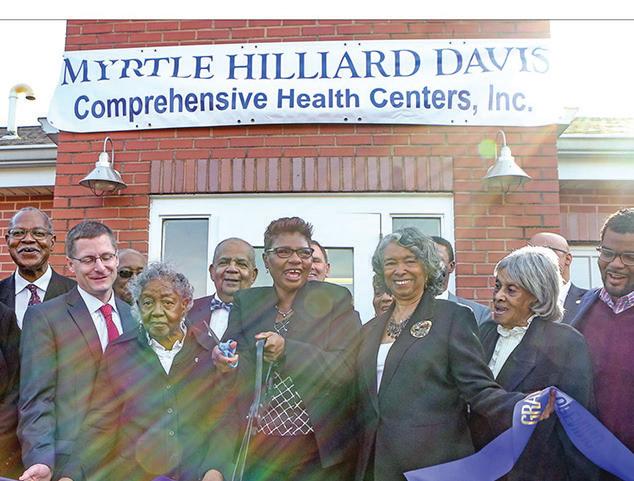

Activities — Who works where? a picture of a building in the newspaper and of jobs people who work in that building could have.
Acknowledgment Phrases: Scan the front page of the looking for phrases that give acknowledgment to the source of information, such as: he said, allegedly, an informed source, according to, etc. Underline the phrases as you find them in the newspaper.

County Democrats accept $2M election grant DID YOU KNOW?
Mystery Story: Cut out several pictures from the newspaper without reading the caption. Place the pictures in a bag, and without looking, pick your mystery picture from the bag. That’s your stimulus for writing. Construct a graphic organizer to identify the 5Ws (who, what, when, where, and why) of your story by looking at your picture. Then, continue the writing process.
The Four Kinds of Sentences: Find two examples of each of the four kinds of sentences: declarative, interrogative, exclamatory, and imperative
Problem and Solution: Over a period of weeks, clip articles from newspapers that deal with problems and issues facing your local or county government. Discuss the reasons for these problems and how the government hopes to solve them.
Learning Standards: I can use the newspaper to locate infor mation. I can find identified sources and identify types of sentences.
Learning Standards: I can use the newspaper to locate information. I can categorize and summarize that information.
Learning Standards: I can use the newspaper to locate information. I can discuss problems and solutions. I can identify types of jobs. I can make text-to-world connections.





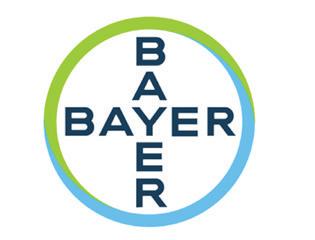
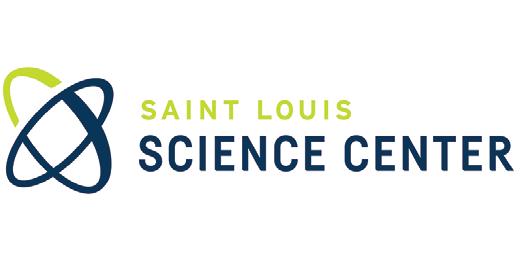


unconventional possibilities, including the recently sold 28-story AT&T tower downtown and the 250,000-square-foot Armory in Midtown, while also surveying churches, empty apartments, warehouses and community centers.
Yet a city program designed to help displaced tenants with financial assistance has not accepted a single application. Citing “legal hurdles,” Human Services Director Adam Pearson said there was “some confusion” over what funding sources the program could use. He took responsibility for the delay and said applications should open “in a couple weeks.”
The scale of the need became clear almost immediately. City officials first estimated that 5,000 to
7,000 buildings were damaged. By August, FEMA had received nearly 10,000 applications from mostly North St. Louis households — including 3,570 from the 12th Ward (37%), 2,725 from the 10th Ward (25%) and 1,908 from the 11th Ward (23%).
A July “Crisis Cleanup Outcome” report from Board of Aldermen President Megan Green’s office documented more than 4,000 reports of tornado damage in North St. Louis and nearly 2,000 families labeled “High Priority” and in need of immediate help. Nothing close to this level of destruction has hit the city since 1959.
Still, questions have surfaced about whether the Spencer administration has met the moment — in part because Spencer campaigned last year on delivering stronger basic city services after sharply criticizing former Mayor
Tishaura Jones for what she called a poor response to a major winter storm. Some share those concerns; others do not.
Alderwoman Shameem Clark Hubbard, whose district was among the hardest hit, said she supports the city’s efforts but remains frustrated by delays.
“I have frustrations about a lot of things — housing being one of them,” Clark Hubbard said. “But because I work on the city side, I understand some of the barriers, nuances and systems that have slowed us down but I also think there were work-arounds and things that could have been done
differently and some, quite frankly, not at all.
“But, you know, six months later, we can only hope we’ve learned from our mistakes,” she said. “But that’s six months too late for people who still don’t know where to turn, receiving no response or unresourceful responses but that’s on a caseby-case basis.”
“City government was not prepared for a natural disaster like this,” Aldridge said during an October interview on St. Louis Public Radio’s “Politically Speaking Hour.”

Alderman Rasheen Aldridge agreed that the city’s recovery work falls short, though he does not blame Spencer.
“City government was not prepared for a natural disaster like this,” Aldridge said during an October interview on St. Louis Public Radio’s “Politically Speaking Hour.”
“We did not have the funding, did not have the manpower, did not have the support,” he said.
He stopped short of calling the response “a failure,” but said the city needs “a natural disaster plan” that cuts red tape and speeds coordination among federal, state and local agencies.
Complicating matters are changes to federal emergency policies under President Trump, which critics say have slowed access to the federal Disaster Relief Fund. Spencer has publicly criticized the federal response, blaming “turmoil at the national level” and what she described as a FEMA “pullback” that created delays and added bureaucratic barriers.
Anthony Johnson Jr., who lives in the Academy-
Continued from A1
Missouri ZIP codes after years of pressure from local families who argued the St. Louis area had long been overlooked.
Federal data shows $8.57 million in Missouri claims have already been approved, yet less than 1% of eligible residents have applied. County officials estimate as many as 300,000 people could qualify, but only about 2,000 have submitted applications so far.
RECA provides onetime, tax-free payments to people who lived, worked or went to school in certain areas during the early years of the Manhattan Project — the top-secret government effort to develop the first nuclear weapons — and later developed a covered illness. Survivors of family members who died from one of those illnesses may


Sherman neighborhood, remains frustrated with the government’s response to the tornado. He owns three properties, including his primary residence, and all were damaged in the storm. He believes both the city and federal government failed to help residents who needed it most.
“There’s a whole city over there of people who lost houses … and they have nowhere to go. The city’s not doing anything about that, FEMA isn’t doing anything about that.”
In July, Spencer issued an executive order creating a City Hall “Recovery Office” to coordinate tornado-recovery work. The office was tasked with data collection and analysis, resident well-being, housing and infrastructure restoration, damage assessments and consistent communication with neighborhood leaders.
Kathryn Jamboretz, interim communications support person at the mayor’s office, said Spencer’s appointments of Pearson as head of Human Services and Julian Nicks as chief recovery officer were intended to “make sure all city residents have a safe and warm place to live this winter,” adding that both are “working night and day to secure housing for the traditionally unhoused and those who have been impacted by the tornado.”
Last week, Spencer signed three bills approved by the Board of Aldermen to add more than $13 million for housing and shelter needs for tornado-impacted residents this winter. Clark Hubbard’s $9.3 million proposal was part of the package, though she still has deep concerns.
also qualify for a smaller payment.
The St. Louis region’s connection to RECA traces back to Mallinckrodt Chemical Works, which processed uranium for the Manhattan Project and the Atomic Energy Commission. The original processing facility was just north of downtown St. Louis, but the radioactive waste it generated was later dumped, mishandled or allowed to migrate into waterways and neighborhoods across St. Louis County.
EPA investigations have found that federal agencies and contractors were aware of contamination problems for decades. They ignored warnings about leaking waste, health risks and unsafe landfill practices.
One of the most visible sites is Coldwater Creek in Florissant, listed by the EPA in 1981 as “one of the most polluted waterways” in the country.
Generations of children raised along the creek have faced rare cancers, autoimmune disorders and other illnesses. Cleanup continues today.
Former state Sen. Maria Chappelle-Nadal, who is running for a St. Louis County Council seat, has spent more than a decade researching contamination sites and hosting community meetings. At dozens of meetings in her former senate district, she said she has heard emotional stories of illegal dumping, rare cancers and families who lost loved ones to illnesses they believed were tied to radioactive waste. She said mistrust remains the biggest obstacle to getting residents to apply for compensation.
“I talked about this story before it was sexy, before it was popular, when Josh Hawley (as state attorney general) kept ignoring us,” she said.
“I have hope, but it’s not like I’m not worried,” she said. “I absolutely have concerns about things that keep me up at night.”
Alderwoman Laura Keys is experiencing the crisis herself. Her home suffered major damage.
“My house was included so, I’m in this with everybody else and ain’t nothing about it easy,” Keys said. “I just got a roof about 9 weeks ago, got the windows replaced three weeks ago, they’re putting in new ceilings and I’m still waiting on electrical repairs.”
Like Aldridge, Keys said the city “didn’t have a good roadmap” for a disaster of this magnitude. She acknowledged residents’ frustrations but credited Spencer for direct communication and consistent updates.
“The city is doing the best it can, and I have to give the mayor her praise,” Keys said. “She has gotten on the phone with me and other alders, before the day kicks off, to give us updates on things that are going on but this is such a dire situation that’s still unbelievable for me.”
Keys believes displaced residents will get the help they need this winter through a mix of city funding and support from the Urban League, Action St. Louis, shelters, churches and other nonprofit organizations. She said criticism of the timeline ignores the scale of the catastrophe.
“I know people are really hurting out here but with 5,000 houses in need, do you really think we can get all that done in 100 days or whatever?
“It’s going to take years!”
Sylvester Brown Jr. is the Deaconess Foundation Community Advocacy Fellow.
She also worries that some majority-Black neighborhoods with long histories of illness were not included in the latest expansion.
“The Coldwater Creek watershed is just one of many contaminated watersheds,” she said. “There are people who live in historically Black communities where 80% or more either got cancer or died from radioactive waste-related cancers.
“Then they bought homes built after World War II, in Black Jack, Berkeley or Hazelwood and different places throughout St. Louis County that are still contaminated to this day.” She believes the expansion offers residents a chance to finally receive support — but only if they know they’re eligible. Many people still don’t know their neighborhood is included or don’t believe their illness, or a family member’s illness, could be connected to radioactive waste. Before people seek compensation, she said, they need to know they were exposed.
“It’s great that we have the (RECA) setup,” she said. “It’s wonderful, but getting people from point A to point Z will take a lot more work.”
To apply, residents must submit a claim through the U.S. Department of Justice. A toll-free hotline, 800-729-7327, is available to answer questions, and local groups such as Just Moms STL can help people understand whether they qualify.
Sylvester Brown Jr. is the Deaconess Foundation Community Advocacy Fellow.
Chappelle-Nadal said mistrust is particularly deep in neighborhoods where generations of families believe they were never warned about the dangers. She acknowledges that Hawley, now a U.S. senator, did help expand the program last year, but said many residents still do not view him as a credible messenger.
Continued from A1
Those shifting needs have reshaped the job and added pressure to a workforce already stretched thin. Missouri’s teacher shortage didn’t begin with COVID-19, educators say, but the pandemic — which disrupted early learning and child development — intensified trends that were already eroding stability.
Concerns about teacher supply have been building for years, said Paul Katnik, assistant commissioner for the Missouri Department of Elementary and Secondary Education.
“There was a gap between supply and demand,” he said. “The pandemic accelerated that
Continued from A1
The organization, which partners with BraveLove, says its goal is to increase understanding of the emotional and practical challenges birth parents face before and after placement.
“Birth parents bring truth, perspective and balance to the adoption conversation,” said Janelle Basham, executive director of BraveLove. “Their voices remind us that adoption is not a single moment, but an ongoing journey that continues to shape lives.”
For many, that journey involves a mix of connection and loss.
“It’s love expressed through wanting the very best for a child, even when that means entrusting someone else to provide it,” Basham said. “And it’s a loss, as it involves letting go of the daily connection and the life once imagined.”
Basham said the emotional toll can be lasting
gap.” Katnik said statewide surveys consistently point to the same causes: rising demands on teachers, compensation that hasn’t kept up with living costs and a growing sense among educators that they are less respected than they once were. Missouri recently moved to address some of those pressures by raising the minimum teacher salary from $25,000 to $40,000 beginning this year. Some districts have added retention stipends and supplemental pay programs to try to keep experienced teachers in classrooms.
Despite assumptions, St. Louis is not where teacher retention is lowest. State data show the city
and does not follow a predictable path.
“There is no simple ‘getting over it,’” she said. “Healing can come through connection — with other birth moms, through ongoing communication with adoptive families and through spaces where their stories are seen and heard.”
Adoptees also navigate questions about identity and family history. That reality resonates with St. Louis native Willie Moore Jr., who was adopted as an infant and spent years seeking information about his biological family.
Moore, a musician and speaker, said his search accelerated after Missouri changed its laws to give adoptees access to their original birth certificates.
“For the first time in my life, I was able to see my biological mother’s real name,” he said. “That moment changed everything.”
A few months later, Moore connected with his biological brother after posting an online tribute
retains about 90.2% of its first-year teachers, compared with the statewide average of 82.2%.
“That doesn’t mean the problem isn’t here,” Katnik said. “It means the problems show up differently in different places. The more we can keep our teachers, the less of a demand there is.”
Simmons, 23, is navigating her first school year in that shifting landscape. She is part of the Gateway Teaching Fellowship, a new initiative of The Opportunity Trust that recruits and supports firstyear teachers through two months of intensive summer preparation and in-classroom coaching throughout the year. The program aims to provide the structure and mentor-
to a close friend who had died.
“Something in me said, ‘This is the moment,’” Moore said. “I messaged him privately and told him the truth: that I was his biological brother.”
Moore said the relationship brought a sense of clarity about his personal history.
“Reconnecting didn’t change who I believed myself to be,” he said. “But it did bring clarity to the gifts and desires that already lived within me.”
He later learned that his biological father, Tony Condra, was a drummer and his biological mother, Katrina Walton, was a singer — information he said helped explain parts of his identity he had long wondered about.
Many adoptees refer to that experience as “origin clarity,” a term adoption professionals use to describe understanding one’s biological background.
“The number of infants placed for adoption has been steadily decreasing
ship many new educators say they lack.
“New teachers face increasing demands and decreasing support,” said Jonathan Caldera, associate partner at The Opportunity Trust.
Simmons sees the effects every day. Many of her kindergarteners spent their earliest years during the pandemic.
“Many of my students were toddlers during COVID,” she said. “They haven’t been used to classroom environments.”
Her students often struggle to sit still, follow multi-step directions and stay focused — challenges that can overwhelm new teachers without strong training and steady support.
Veteran educators
in Missouri,” said Melani Engel, director of adoption services for LFCS.
“Many parents who place an infant are already parenting one child and facing multiple stressors. We’re here to provide unbiased education and support — whether the parent chooses adoption or chooses to parent.”
State data show that domestic infant adoption remains relatively uncommon. According to the Missouri Department of Social Services, fewer than 1% of all live births result in private infant adoption. In 2023, there were 324 such adoptions statewide, a figure that has held steady in recent years. Analysts say the trend reflects expanded access to family support programs and the growing role of kinship care, in which relatives step in to raise a child.
In St. Louis County and the city of St. Louis, state analysts report similar patterns: private infant adoptions are rare, while kinship care continues to rise. Adoption profession-
know those pressures well. University City High School math teacher Malinda Baker, who has taught in St. Louis for more than 20 years, said the work remains deeply personal.
“I stay because of the heart I have for students who need to see themselves in the classroom,” the math teacher said.
Baker nearly left the profession. After 18 years in a previous district — including serving as an instructional leader — she was reassigned back to the classroom and received a pay cut.
“I really struggled with continuing,” she said. “But I don’t teach math. I teach students. I love students. Love is the reason I stayed.”
als say the data highlight the need for counseling, crisis support and practical resources for parents considering their options.
LFCS offers free, confidential counseling, education and post-placement support groups for birth parents, including referrals to adoption-competent therapists.
For Moore, reconnecting has been meaningful but complex — a sentiment echoed by many adoptees.
“It’s been beautiful, but it has also required emotional balance,” he said. He noted the importance of navigating relationships with both families. “I have incredible forever parents who loved and supported me my whole life. And welcoming my biological family meant learning their love languages, their history, their ways of communicating.”
Most domestic infant adoptions now involve some level of openness — about 95%, according to the National Council for Adoption — giving birth
For both Baker and Simmons, teaching is rooted in relationships and in seeing potential in students who may need more support or more structure. Even in a demanding first year, Simmons says she plans to stay.
“The growth I’ve seen in my students in just one quarter is incredible,” she said. “Knowing I have that kind of impact — that’s what keeps me here.”
Katnik said retaining teachers like Simmons ultimately comes down to whether schools can provide the conditions educators need.
“Teachers need adequate compensation and support,” he said. “If we can give them that, they stay — and students benefit.”
parents and adoptive families more opportunities to share information. Basham said the shift has helped reduce stigma and foster communication, though she and Engel both say more adoption-competent mental health support is needed.
Moore said reconnection strengthened his sense of identity and helped answer questions he carried for years.
“My identity has always been grounded in Christ,” he said. “Reconnecting didn’t create an identity crisis — it gave me validation.” He hopes sharing his experience will encourage adoptees and birth parents who are searching for their own histories.
“At the heart of National Adoption Month,” Engel said, “we want birth parents to know they are not alone.”
Moore said adoption remains an important part of his story.
“Adoption has been the greatest blessing of my life,” he said.



Years ago the industry found out that Milli Vanilli weren’t really the voices on their Grammy-winning record, and they were stripped of their Grammy, but now we’re getting ready to accept people who can’t even sing, creating songs for a fake person? - Jermaine Dupri on AI generated songs and artists
By Kenya Vaughn The St. Louis American
At 9:45 a.m. on Saturday, the Grand Hall of the Missouri History Museum felt less like the lobby of a cultural institution and more like the opening mixer of a family reunion. In a way, it was. Dozens of guests exchanged greetings, shared embraces, and rekindled connections with people they hadn’t seen in decades. Conversations flowed easily as they reminisced, their anticipation building for the grand opening of “Mill Creek: Black Metropolis.”
The expansive exhibition, which honors the historically Black community once home to more than 20,000 residents in downtown St. Louis, opened November 15 and will remain on view through July 12, 2026.
“When you get inside, make sure you look at the blanket my mother crocheted for me,” said author Vivian Gibson, smiling warmly as she guided friends toward the entrance.
Gibson’s award-winning memoir, The Last Children of Mill Creek, helped spark renewed interest in the long-overlooked neighborhood. Through personal narrative, her book offered intimate portraits of families and lives that were reduced to a footnote in St. Louis history when Mill Creek was demolished in the late 1950s
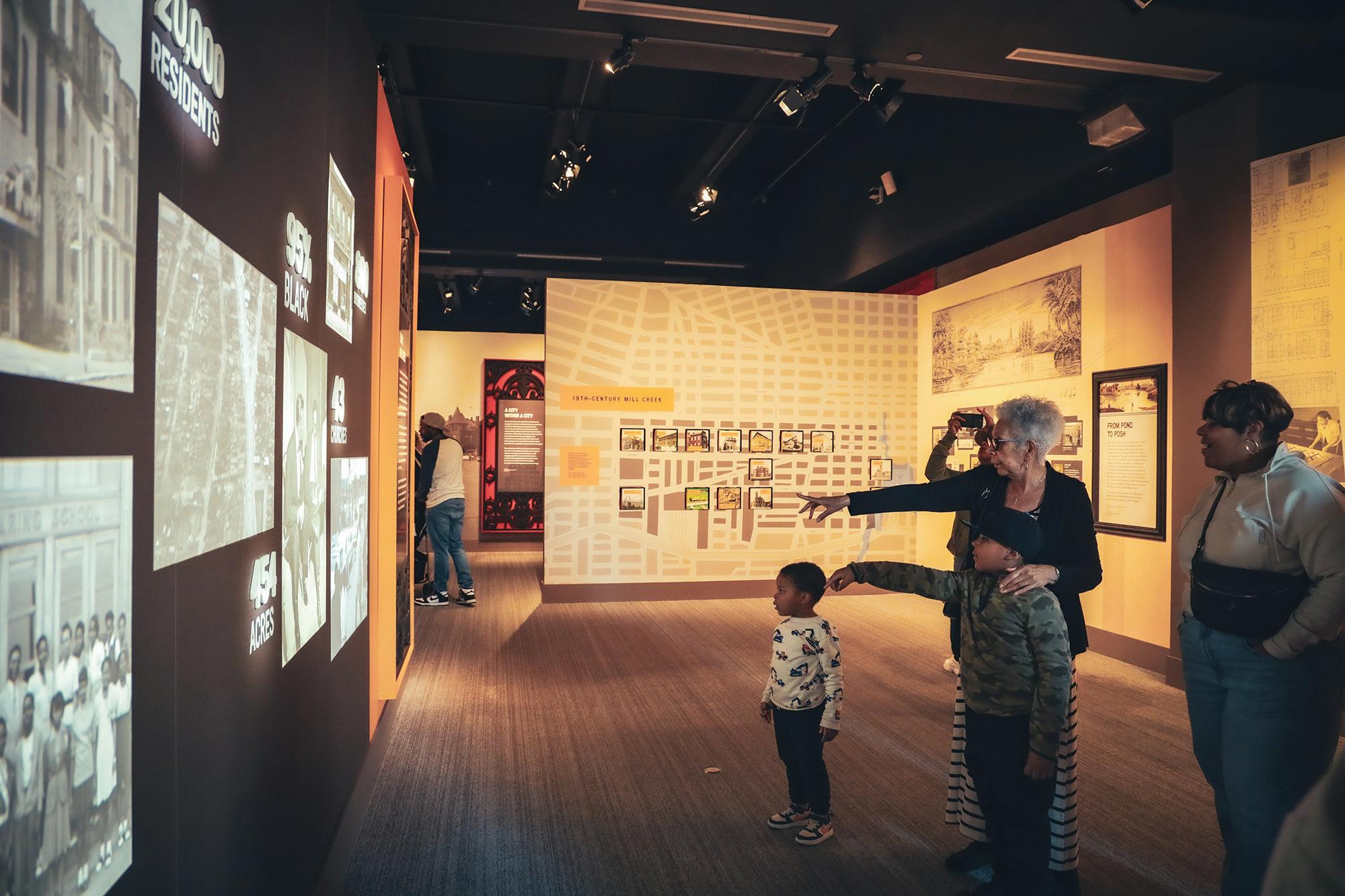
after being labeled a “slum.”
Through artifacts, photographs, and a comprehensive overview of Mill Creek Valley—its origins, cultural contributions, and generational legacy following its destruction—”Mill Creek: Black Metropolis” restores dignity to a commu-
nity that shaped the city’s identity.
“Part of our work here at the Missouri Historical Society is to share the full St. Louis story,” said Sam Moore, managing
See MILL CREEK, B3

By Zaria Mac St. Louis American
St. Louis was the center of the R&B universe Sunday night. Brandy and Monica — two women whose voices have defined generations — brought their The Boy Is Mine Tour to a roaring, soldout Enterprise Center. With decades of hits between them, the duo proved exactly why their catalog still resonates. Whether you’re falling in love, falling apart, or kicking the door down, they have a song for every moment. Last night, they delivered each one with elegance, power and microphones that were unmistakably on.
The evening kicked off with Muni Long, who transformed the stage into a retro 1960s Hollywood dressing room. Her name glittered across the starstamped door as she stepped out in a sharply tailored three-piece tartan suit. Entering to The O’Jays’ “For the Love of Money,” she took her place beneath a glowing red sign that read “Delulu,” set-

ting the tone for her anti-love songs.
Despite recent health struggles, including performing with essentially one functioning lung due to lupus complications, Muni delivered vocals filled with both grit and polish. She breezed through her anti-love anthems like “Ruined Me” and “Superpowers.” Then Long ignited a praise break throughout the arena as she belted out “Amen.”
The show shifted gears when a butler
Brandy and Monica’s “The Boy Is Mine Tour” was a friendly, but fierce hit-for-hit faceoff.
appeared to hand her a red champagne glass as “Hrs & Hrs” began to play. She sang and cheekily tossed money onto a male dancer wearing boxers that were decorated with her face. Her dancers, Dollar and Bill, added even more energy as she closed with the fan favorite “Made for Me.” The crowd stood and applauded
Black Rep will present the Dianne McIntyre Group’s homage to Ntozake Shange
By Kenya Vaughn The St. Louis American
The St. Louis Black Repertory Company is bringing a powerful fusion of movement, music, and poetry to the Kirkwood Performing Arts Center this weekend by way of a legendary force in dance. On November 21 and 22, the Dianne McIntyre Group will present “In the Same Tongue” as part of The Black Rep’s 49th Season Phoenix Rising Performance Series.
A trailblazer in modern dance and a longtime collaborator with avant-garde jazz greats, McIntyre’s latest work is a sweeping exploration of communication—how we speak through our bodies, our music, our histories. With a live jazz ensemble, a dynamic company of dancers from across the country, and four local performers, In the Same Tongue is a celebration of artistic expression rooted in the Black experience.

Wed., Nov. 26, 7:30 p.m.
Vera Valentinaa’s Holiday Burlesque, City Winery St. Louis, 3730 Foundry Way, St. Louis, MO 63110. For more information, visit https://citywinery.com.
Tue., Dec. 2, doors 6:30 p.m. Cirque Musica Holiday Wonderland, The Factory, 17105 N Outer 40 Rd, Chesterfield, MO 63005. For more information, visit www. thefactorystl.com
Thurs., Dec. 18 – Fri., Dec. 19, 7:30 p.m., St. Louis Symphony Orchestra IN UNISON Chorus presents IN UNISON Christmas with the Clark Sisters, Powell Symphony Hall. For more information, visit www.slso.org.
Fri., Dec. 19, doors 7 p.m. Funky Butt Brass Band BRASSTRAVAGANZA, Delmar Hall, 6133 Delmar Blvd, St. Louis, MO 63112. For more information, visit www.thepageant.com.
Fri., Nov. 21, 7:30 p.m. Magic of Motown Presented by Moxie Events, The Sheldon Concert Hall, 3648 Washington Blvd, St. Louis, MO 63108. For more information visit www.thesheldon.org.
Fri., Nov. 21, doors 7 p.m. Playadoors with Kudda & Friends, Delmar Hall, 6133 Delmar Blvd, St. Louis, MO 63112. For more information, visit www.thepageant.com.
Sat., Nov. 22, 8 p.m. Sexyy Red & Friends Glorilla, G Herbo
and more, Enterprise Center, 1401 Clark Ave, St. Louis, MO 63103. For more information, visit www.enterprisecenter.com.
Fri., Nov. 21, 7 p.m. New African Orleans: A Short Film and Concert with Senegalese composer Alune Wade, .Zack Theatre, 3224 Locust Street, St. Louis, MO 63103. For more information, visit https://kranzbergartsfoundation.org.
Sun., Nov. 30, 7 p.m. R&B Bowling After Dark, Tropicana Lanes, 7960 Clayton Rd, Richmond Heights, MO 63117. Purchase tickets here, www. eventbrite.com.
Fri., Nov. 28 – Sun., Nov. 30, St. Louis’ own Lavell Crawford, Helium Comedy Club, 11151 St. Louis Galleria Street, St. Louis, MO 63117. For more information, visit https:// st-louis.heliumcomedy.com.
Sun., Dec. 7, 7 p.m. Special Event: Vincent Bryant, Helium Comedy Club, 11151 St. Louis Galleria Street, St. Louis, MO 63117. For more information, visit https://st-louis.heliumcomedy.com.
Fri., Dec. 19, Special Event: Corey Holcomb, Helium Comedy Club, 11151 St. Louis Galleria Street, St. Louis, MO 63117. For more information, visit https://st-louis.heliumcomedy.com.
ST. LOUIS MUSIC SPOTLIGHT
Fri., Nov. 21, 8 p.m. (7 p.m.

doors) Through The Fire: A Chaka Khan Tribute featuring Cherise Louis Mason and Tish Period, Live By Loews, 799 Clark Avenue.
Fri., Nov. 21, Global Soul Sessions: World Beats & R&B W/ ANANSI SPINS & DJ YOGUI, Sophie’s Artist Lounge, 3333 Washington Ave, St. Louis, MO 63103. For more information, https://kranzbergartsfoundation.org.
Sat., Nov. 22, 7 p.m. SLACO Blues Brass and Sass, .ZACK

Performing Arts Theatre, 3225 Locust St, St. Louis, MO 63103. For more information, visit https://kranzbergartsfoundation.org.
Fri., Nov. 28 - 29, 7:30 p.m. Denise Thimes in Thanks to Friends, Family, and Inspirations, Blue Strawberry, 364 N. Boyle Ave, St. Louis, MO 63108. For more information visit https://bluestrawberrystl.com.
Sat., Nov. 29, 8 p.m. DJ Stan Da Man, Atomic Lounge, 4140
Manchester Ave, St. Louis, MO 63110. For more information, visit www.jamopresents. com. Through Dec. 31, 11 a.m. Jazz Sunday, Beatnik Bob’s in City Museum, 750 N. 16 St. St. Louis, MO 63103. For more information, visit https://citymuseum.org.
Sat., Nov. 22, 7 p.m. IMPROV TROUPE: COCA IGNITES!, Center of Creative Arts, 6880 Washington Ave, St. Louis, MO 63130. For more information, visit www.cocastl.org.
Nov. 25- Dec. 7, The Fabulous Fox presents The Wiz. The Fabulous Fox. For more information, visit https://www.fabulousfox.com/
ART
Through February 1, 2026, Jennie C. Jones: A Line When Broken Begins Again, Pulitzer Arts Foundation and Museum, 3716 Washington Blvd, St. Louis, MO 63108. For more information, visit https://pulitzerarts.org.
Through February 8, 2026, Teresa Baker: Somewhere Between Earth and Sky, Contemporary Art Museum, 3750 Washington Blvd, St. Louis, MO 63108. For more information visit, https://camstl.org.
Through June 2026, The Future Is Female, 21c Hotel and Museum Hotel St. Louis, 1528 Locust St, St. Louis, MO 63103. For more information, visit https://21cmuseumhotels.com.



Continued from B1
Long, who poured out every ounce of strength despite her health struggles.
Grammy winner Kelly Rowland took the stage next. She emerged in a black satin bra-and-shorts ensemble. A gold chain shimmered around her hips, and sheer mesh chaps that rippled as she moved. Rowland opened with a lush live rendition of “Motivation” that slid effortlessly into “Kisses Down Low.”
She hypnotized the arena with “Ice,” followed by a raw, emotional performance of the Destiny’s Child deep cut “Bad Habit.” As she knelt at the edge of the stage, lights flickered like fireflies over the crowd.
Then came the nostalgia bomb — the full Destiny’s Child segment. The audience lost it when she launched into “So Good,” followed by “Independent
BLACK REP
Continued from B1
Launched in 2022, The Black Rep’s Phoenix Rising Performance Series honors the company’s original name and its founding mission: to present dance, music, and theater that showcases the power, beauty, and strength of African Americans through the lens of the Black experience.
The upcoming production features a score by acclaimed composer Diedre Murray and poetry by the late Obie Award-winning playwright Ntozake Shange, whose early years were shaped in St. Louis. The collaboration is a poignant homecoming of sorts—an intergenerational dialogue between Black women artists whose work has shaped the cultural landscape.
“Bringing Dianne back to St. Louis has been on
Continued from B1
director of public history.
“And what all of you have demonstrated by being here this morning is that you support that mission. You believe that sharing the full St. Louis story means sharing the stories of all St. Louisans—and that is what we are going to do today.”
Moore described Mill Creek as a vibrant neighborhood, a center of Black life in St. Louis, and a community essential to the region’s history—yet largely forgotten.
“I hope that you will be as thrilled and engaged as I was when I went through the exhibition for the first time a few days ago,” he added, praising the work of curator Gwen Moore (no relation).
As she prepared to cut the ribbon, Gwen Moore was visibly moved by the support and love shown to the exhibition—and to the people it represents.
“One of the things I wanted to do with this exhibition was to restore the name of that community, which had been smeared,” said Moore, who serves as Curator of Urban Landscape and Community Identity. “To restore the good name of the people who built that community, who had been so demeaned and denigrated as slum dwellers.”
She recalled the heartbreak of reading newspaper clippings that misrep-
Women.” Thousands waved their hands as they belted every lyric. Green squares glowed across the giant screens as the bassline of “Soldier” dropped, and sent fans into a frenzy. A dance break to Paul Wall’s “Sippin’” kept the momentum flying before she wrapped the set with “Like This.” She turned Enterprise Center into a full-on dance party. At last, the moment arrived for the women of the hour. The screens flickered to life with a high-rise elevator scene as Brandy and Monica appeared in long white trench coats draped in microphone and headphone wires, an artistic nod to their musical legacy. Each elevator floor was named after one of their hits. “The Boy Is Mine” was at the very top. As the doors closed, a security guard barked, “Where do you think you’re going?” The women answered in unison: “Where we started.” Then, in a dramatic reveal, an elevator rose from beneath the stage.
my wish list,” said Ron Himes, Founder and Producing Director of The Black Rep. “Our audiences are in for a very special evening of music and dance that should not be missed.”
McIntyre’s relationship with St. Louis runs deep. Nearly two decades ago, she was commissioned to translate the words of Maya Angelou—another daughter of St. Louis— into movement. That experience, she says, was transformative. “I could feel the dance in her words because she was a dancer to her heart,” McIntyre recalled. “Her poetry gave me a very strong foundation to move forward with.”
Their connection deepened in 2008 when McIntyre met Angelou in person. “I didn’t know what I was going to talk about,” she said. “But she went right into dance. Being with her just took her back to that part of her life.”
Angelou, who once
resented Mill Creek.
“We never had names; we never had faces. We just had that awful title,” she said. “I was thinking, ‘They are talking about my mother, my father, my grandmother, my grandfather, my relatives, my friends and everyone that I knew.’ That’s not the way I saw them. That’s not the way we saw each other.”
Early in the 5,000square-foot exhibition, visitors encounter a striking juxtaposition. Two videos play within sight of each other.
One, a KTVI Public Affairs presentation from the early 1960s, refers to Mill Creek as an “open wound.” The short film depicts the neighborhood after demolition, describing the destruction of more than 460 acres as a “necessary outcome.”
Across the room, however, vibrant home movies show Mill Creek residents as they saw themselves— dressed to the nines, exuding joy, and celebrating life.
The contrast underscores the exhibition’s mission: to demonstrate the truth of the latter vision. Mill Creek was not a wound but a thriving ecosystem of Black excellence, where culture was created and history was made.
Guests stood shoulder to shoulder, taking in the displays. One walk-through was not enough. At its height, Mill Creek boasted hundreds of Black-owned businesses, dozens of churches, and several

When the doors slid open, Brandy and Monica stood poised in stoic, regal stances as the arena erupted. They wasted no time launching into a friendly, but fierce hit-for-hit faceoff. Brandy struck first with “What About Us,” her tone airy, precise, and unmistakable. Monica countered with “Knock Knock.” She effortlessly weaved between smooth vocals and rap. The energy escalated as Brandy grooved into “I Wanna Be Down,” followed by Monica’s “Don’t Take It Personal.” They transformed the arena into a 1990s block party. Brandy’s “Best

danced professionally as a duo with an emerging male dancer. His name was Alvin Ailey. Angelou had to step away from the stage due to knee issues. But her love for dance never waned—it simply found new life in her writing. In 2016, McIntyre honored that legacy by choreographing When We Come to It, inspired by
Black newspapers. It was a self-sustaining community that did for itself and for each other.
“I wish my uncle were here to see all this,” said Bill Young, nephew of St. Louis American founding publisher Judge Nathan B. Young. His words echoed sentiments expressed throughout the exhibition’s feedback wall.
Visitors left handwritten notes, many anonymous, all heartfelt. They spoke to the power of unity and resilience that Mill Creek embodied.
“This exhibit is a testament to what Black people are capable of doing when they come together as a community,” one note read. “It was very nice to learn that this community existed in St. Louis, but sad to know that it was destroyed because of hate. All people deserve a place to call home.”
The exhibition is more than a collection of artifacts—it is a living testament to family, legacy, and love. For many attendees, the opening felt like a reunion because Mill Creek was, and remains, family.
The destruction of Mill Creek Valley was a loss not only of homes but of a cultural heartbeat. Yet through exhibitions like Mill Creek: Black Metropolis, the community’s spirit endures.
And for many who gathered at the Missouri History Museum this past Saturday morning, Mill Creek was not simply history—it was home.
Brandy and Monica honored their shared mentor, Whitney Houstonwith a rendition of “I Wanna Dance with Somebody (Who Loves Me)” that captured Whitney’s effervescence and joy.
Photo @shaunandru Courtesy of The Black Promoters Collective
Friend” created a shimmering, nostalgic glow. Monica’s “Like This and Like That” brought sharp choreography and bold swagger. Both artists transitioned through multiple outfit changes: Monica dazzled in velvet and chiffon, bringing emotional depth to “U Should’ve Known Better” and “So Gone.” Brandy stunned in a checker-print fur before switching to an edgy brown leather blazer dress as she delivered heart-shredding performances of “Brokenhearted” and “Put That on Everything.” Between sets, the 2025
The St. Louis Black Repertory Company will present the Dianne McIntyre Group as part of its Phoenix Rising Performance Series on November 21 and November 22 at The Kirkwood Performing Arts Center.
Photo courtesy of The Black Rep
some of devastation, some of uplift,” McIntyre said. “All of them are easily translatable to movement.”
That same spirit of transformation and cultural reverence pulses through “In the Same Tongue.”
Angelou’s poem “A Brave and Startling Truth.”
“She had these very strong images of nature—
It’s a work that speaks to the soul, inviting audiences to reflect on the ways we connect, express, and
American Idol winner Jamal Roberts surprised fans with a show-stopping performance of “How Does It Feel.” He showcased pristine pitch and silky runs in a black satin suit and jewel-dusted velvet jacket. His cover of Teeks’ “First Time” had one fan so moved that they practically caught the Holy Ghost. The night reached its emotional peak when Brandy and Monica reunited in angelic white gowns to honor their shared mentor, Whitney Houston. Their rendition of “I Wanna Dance with Somebody (Who Loves Me)” captured Whitney’s effervescence and joy. The selection brought the audience to their feet once again. Under shimmering gold lights, they ended with the tour’s namesake — “The Boy Is Mine.” They took opposite sides of the stage, trading lines in a playful showdown before uniting at center stage — smiling, triumphant, and together after giving St. Louis a flawless show.
inspire.
“No matter what the cultural or ethnic background of the audience is, I hope that they can take a lot of pride in seeing people who have come up through the soil in St. Louis,” McIntyre said.
“Maybe they will see the piece and say, ‘These dancers are doing this, these artists did that—and tomorrow I’m going to do my thing.’”
The Black Rep’s presentation of the Dianne McIntyre Group’s ‘In the Same Tongue’ will take place Friday, November 21 and Saturday, November 22 at the Kirkwood Performing Arts Center, 210 E. Monroe, Kirkwood, 63122. For tickets and more information, visit theblackrep.org.

BECOME DEBT FREE IN AS LITTLE AS 24-48 MONTHS
If you owe more than $10,000 in credit card or other unsecured debt, see how National Debt Relief can help resolve your debt for a fraction of what you owe.
ONE AFFORDABLE MONTHLY PAYMENT PROGRAM
We work with you to set up a monthly payment that fits within your budget.
NO UPFRONT FEES
You won’t pay a penny until your debt is resolved.
RESOLVE YOUR DEBT IN 24–48 MONTHS
We’ll resolve your debt as quickly as possible so you can finally start living the life you want. I am so happy with National Debt Relief. They just resolved one account and saved me over $11,000. They keep me in the loop and work with me to get the most savings.
(Trustpilot review)



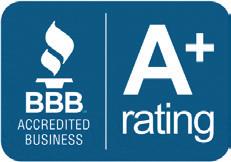


The show was ours! I know this is Partyline, but I was praying from the moment that “The Boy Is Mine Tour” was announced that it would make it to the STL. What? If I can’t be honest with y’all, then what’s the point? Anyway, I couldn’t have been the only nervous wreck contemplating hitting up a nearby tour stop just in case. There was no need. Y’all already know I have a praise report! Not only did they show up, but they showed out – and represented for the aunties at the same doggone time. That’s right, “The Boy Is Mine” was all about the for the aunties (…and the guncles. Where is the lie?). Let’s be clear: if you came in with a 40-inch bust down, Sunday night wasn’t for you. This was for the pixie-cut Pams, the sista curls Sheryls and the roller-set Rochelles. In case that wasn’t clear enough, I’m talking about the suedeboot-wearing, French-hattilted aunties (aka Mary J. Blige Jrs) who came to hear the girls sing the stage down. In other words, I was all up in my element!
baby daddy in St. Louis. Was I the only one like, “Wayment (yes, wayment), is she quietly giving up some tea?” What?
Y’all know I’m messy for a living! Let me get back to the show before Kelly sends one of those soldiers her and Beyoncé ‘nem sing about to get me for being in her business! She sounded as good as she looked – Brandy, Monica and Muni did too! And we got a tasty treat when 2025 “American Idol” winner Jamal Roberts gave us a sample of his crazy vocal skills. He had the nerve to sing “Untitled (How Does It Feel)” and kill it! Now I did take issue with him having all those roses and not handing them out. Everyone knows that intense eye contact and a tenderly delivered rose during a concert is iconic auntie-bait behavior. How are you gonna half step, sir?

If you told Siri, “Play me some powerhouse performers,” she would’ve queued up exactly who hit that stage at Enterprise Center—Muni Long, Kelly Rowland, Brandy, and Monica. Vocals were “vocaling” and the nostalgia was heavy!
And let me give props to whatever Tae-Bo, Shaun T. or Peloton workouts that Kelly has been up to. Kelendria Trene Rowland, every Tyrone and DeMarcus is going to be erroneously expecting our bodies to be snatched for the rest of our lives thanks to you! And then she had the nerve to threaten to find her

Getting lifted with John, Josh and Becky. You know us aunties can’t do that back-to-back concerting on a work night, so I was expecting to representing by myself for my boo John Legend’s “Get Lifted 20th Anniversary Tour” Monday night at The Factory. The gag was that we couldn’t have packed the show out if we wanted to, because the soccer moms and middle management dads had already bought up all the tickets! For real, if they hadn’t had hip hop playing in the background before the show, I would have thought I had accidently showed up for the Yacht Rock Revue. I was like, “Oh wait, this is the ‘All of Me’ audience.” But when he hit the stage, it was clear that they might have found him through “All of Me” but they

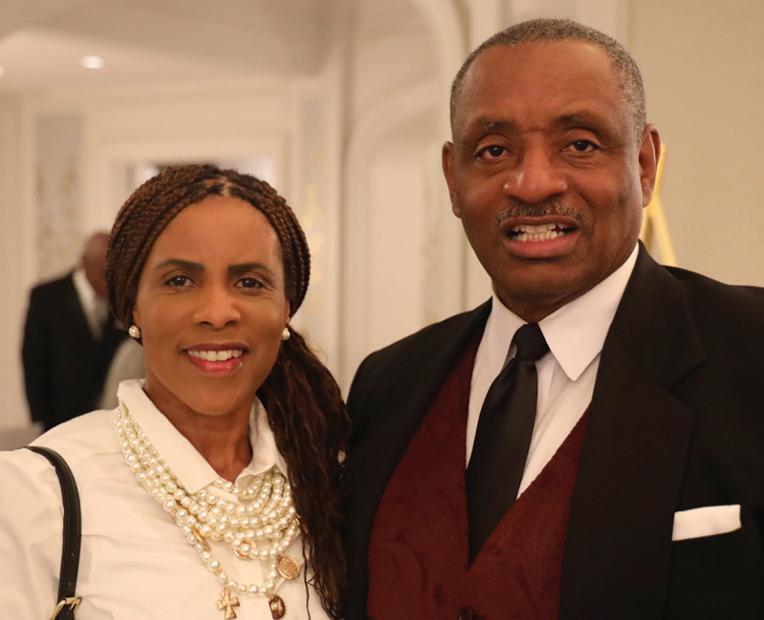

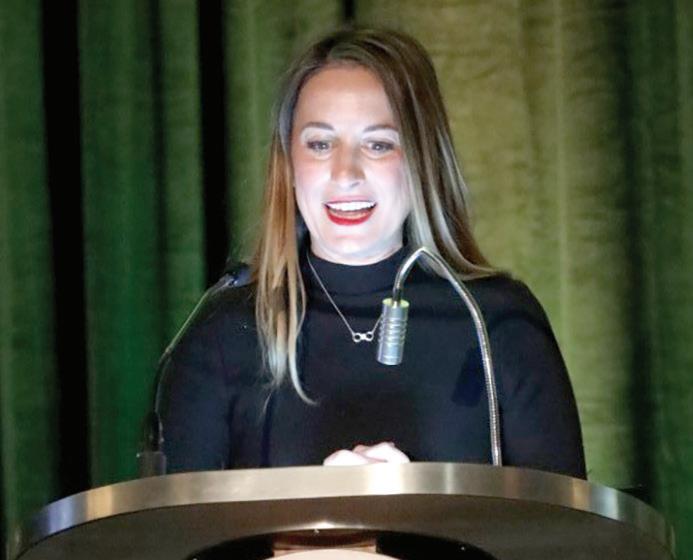
did their research. They knew all the words as well as us day ones. I had a cute time revisiting the days when I was convinced that he wanted to shoot his shot when he popped up in the late great Loft before he played that show at The Arch. He didn’t even know I was there, but I had decided otherwise. But enough about my throwback delusions, let’s talk about how he took us back to the early 2000s with his music, and I got my whole entire life. He performed the whole album, y’all. I’ve been going to John Legend shows for twenty years and Monday night

was the first time I heard “Live It Up” and “It Don’t Have to Change” live. He did a few of his favorites from some of his other albums, like “Green Light” and “Heaven Only Knows.” And he did “All of Me” too. He knew that the audience might have staged a mutiny if he hadn’t.
Pleased by the Shuffle. Even though my day was already jam packed, it wouldn’t have set right with my soul if I hadn’t made my way to Kirkwood Saturday afternoon to see Robert Townsend after he blessed me with “The Five
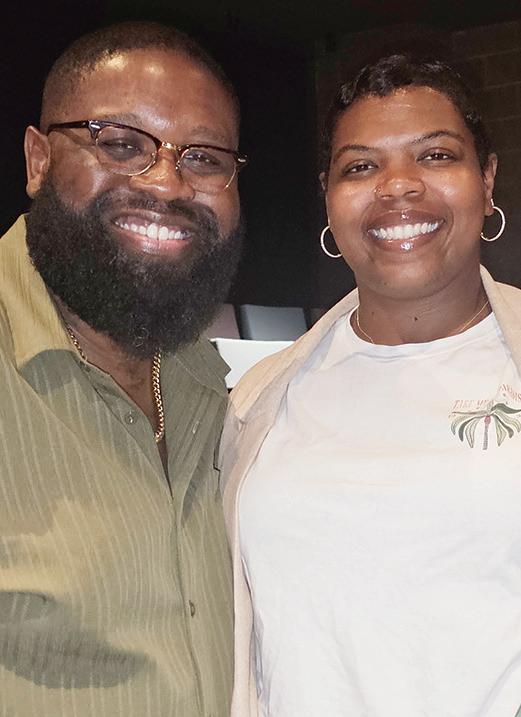
Heartbeats,” “Holiday Heart” and the iconic “Hollywood Shuffle!” I didn’t know what to expect from him in a one-man show, but it was really good. As he took us through his life, he also took us through all of the emotions with the ups and downs. I laughed. I wanted to cry – but I didn’t, because y’all know good and well that I don’t do raw emotion like that – and I was inspired.
Reuniting with Café Soul. They’re back! And I’m not using my Carol Anne from “Poltergeist” voice, either. I mean this in the best way humanly possible! One of my favorite nightlife experiences of all time will be back at the House of Soul (1204 Washington Blvd) on Saturday, November 29 for a Café Soul Reunion. I don’t know who will be featured as far as the saingers (yes, saingers), because it is an open mic after all. Those of us who have been fans of the Café Soul experience since the Lucas School House days already know that a time will be had. I’m sitting here thinking about all of the greatness – local and national – who have graced the Café Soul stage through the open mic and their concert series. Big things have happened for the old faithfuls. Wil Robinson is in After 7. Mark Harris II is with Najee. Tish Period was just on “The Tamron Hall Show.” I could go on and on, but I don’t have any more space left. Be sure to stop through. Doors open at 8 p.m. You won’t be disappointed.

350 guests attended the elegant event at the Ritz-Carlton, St. Louis, Friday, November 7th
The St. Louis American’s Publisher, Dr. Donald M. Suggs, was honored with the Betty and Jack Thompson Lifetime Achievement Award. The evening included a cocktail reception, live music, a fashion show, ‘Ohana Holiday,’ by local designer, Jazmine Ross, as well as student testimonials and inspirational speeches. The evening concluded with an invitation to support the 501 (c)3 with tax-deductible contributions and a lively after party. Proceeds of this event support more than 35 endowed college scholarships, the annual HBCU College Tour and the ‘More Hopeful Futures’ grants for students and young adults.



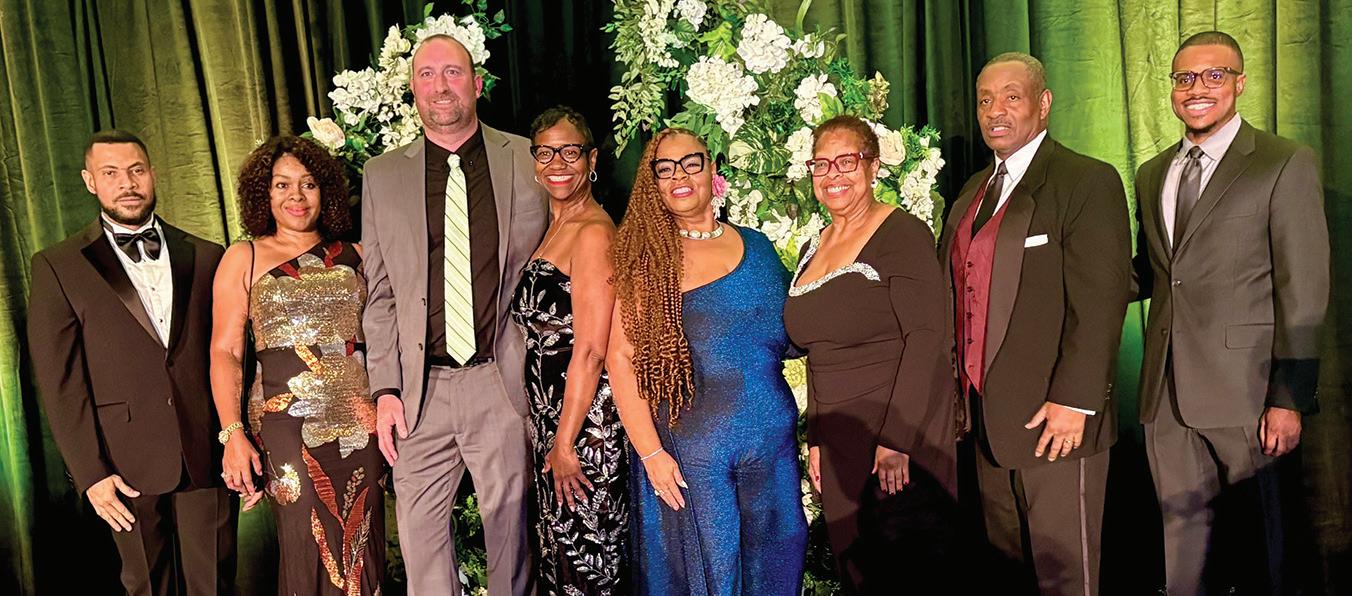

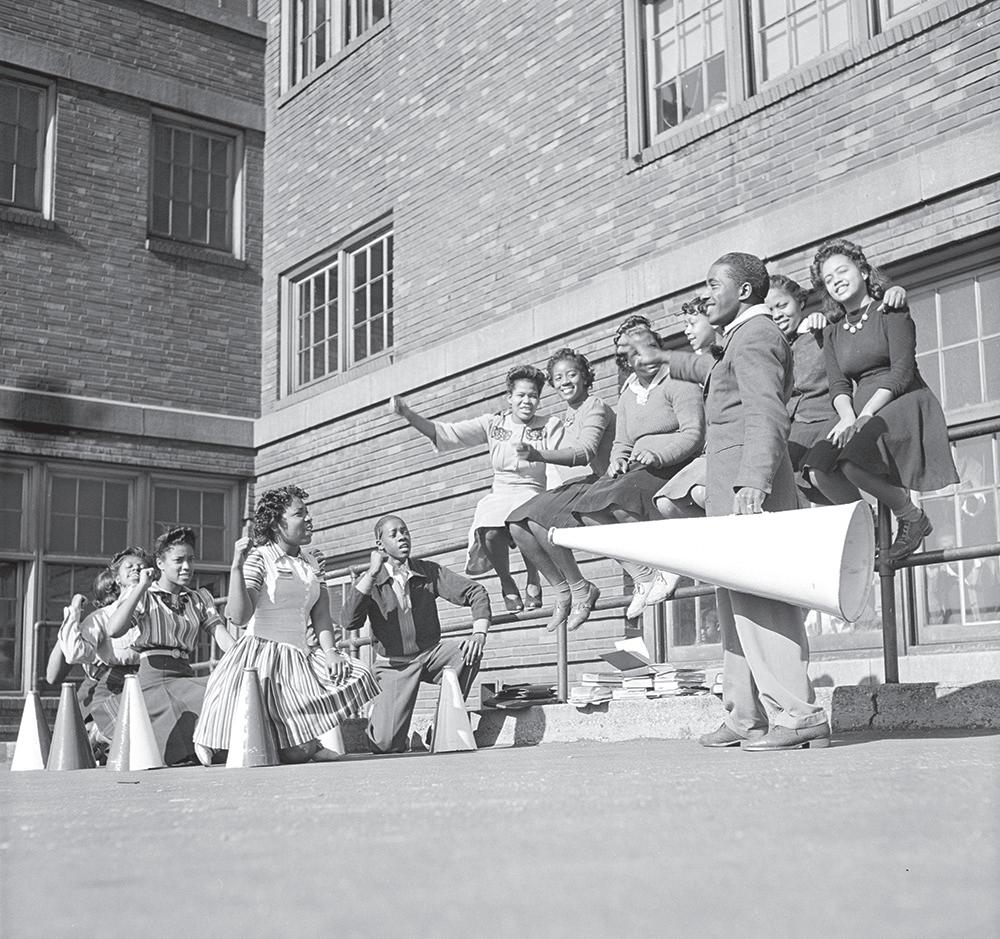
By Ayan Ali, Missouri Historical Society
Since its founding in 1927 in St. Louis’s Mill Creek neighborhood, Vashon High School has stood tall as a powerful symbol of Black self-determination, intellectualism, and cultural pride. But for much of that time, the school and its community have been locked in a protracted struggle to keep Vashon’s doors open against systemic racism, institutional neglect, and the aggressive reshaping of St. Louis’s neighborhoods.
That struggle came to a head in the 1990s with the formation of the Save Vashon Committee, a grassroots movement led by alumni who fought to preserve the school in the face of district attempts to dismantle it—the latest in a long line of battles for institutional investment. The seeds of Vashon’s decline were planted in postwar St. Louis. In the late 1950s, St. Louis embarked on one of the country’s largest urban renewal projects, demolishing hundreds of homes, businesses, and cultural institutions in the Black community of Mill Creek in the name of revitalization—and displacing its 20,000 residents in the process.
For many Black St. Louisans, urban renewal policies amounted to state-sanctioned dislocation and erasure. Vashon was not immune. In 1963, Vashon was forcibly relocated from its historic building on Laclede Avenue (now part of Harris-Stowe State University) to the outdated Hadley Vocational School on Jefferson Avenue. The move to the new site, which was poorly equipped and materially divorced from the school’s pioneering legacy, was widely seen within the community as yet another institutional slight, one that stripped the school of its symbolic roots.
Vashon was able to weather the involuntary move and blossomed in its new location. However, the fight to save Vashon would enter a new phase in the next decade under different but no less disruptive circumstances. In 1972, a federal school desegregation lawsuit dramatically reshaped St. Louis’s educational landscape. The resulting plan, implemented in 1983, created one of the country’s largest interdistrict voluntary desegregation programs. For the next 15 years, thousands of Black students were bused from St. Louis City to predominantly white suburban schools, a process that left many city schools underpopulated, underfunded, and neglected.
Vashon was among the schools most impacted by the busing program. While

Cheerleaders and students at Vashon High School in Mill Creek, 1941.
its students and faculty remained committed to academic, artistic, and athletic excellence, Vashon’s building quickly fell into disrepair. A 1985 school bond issue, which stemmed from the desegregation settlement, earmarked millions of dollars for school renovations, and several city schools received long-overdue upgrades. But when Vashon students, alumni, and community members questioned when their school would see its share, the Board of Education revealed that funds allocated for Vashon had been diverted to other institutions. The board’s justification? The district was quietly considering closing the school altogether.
The news sent shock waves through the Vashon community. In response, alumni leaders Vitilas “Veto” Reid and Robert Spain, along with a growing coalition of advocates, formed the Save Vashon Committee. Their goal was not only to keep Vashon’s doors open, but also to secure a new, state-of-the-art facility for students. For more than a decade, the committee mounted an aggressive, multifaceted campaign that challenged the Board of Education, the state, and the federal government for redress for decades of structural neglect and racial inequality.
In 1998, Missouri passed Senate Bill 781, which outlined the future of public schooling in the state once the court-ordered busing ended. Crucially, the bill contained a stipulation that before receiving state funding, the City of St. Louis would have to provide matching funds.
The Save Vashon Committee helped mobilize a citywide coalition of organizations to push for a tax increase to close the monetary gap. The committee engaged in letter-writing campaigns, public rallies, and other forms of political agitation to build support for the tax increase. In 1999, voters approved the measure, paving the way for the construction of a brand-new Vashon High School.
The groundbreaking ceremony was held on May 3, 1999, and the new Vashon officially opened on September 3, 2002. After decades of delay, disappointment, and determination, the new school stands tall as a monument to community activism and Black educational persistence. Today, Vashon serves as a testament to what sustained grassroots advocacy can achieve in the face of bureaucratic indifference. Its story is a powerful reminder that schools are not just sites of learning, but also battlegrounds for the meaning of public space, memory, and belonging.
Vashon is featured in the Mill Creek: Black Metropolis exhibit, now open at the Missouri History Museum.
























By Sarah Fentem St. Louis Public Radio
Many low-wage workers who rely on the Supplemental Nutrition Assistance Program were on an emotional roller coaster during the federal government shutdown about if and when their payments would arrive.
But new research shows that even when there isn’t a shutdown, people have a difficult time accessing those federal benefits.
Researchers at Washington University and the University of North Carolina surveyed hundreds of workers with incomes below 250% of the federal poverty line — about $40,000 a year for an individual.
The resulting report quantified what many already know: Thanks to a confounding maze of administrative burdens, getting and staying enrolled in welfare pro-
grams can limit their reach and effectiveness among the groups that rely on them the most.
“The ability to afford food and access healthcare is essential,” the authors wrote in the research brief from Wash U’s Center for Social Development.
“Yet our findings show that major public programs like SNAP and Medicaid, which serve tens of millions of people, are imposing substantial burdens on many Americans … and we find that these burdens are highest for those who need the program the most.”
Researchers divided such barriers into three categories: learning burdens, which include difficulties in understanding benefits and eligibility; compliance burdens, which include difficulties filing paperwork or attending caseworker meetings; and psychological burdens, which include the stress

Thanks to a confounding maze of administrative burdens, getting and staying enrolled in welfare programs can limit their reach and effectiveness among the groups that rely on them the most.
and shame of interacting with the benefits system.
The most common bur-




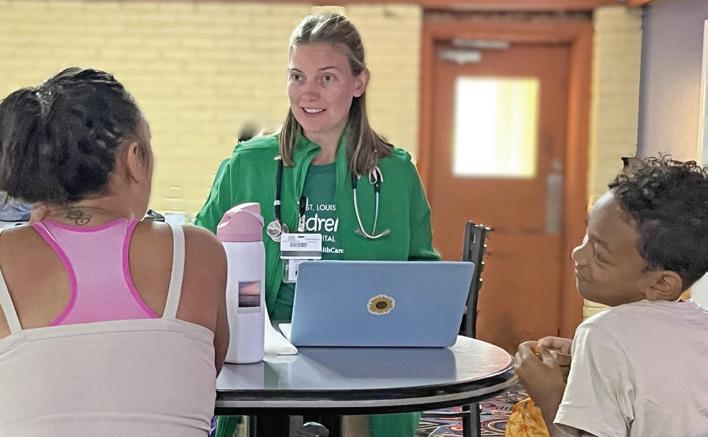
We’re in Your Community
The Healthy Kids Express™ is a free program offered through the Child Health Advocacy and Outreach department at St. Louis Children’s Hospital. It is the region’s only free, comprehensive, and regularly scheduled fleet of mobile health units that provide children with access to a variety of services. The Healthy Kids Express program has performed more than 200,000 screenings for hearing and vision, anemia, lead, dental, and asthma.
The team recently held their Back to School asthma event at Crest Bowl bowling alley in Florissant. The event offered parents and their children an opportunity to meet the HKE team members that provide services during the school year. Healthy Kids Express staff answered questions and provided training on asthma equipment. Families also enjoyed refreshments, face painting, balloons, and bowling.
To learn more about the Healthy Kids Express and if their services are offered in your area, please scan the QR code.
dens were those associated with uncertainty about households’ eligibility for programs. That uncertainty affected close to one-third of SNAP and Medicaid recipients, the researchers found.
Around one-fourth of SNAP beneficiaries and one-fifth of Medicaid recipients reported issues providing documentation, and 10% of beneficiaries for both programs reported forms of discrimination.
Those who experienced such burdens were more likely to deal with the issues that benefits are meant to alleviate, said Stephen Roll, one of the study’s authors and the director of the Center for Social Development.
“Folks that reported the highest rates of burdens in trying to maintain their eligibility for sample also those at the highest risk of hunger,” he said. “And with Medicaid, we did, we did a similar analysis and actually found that the folks most likely to experience these burdens in enrolling in or staying on Medicaid tend to be those with the highest rates of chronic disease in the household.”
The burdens were not evenly distributed across demographics, the researchers found. Households that included a person with a disability reported consistent burdens across all categories. Those with relatively
higher household incomes reported more learning burdens, perhaps because they were less likely to have experience navigating welfare systems. Those with higher educational attainment reported more psychological burdens.
Roll said it’s important to study the burdens on the working poor as a group.
“They’re doing what we want them to do,” he said. “But even despite that, they’re still facing all these pretty diverse and complex barriers, so like accessing the benefits that they’re entitled to under law to try to support their families.”
More people could experience such administrative burdens in the future as a work requirement for Medicaid recipients goes into effect in 2027. Advocates have expressed concerns that having to provide proof patients are working, looking for work or volunteering will result in tens of thousands of Missourians being kicked off the government program’s rolls. The researchers recommended making applications shorter and easier to understand and using existing information in government systems to confirm eligibility without recipients having to continually provide documentation.
Governments using internet and mobile-based systems instead of mail and paper-based documentation would also make it easier for people to navigate benefits, Roll said.
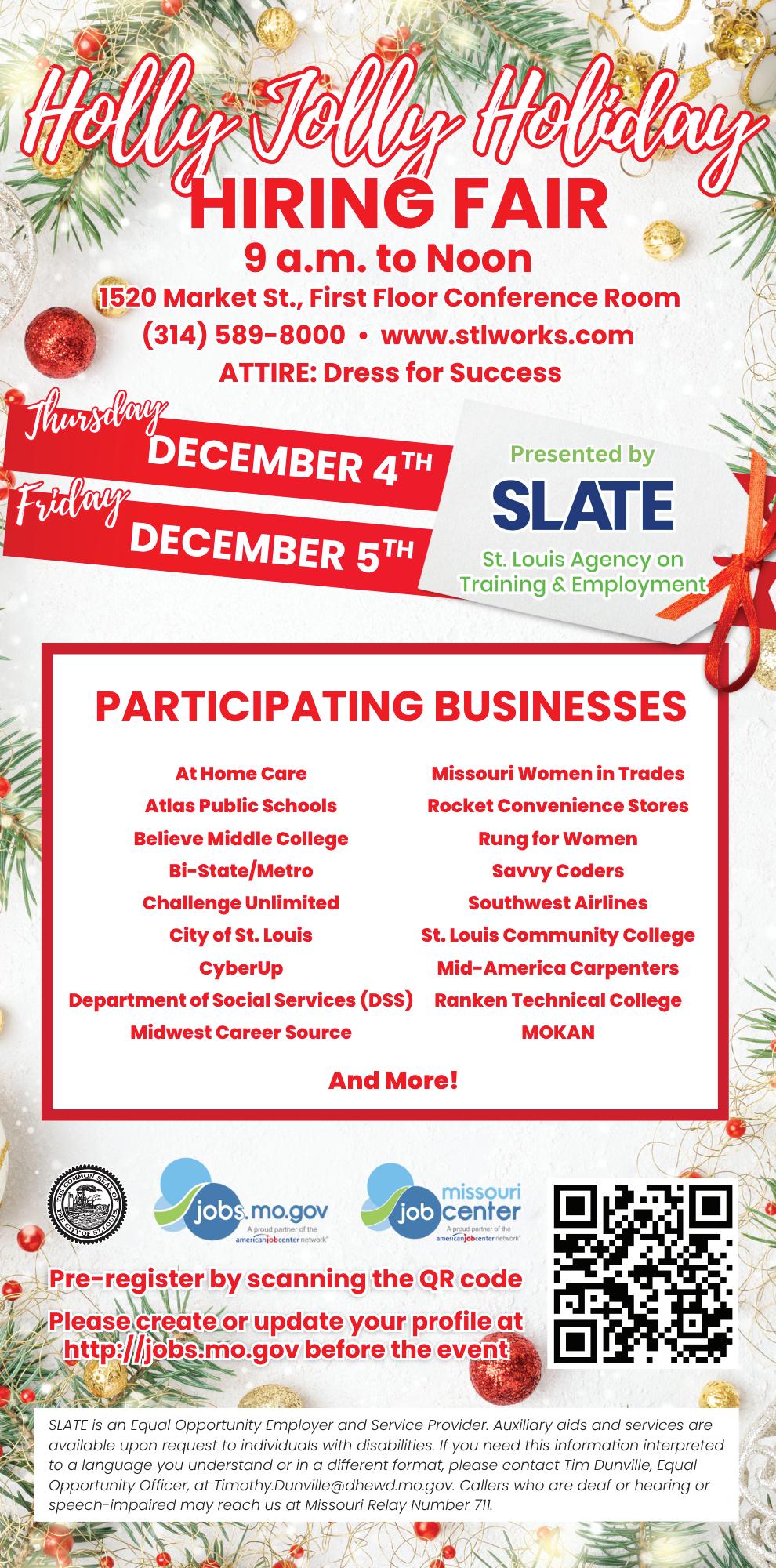
“I don’t think I played good at all.”
– Cleveland Browns rookie quarterback Shedeur Sanders, on his debut performance against Baltimore

With Earl Austin Jr.
There was plenty of excitement for area football fans at last weekend’s district championship games.
There were high scoring games, fantastic finishes and multiple overtime games on what was a wild Friday night. The highlight game of the evening was played at CBC, where the host Cadets and Lafayette staged one of the highest scoring games in the history of the Missouri playoffs. CBC outlasted Lafayette 77-62 in a battle of undefeated teams in the Class 6, District 2 championship game. The two teams played to a 34-34 tie at halftime and did not slow down in the second half.
three playoff victories, the Flyers have outscored their opponents by a combined score of 165-21.
Quarterback Reece Shanklin completed 11 of his 17 passes for 254 yards. Senior wide receiver Kortez Rupert had five receptions for 106 yards and two touchdowns.

The Flyers will be on the road for the state semifinals on Saturday where they will face Burbank (St. Laurence). Kickoff is scheduled for 1 p.m.
District Championship Standout Performers
There were also three games that were decided in overtime. Fort Zumwalt North defeated Parkway West 21-20 when the Panthers stopped West on a two-point conversion in the overtime to win it. Sullivan defeated Vianney 29-28 as the Eagles converted a two-point conversion for the win. In the third game, Fort Zumwalt West edged Troy 34-31 on a game-winning field goal.
East St. Louis advances to the state semifinals
The East St. Louis Flyers continued their dominant postseason run as they defeated visiting Chicago Simeon 49-0 in the IHSA Class 6 quarterfinals at Clyde C. Jordan Stadium. In their
Senior running back Manny Ellis of Cardinal Ritter rushed for 321 yards on 31 carries and three touchdowns in the Lions’ 36-3 victory over Ladue.
Senior running back Vic Williams of CBC rushed for 182 yards and scored four touchdowns, including a 75-yard kickoff return in the Cadets’ 77-62 victory over Lafayette.
Senior quarterback Nic McClellan of CBC rushed for 200 yards, passed for 125 yards and a touchdown and had an interception in the Cadets’ 77-62 victory over Lafayette.
Junior defensive lineman D’Anton Berry of Kirkwood had eight tackles and a sack in the Pioneers 21-10 victory over Eureka.
Junior running back
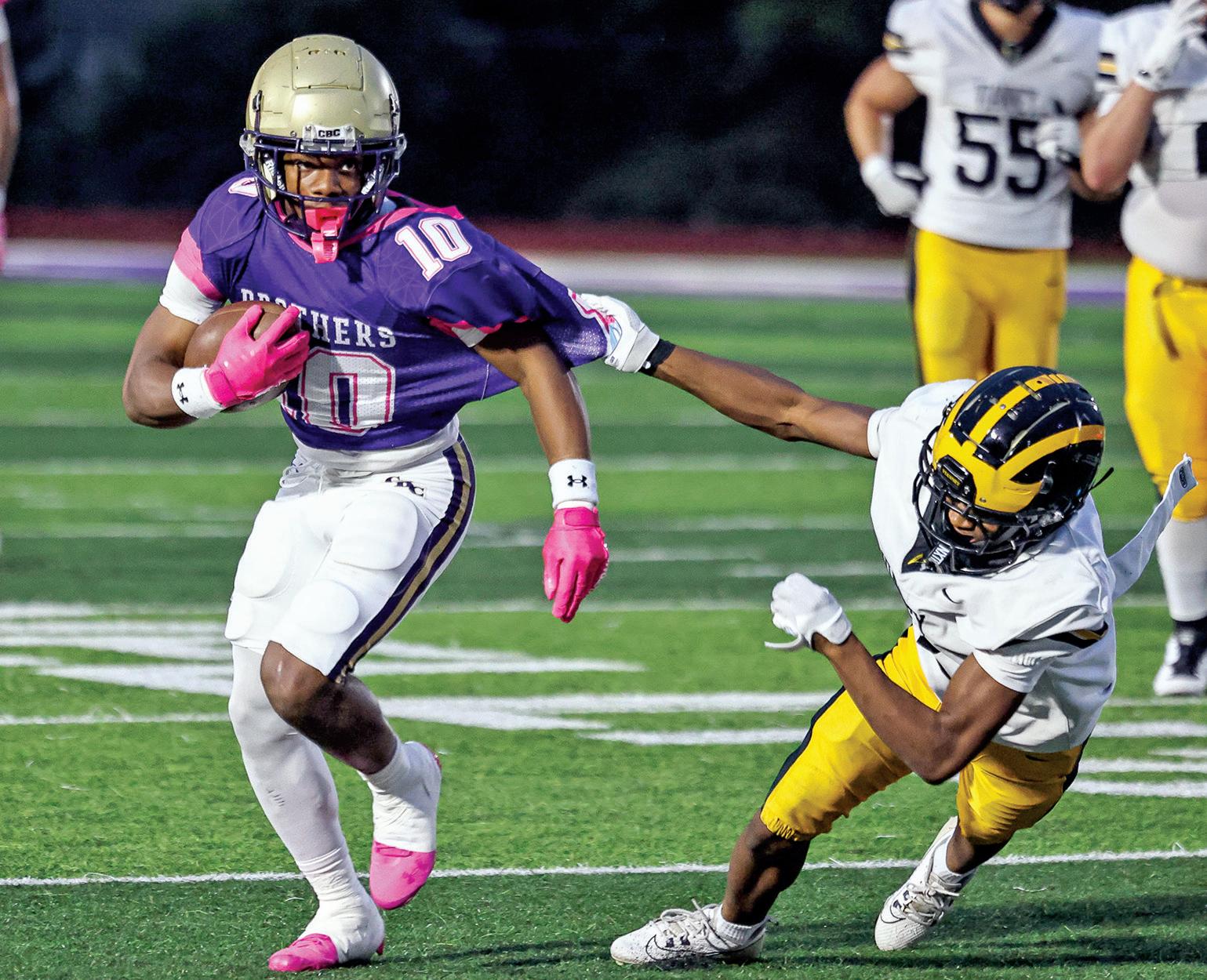
running back Vic
for
and scored four touchdowns in
District 2 championship game last Friday night at CBC. He’s shown here running against Vianney earlier this season. The Cadets will visit Jackson on Friday night in the state quarterfinals.
Kingston Miles of St. Mary’s rushed for 247 yards and four touchdowns in the Dragons’ 35-12 victory over Lutheran North.
Senior wide receiver Jacob Eberhart of Kirkwood had eight receptions for 119 yards and a touchdown in the Pioneers’ 21-10 victory over Eureka.
Senior running back KJ Burns of Parkway North rushed for 103 yards on 21 carries in the Vikings’ 17-14 victory over Orchard Farm.
Senior quarterback Brady Micek of Lafayette passed for 384 yards and three touchdowns in the Lancers’ 77-62 loss to CBC.
With Alvin A. Reid
Junior running back Jayden Burleson of Fort Zumwalt South rushed for 218 yards on 27 carries and two touchdowns in the Panthers’ 21-20 overtime victory over Parkway West.
Junior quarterback Phoenix Isaiah of Lift for Life completed 18 of 23 passes for 189 yards and three touchdowns in the Hawks’ 48-34 victory over Valle Catholic.
Senior wide receiver Tim Washington of Lafayette scored three touchdowns, including a 98-yard kickoff return in the Lancers’ 77-62 loss to CBC.
Darius Miles’ financial story is a warning to all young athletes, regardless of their race or family background.
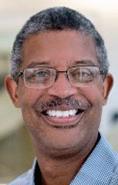
Alvin A. Reid
In an intriguing story compiled by Mislav Puljiz of MSN’s BasketballNetwork.net, Miles’ life is examined through current and past interviews. It includes cautionary tale of how six years after retiring –and earning $62 million before taxes – he filed for bankruptcy.
Miles starred at East St. Louis Linoln and East St. Louis High School and had signed a letter-of-intent to play for coach Mike Jarvis at St. John’s in New York. The impoverished kid raised by a single mother had a bright future. He would skip college and was selected by the L.A. Clippers with the third overall pick in the 2000 NBA Draft. His first contract was for five years at $3 million per year. He was traded to Cleveland in
2002, where he was paid $7 million per year.
After missing two seasons on the court following microfracture knee surgery, Miles played for the Portland Trailblazers in 2008-08 ($9 million annually).
He finished his career with the Memphis Grizzlies during the 200809 season – and was on his way to financial insecurity.
“When you’re young, you think the money is gonna last forever,” Miles shares.
“I don’t care how street smart you are, or who you got in your corner, when you go from not having anything to making millions of dollars at 18, 19 years old, you’re not going to be prepared for it.”
Miles reportedly lost $100,000 in one real estate deal in 2008. He also surrendered “a significant amount” as an investor in a group purchasing in real estate in downtown St. Louis. It led to “multiple multi-million-dollar lawsuits.”

Miles’ mother succumbed to cancer in 2008, and he said depression played a role in his financial downfall along with child support payments.
“Listen, it takes a long time to go broke buying Ferraris. What makes you go broke are shady business deals. They’ll make the money disappear quick,” he said.
Miles has found a way to share his story with young players of all sports.
He is a co-host of The Knuckleheads podcast with former Clippers teammate and childhood friend Quentin Richardson Posted on The Players Tribune website, Miles and Richardson interview former and current profes-
sional basketball players from the perspective of ex-NBA players. It includes “totally unguarded conversations about sports, culture, and basketball nostalgia. A recent guest was former NBA All-Star Alex English, who shared how the NBA Draft in the 1970s was much different than today’s version.
The Reid Roundup
It was a short NBA season for St. Louis native Bradley Beal. The L.A. Clippers guard suffered a left hip fracture in a
Darius Miles (right) and former L.A. Clippers teammate and childhood friend Quentin Richardson are co-hosts of the popular podcast The Knuckleheads.
Nov. 8 game and will undergo season-ending surgery He played in just six games after signing with the Clippers as a free agent…While he will likely miss the NBA season as he recovers from a torn Achillies, Boston Celtics forward Jayson Tatum has been on the bench for most of his team’s home games. “He has done a great job leading off the court with the work ethic of his recovery,” said Celtics coach Joe Mazzulla Missouri running back Ahmad Hardy became just the second player in
the schools’ history to rush for 300 or more yards in a 49-27 win over Mississippi State on Nov. 15. Hardy registered 300 yards and three touchdowns in the win…In case you’re wondering, Devin West of Moberly, Mo., had 319 yards rushing against Kansas in 1998…While he is certainly deserving, New York Yankees outfielder Aaron Judge would have received a second-place vote from me in American League Most Valuable Play balloting. Seattle Mariners catcher Cal Raleigh would have been my top choice… The Atlanta Falcons fell to 3-7 with last Sunday’s home loss to the Carolina Panthers. Without a dramatic turnaround, head coach Raheem Morris will likely be fired…The Houston Texans are 5-5 and head coach DeMeco Ryans is on the hot seat, as well…Michigan head coach Sherrone Moore has the Wolverines at 7-2 and in the hunt for a College Football Playoff berth. A prediction: Michigan ends visiting Ohio State’s undefeated season on Nov. 29.
By Rev. Dorothy S. Boulware Word in Black
Rev. LaTeka Graham is a champion at going against the flow.
In an era when a majority of professionals, including ministers, demonstrate their worth through sheer busyness — starting early and staying late, packing the workday with meetings and tasks, refusing to take breaks — Graham’s ministry centers on rest. She sees it as, arguably, life’s most valuable commodity and a spiritual requirement, albeit one that is too often neglected.
She’s seen it often: clergymen and women carrying an invisible burden, “leading others while quietly running on empty,” Graham says. But, she says, rest “is not a reward after the work; it’s a command woven into our calling.”
“With every sermon, consultation and written word, I seek to guide leaders back to Christ, the true source of rest, renewal and resilience,” she says. Graham recently sat down with Word in Black for an interview. It has been edited for length and clarity.
Word in Black: What inspired you to write With Uplifted Hands – REST?
LaTeka Graham: “I was inspired by the weight I saw so many ministry leaders carrying. God reminded me that rest is not a reward after the work; it’s a command woven into our calling. With Uplifted Hands – REST was born from that revelation.
WIB: What makes this devotional different than other leadership devotionals?

That dynamic inspired her to write and publish her first book, “With Uplifted Hands — Rest.” It’s a 30-day devotional written especially for ministers, she says, designed to help them “rediscover the beauty of surrender, reflection, and spiritual renewal.”
Although she elevates rest as a spiritual practice, Graham is no slacker.
She’s an ordained minister with a master’s degree. Graham and her husband have been married for 20 years, and they have raised two children. Her ministry helps connect faith visionaries with people and resources and guides them along a trajectory toward their desired outcomes.
Graham: Most devotionals focus on productivity, growth, or endurance. My book centers the conversation on stillness and on being, not just doing. It gently calls leaders to lay down the weight of performance and rediscover the peace of God’s presence. It’s both profoundly spiritual and deeply practical, giving leaders permission to pause without guilt.
WIB: Who is this devotional written for?
Graham: It’s written for pastors, ministry directors, worship leaders and anyone in Christian leadership who pours out more than they receive. But honestly, it’s also for anyone who’s ever felt weary in doing good. If you’ve ever prayed, “Lord, I’m tired,” this devotional is for you.
WIB: Why did you choose the title With Uplifted Hands?

Graham: “Uplifted hands” symbolizes both surrender and strength. It’s the posture of worship and the posture of rest, giving God control while receiving his peace. The title reminds readers that rest is found not in retreating from God’s work but in remaining connected to God’s presence.

Earl A Childress, II Chairman & CEO

WIB: How is the book structured, and how should readers use it?
Graham: Each of the 30 days includes a short devotional, a reflection question, a prayer and a leadership challenge. It is designed to be completed in just a few quiet minutes a day. The goal is to create space for inten-
How to Lead with Influence, Not Just Title: The Triple R Method™

Author’s note: Over the next several weeks, I will focus on an approach I developed called the Triple R Method™, and how to use it to break free from roles, mindsets, and habits that may be holding you back from growth.
We’ve all met the leader who has the title but not the trust. They can move a calendar, but they can’t move a room. On the other hand, I’ve seen people with no title at all who shaped culture just by the way they lived and led.
When I stepped into leadership at United Way, and later when I transitioned into banking, I didn’t have all the credentials or domain knowledge. What I had was the willingness to learn, the courage to act, and the faith to trust that influence would follow consistency. That’s the heartbeat of the Triple R Method™ — Reframe, Reclaim, Rename.
1. Reframe Your Thinking
Many leaders confuse authority with influence. They think the role gives them power. But real influence is earned — in how you listen, how you invest in people, and how you cast vision.
When I became CEO at United Way, I had to reframe my own thinking. I wasn’t just responsible for fundraising targets or program metrics; I was responsible for shaping how people believed in our mission.
Later, at the Bank, I remember my first meeting with the regulators. I was surrounded by experts who spoke in technical terms I didn’t know, language that would come up again and again as I engaged with our team.
I could have faked it, but I didn’t. Instead, I listened carefully and asked the right questions. That’s how trust was built. Not by acting like I knew everything, but by being real enough to learn.
Your Move: Ask yourself, “Am I leading with my title or with my example?”
Scripture says: “Whoever wants to become great among you must be your servant” (Matthew 20:26). Influence starts with service, not position.

tional pause, helping leaders shift from striving to resting in God’s promises.
WIB: What do you hope readers take away from this devotional?
Graham: My prayer is that readers will walk away with renewed strength and a gentler rhythm of grace. I want them to realize that rest is not weakness; it’s wisdom. That God does some of his greatest work not in our hustle but in our stillness. Resting is how we remain effective, anointed, and aligned with God’s purpose.
WIB: How does this devotional connect to your ministry, LRG Ministries?
Graham: With Uplifted Hands – REST reflects the heart of LRG Ministries — helping ministry leaders lead from a place of health, wholeness, and holiness. Through our leadership training, mentorship and devotionals, we equip leaders to serve with clarity, confidence and compassion; always remembering that the best leadership flows from a rested soul.
2. Reclaim Your Personal Agency I’ve been asked countless times, “How did you succeed in spaces where you didn’t have traditional expertise?” The answer is simple: I refused to wait for permission to lead.
At United Way, I studied the work, asked questions, and acted decisively. In banking, I did the same. I wasn’t a lazy learner, and I didn’t let the limits of my knowledge dictate the scope of my leadership.
Leadership is about owning what you can control — your preparation, your character, your consistency.
Your Move: Take one step this week to lead beyond your job description. Encourage someone. Propose an idea. Model the behavior you want to see.
Scripture says: “Do not neglect the gift that is in you” (1 Timothy 4:14). Agency means putting your gift to work, not waiting for validation.
3. Rename Your Social Networks Influence grows or shrinks depending on who you surround yourself with. I had a friend who I spent a lot of time with, but I realized he wasn’t trying to grow. If I kept him close, I would have absorbed his limitations. Quietly, I pulled back. He got the message. That decision freed me to spend more time with people who stretched me, people who were building influence, not just holding titles.
Your Move: Audit your circle. Who challenges you to lead with courage? Who’s content with comfort? Choose to walk with those who push you toward growth.
Scripture says: “As iron sharpens iron, so one person sharpens another” (Proverbs 27:17).
The Bottom Line Leadership isn’t about the corner office or the title on your email signature. Titles fade. Influence lasts.
Reframe your thinking. Reclaim your agency. Rename your networks. That’s how you lead with influence, not just title. Reflection Question Where are you leaning on title instead of cultivating influence, and what will you do this week to lead differently? For more, visit OrvinKimbrough.com or MidwestBankCentre.com.

The St. Louis Development Corporation (SLDC) is eagerly seeking candidates to join our team as we endeavor to bring economic justice to St. Louis City residents and communities that were disproportionately impacted by the coronavirus pandemic.
There are multiple 2-4-year limited term positions available, term of employment will vary for each position.
These positions will assist in the administration and implementation of various Coronavirus State and Local Fiscal Recovery Fund (SLFRF) Programs targeted for households, small businesses and communities adversely impacted by the pandemic.
All positions will be funded in whole or in part through an allocation of Coronavirus State and Local Fiscal Recovery Funds (SLFRF) from the US Department of the Treasury and the City of St. Louis’ Community Development Administration.
To apply online and see a full job description go to https://www.developstlouis.org/careers and then click “Open Positions & Apply Online.”
The terms of three current members of the Normandy Schools Collaborative (NSC) Joint Executive Governing Board (JEGB) are set to expire on June 30, 2026. An election will be held to fill their positions.
The public will vote for candidates on the April 7, 2026, ballot, and the newly elected members will join the Board in April 2026 and serve for three years Individuals who wish to run as candidates have a three-week window to apply. Per state statute § 162.083, RSMo, the filing period for the April election begins Tuesday, December 9, and closes Tuesday, December 30, 2025. Candidates must be residents of the Normandy Schools Collaborative geographic footprint.
According to the Missouri School Board Association, school board candidates must meet the following requirements:
• A United States citizen.
• A resident taxpayer of a district or voter of the district in urban districts.
• A resident of Missouri for at least one year.
• At least 24 years old.
Candidates must file in person at the St. Louis County Board of Elections, 725 Northwest Plaza Drive, St. Ann, MO 63074, between 8 a.m. and 4:30 p.m., Monday through Friday. Filing ends at 5 p.m. on the last day of candidate filing only. No filing will take place at the district office. The Board of Election office will be closed on December 25 and may also close due to inclement weather. You can find more information on the St. Louis County Board of Elections webpage.
For the first day of filing, a lottery will be conducted to determine ballot placement. Candidates who file after the first day will be listed in order of filing.
If you have any questions regarding candidate filing, please contact the JEGB Secretary, Cecelia Rigsby, at 314-493-0400, by email to crigsby@normandysc. org, or the St. Louis County Board of Elections at 314-615-1851.
REBID REQUEST FOR PROPOSALS #: 57825324, Educational Promotional Podcast/Online Education Prevention Curriculum
Harris-Stowe State University (HSSU) is requesting proposals from qualified individuals or organizations to provide the above listed requirement.
If interested, a copy of the request for proposals can be obtained by emailing Barbara A. Morrow at email address: morrowb@ hssu.edu and Corey Freeman at freemanc@ hssu.edu.
Proposals are due no later than 10:00 a.m. Central Standard Time (CST) on Wednesday, December 10, 2025 and must be emailed to: morrowb@hssu.edu and freemanc@hssu.edu
The University reserves the right to accept or reject any or all responses received, or to cancel this request in part or in its entirety if it is in the best interests of the University to do so.
McCarthy Building Companies, Inc. requests bids from qualified contractors for:
Phelps Health Emergency Department Addition Bid Package 2 –Building Controls - Re-bid
The new addition is approximately 80,000 SF and includes a fully fit-out Emergency Department, shelled spaces and support areas.
BID DATE:
December 11, 2025 by 2:00 PM CDT
Bid Documents will be available by 11/21/25. All contractors interested in this project must contact Mary Peterein via email at: mpeterein@ mccarthy.com
McCarthy Building Companies, Inc. is proud to be an equal opportunity and affirmative action employer.
McCarthy Building Companies, Inc. 12851 Manchester Road | St. Louis, MO 63131
Bids for Bronze Door Vestibule, Missouri State Capitol Building, Jefferson City, Missouri Project No. O2203-02 will be received by FMDC, State of MO, UNTIL 1:30 PM, December 18, 2025. Project information available at: http://oa.mo. gov/facilities
Bids for Construct Roadway and Parking Lot at Deutschheim State Historic Site - Pelster House Barn, Project No. X2325-01, will be received by FMDC, State of MO, UNTIL 1:30 PM, January 6, 2026. Project information available at: http:// oa.mo.gov/ facilities
Fairway Construction seeks bids from subcontractors, suppliers, and MBE/WBE businesses covered under the HUD Act of 1968 for the construction of: McKelvey Ridge
• 60 units, 66,664 sq ft Multi-family apartment building
• Location: 12204 McKelvey Rd, Maryland Heights, MO 63043.
Minority and WomenOwned Businesses are encouraged to apply. MWBE certification assistance available: call 470-367-2639.
Proposals accepted for all work divisions.
Bids Due: 11/13/2025
For bid documents, contact: Aslam Hayath ahayath@ fairwayconstruction.net
Fairway Construction 3290 Northside Pkwy, Suite 310 Atlanta, GA 30327 (404) 935-0077
FWC is an AA/EOE Employer and reserves the right to waive any bid informalities.
Interface Construction is bidding St. Louis Public Schools Storm Damage Projects.
ICC Is Bidding:
RFP 068 - Ashland
RFP 069 - Beaumont RFP 072 - Hickey RFP 074 – Soldan Field House
RFP 079 - Yeatman
Bids are due 12/1 at 2:00 PM
Email bids to dougs@interfacestl.com Email for bid documents access: dougs@interfacestl.com Phone 314-522-1011 (Office)
Bids for HVAC Improvements at Fulton Reception and Diagnostic Center, Project No. C240601, will be received by FMDC, State of MO, UNTIL 1:30 PM, December 18, 2025. Project information available at: http://oa.mo. gov/facilities
Bids for New Campground at Missouri State Fairgrounds, Project No. F2307-01
REBID, will be available for public bid in December 2025. When released, bid documents will be available at: http://oa.mo. gov/facilities
THE ST. LOUIS PHILANTHROPIC ORGANIZATION (SLPO)
ANNOUNCES ITS 2026 RESPONSIVE GRANT CYCLE
The St. Louis Philanthropic Organization (SLPO) 2026 Responsive Grant Cycle is now open! Nonprofit organizations serving St. Louis City residents are invited to apply for funding consideration. Grant requests may not exceed $10,000and must be used exclusively for program services within the city. Each agency may submit one application per grant cycle. Applications and all required attachments must be submitted through SLPO’s Grant Lifecycle Manager (GLM) platformno later than Midnight, February 6, 2026. Applications submitted by mail, hand delivery, or email will not be accepted. APDF of the application questions (for reference only) is available on SLPO’s website at www.stlphilanthropic.org
Join us for our annual Grantwriting Workshop on Wednesday, December 3rd at 9:00 a.m. hosted by the SLPO Board. The session -“From Challenge to Capacity: Strategic Grantwriting for Sustainable Impact” - will help nonprofits strengthen their funding potential through strategic storytelling, responsible AI use, and capacity-driven grant development. First-time applicants are required to attend to learn more about the platform and updated application process. Visit the SLPO website to register. The SLPO Board is proud to once again partner with Mosaic Beginnings, a management consulting firm whose diverse team brings over 100 years of combined experience helping organizations expand their capacity and achieve measurable impact. All SLPO-sponsored capacity-building workshops are offered at no cost to agencies. For more information, visit: www.stlphilanthropic.org
Momentum Academy is looking to contract with a firm to provide Managed Technology Services. All proposals due no later than December 15th, 2025 @ 12 P.M. Contact Carshaundra Baker, operations@ momentumacademystl. org, for more information.
Sealed proposals for Food Service Management will be received at Epworth
Children & Family Services, Inc., 110 N. Elm Ave. St. Louis, Mo. 63119 until 9:00 am on Saturday, January 31st, 2026 and then publicly opened. To receive copies of November 1st, 2025, RFP or for more information contact Kimberly Mims at (314) 918-3400.
Notice is hereby given that the Metropolitan St. Louis Sewer District Requests for Quotes, Bids and Proposals are posted online for public download. Please navigate to www.msdprojectclear.org >
PM (CT). Qualified Minority, Section 3, and Women owned businesses are encouraged to submit proposals. Plans can be viewed at FW Dodge, Construct Connect, SIBA, MOKAN, Cross Rhodes Reprographics, ePlan, Planhub, and the Altman-Charter online plan room. Bidders should contact Mr. Jon Press with any questions or to submit a proposal at jpress@altman-charter.com. Our telephone # is (636) 207-8670.
The St. Louis American Foundation’s 38th Annual Salute to Excellence in Education Gala brought together educators, students and community leaders for an unforgettable evening on Nov. 1 at America’s Center. More than $2.4 million in scholarships were awarded to future change agents through the foun-
dation and its partner universities.
Honorees included Dr. Rhonda Key, Tambra Pendleton, Dr. Michael Peoples, Dr. Michael Triplett and Erica Williams, along with Champions in Education Maxine Clark and Bob Fox.
The celebration also spotlighted Stellar Performer Mary Elizabeth



Grimes, president of Marian Middle School, and culminated with a Lifetime Achievement Award for Dr. Flint Fowler, retired president of the Boys & Girls Clubs of Greater St. Louis.
From heartfelt tributes to thunderous ovations, the gala illuminated the transformative power of education.

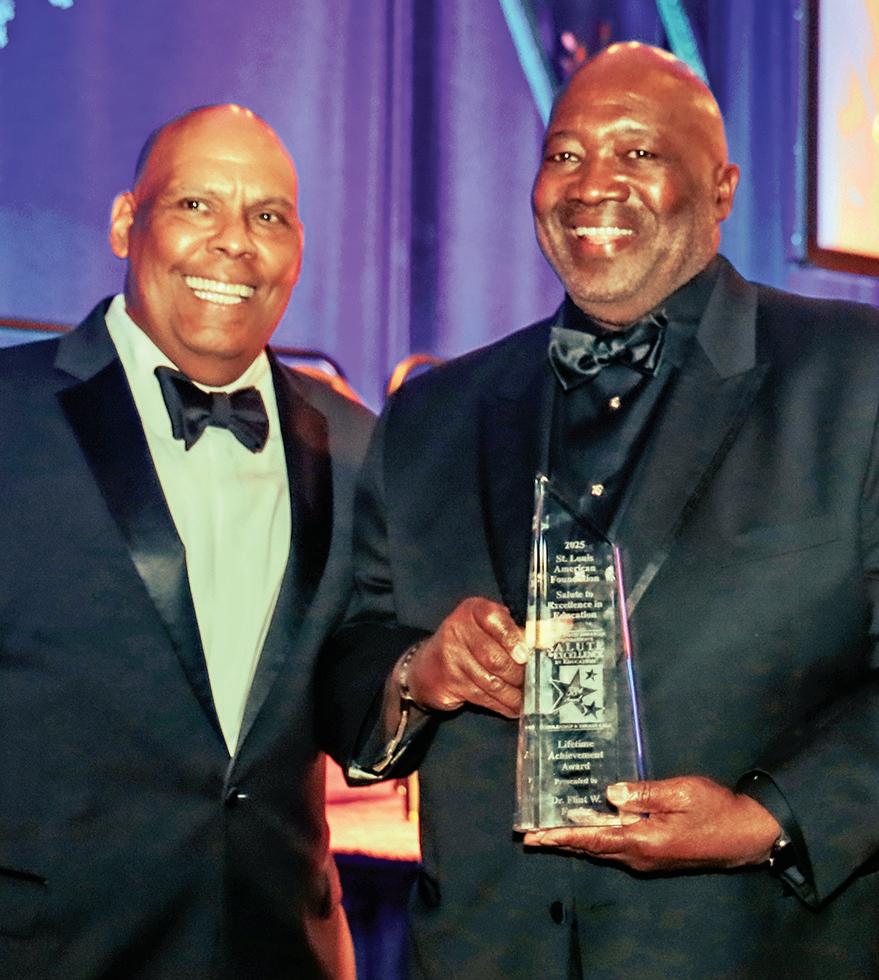
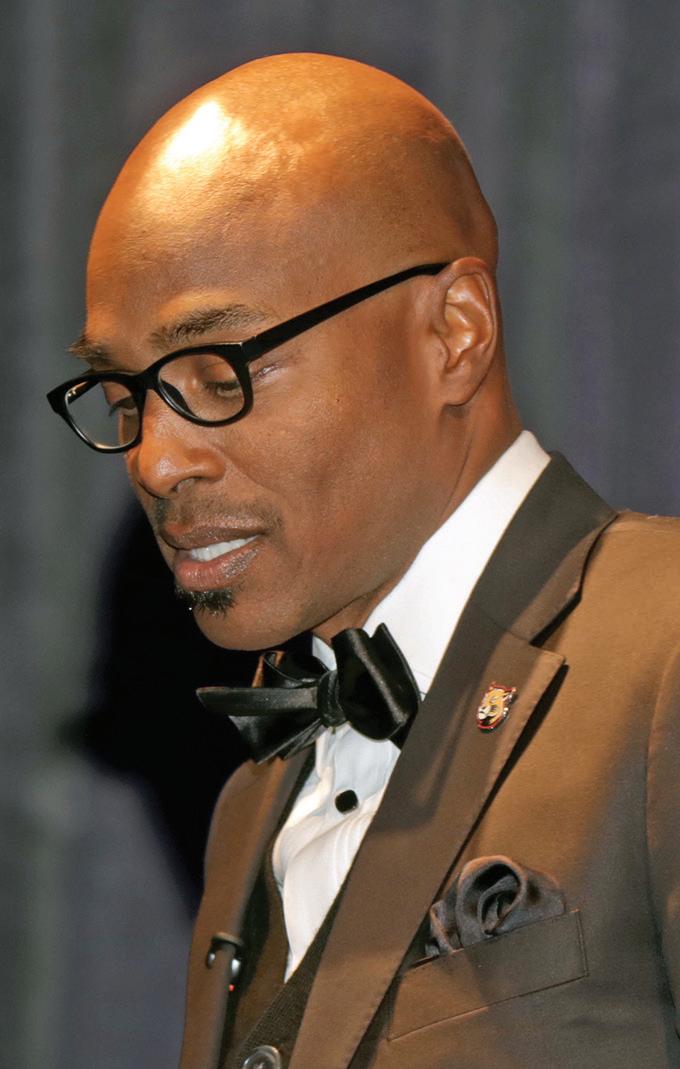


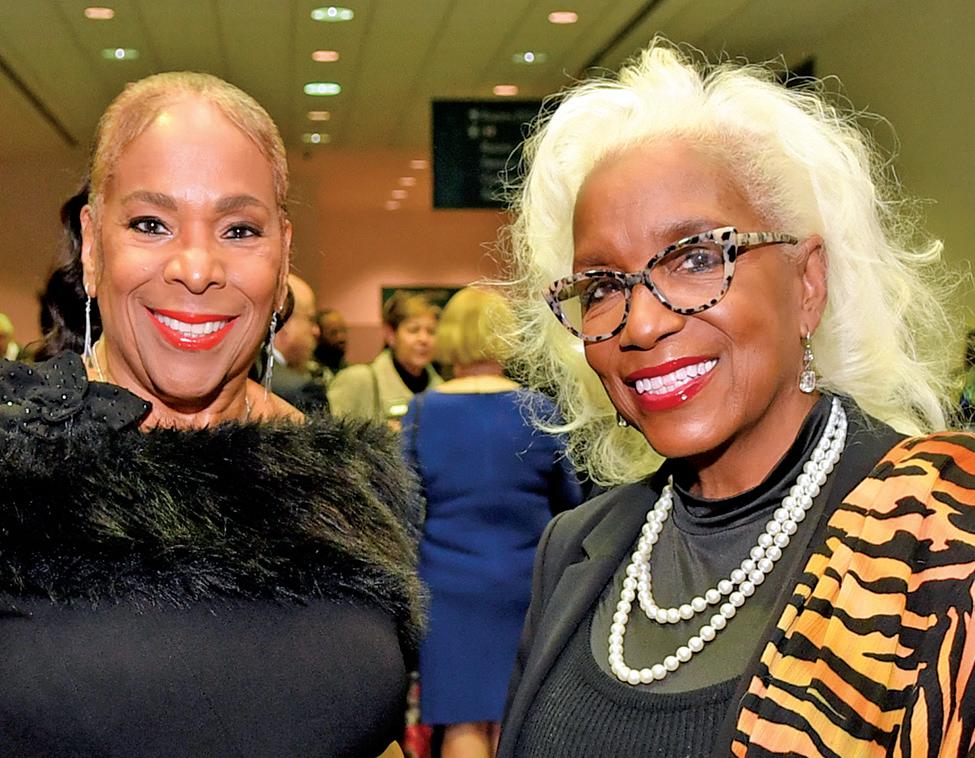
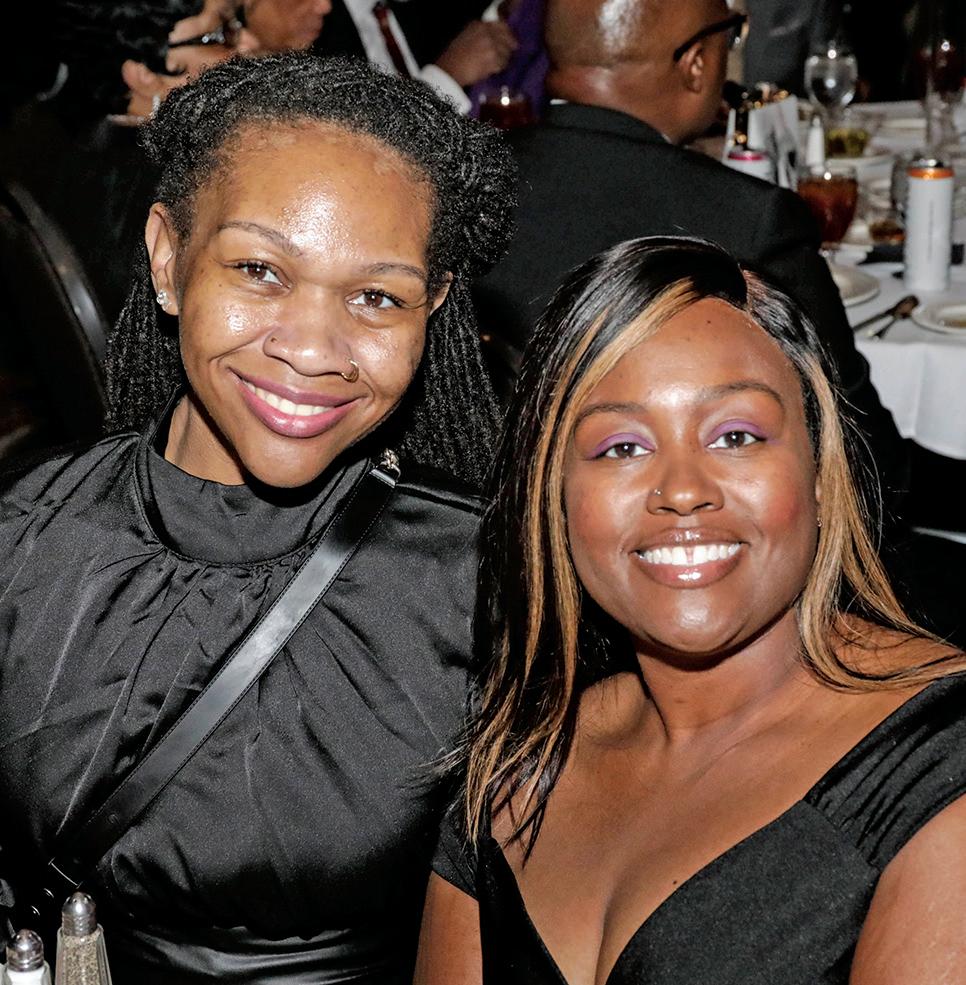
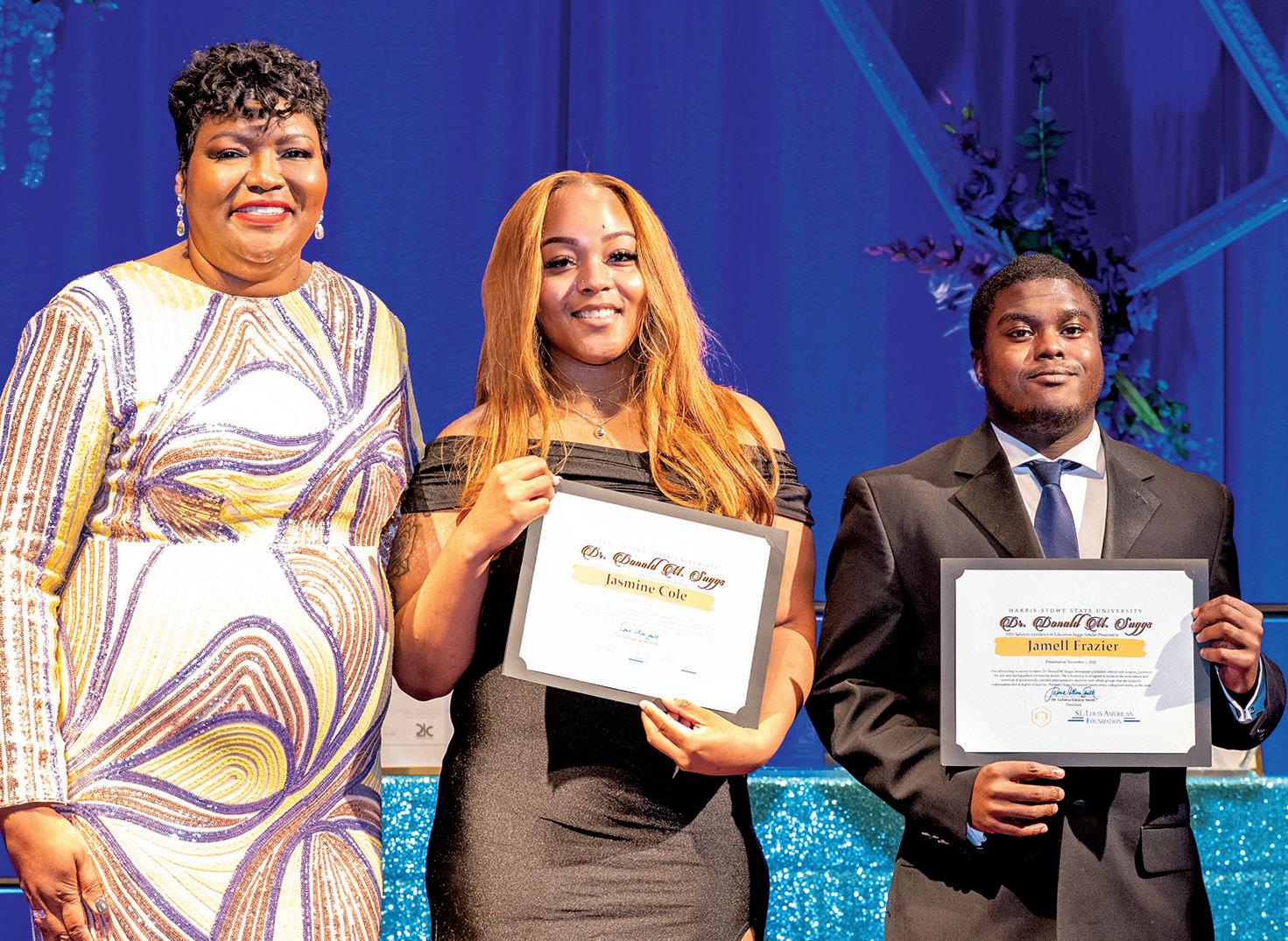
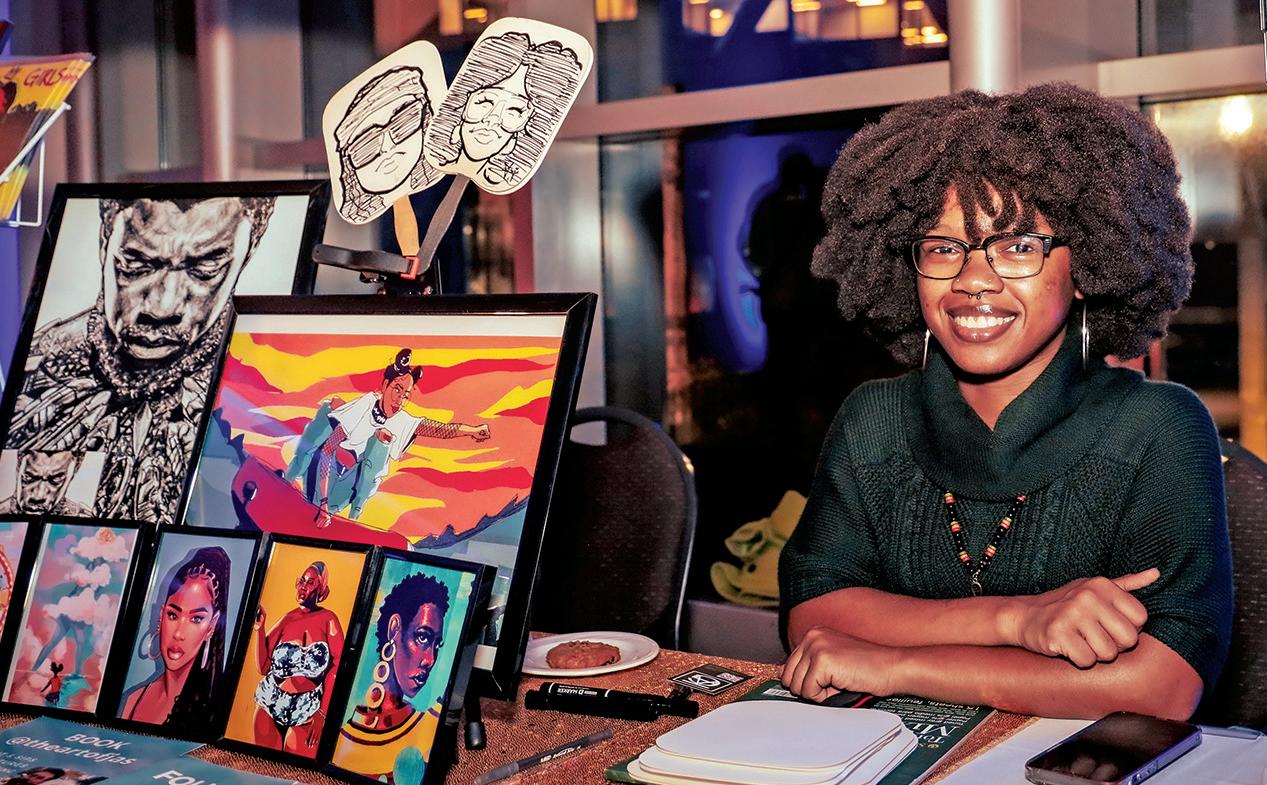
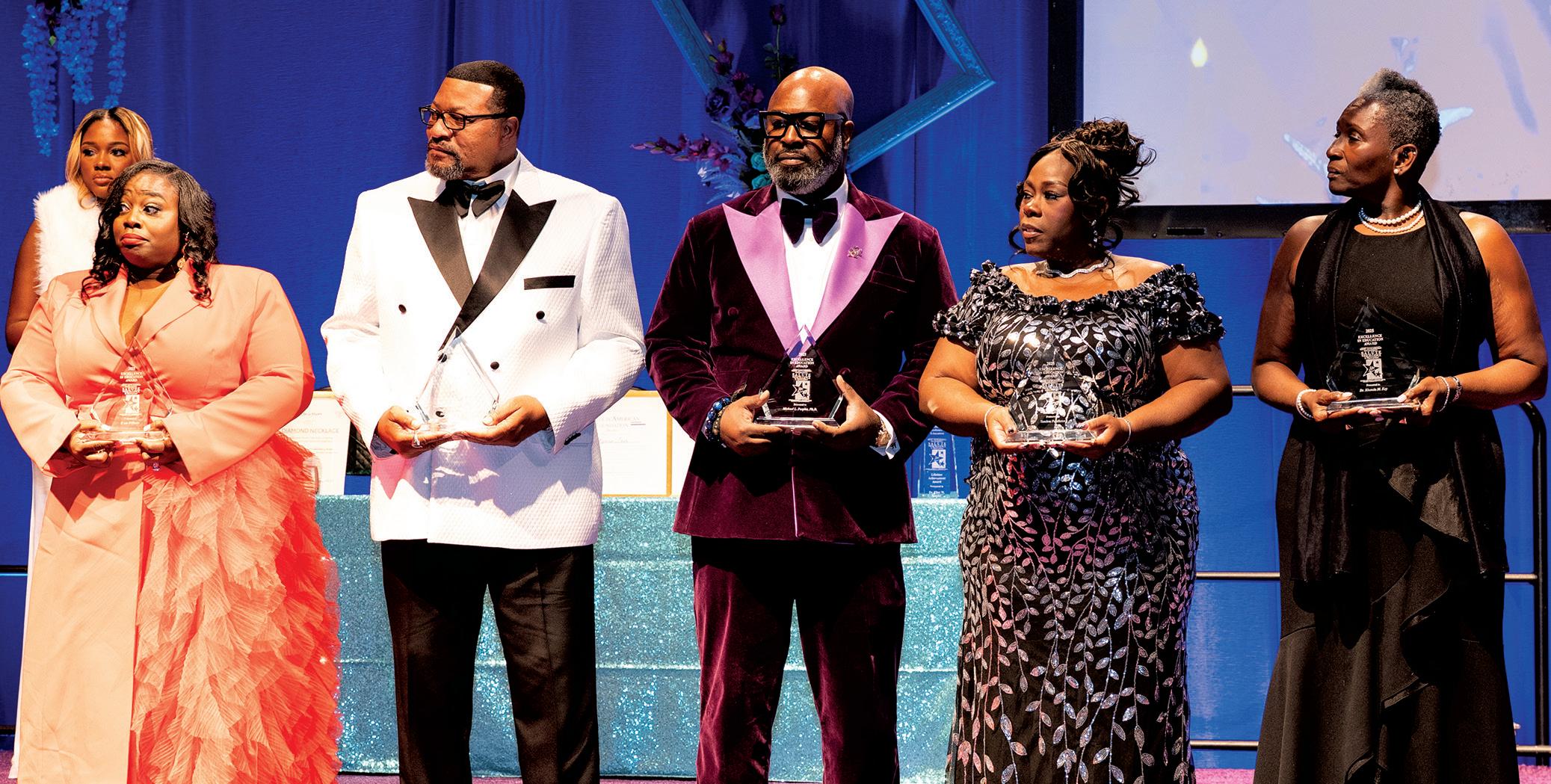






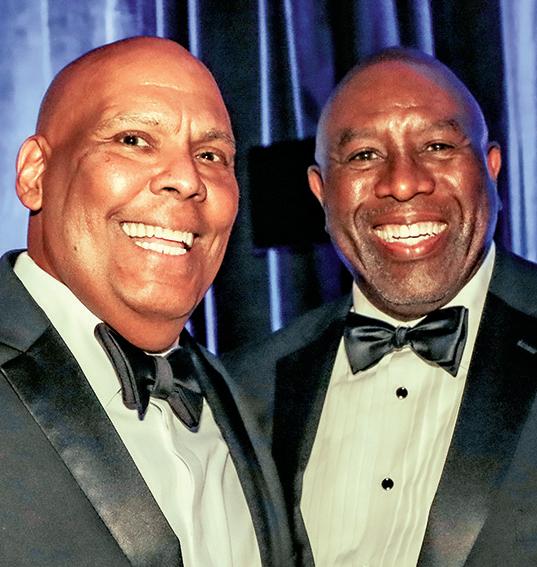



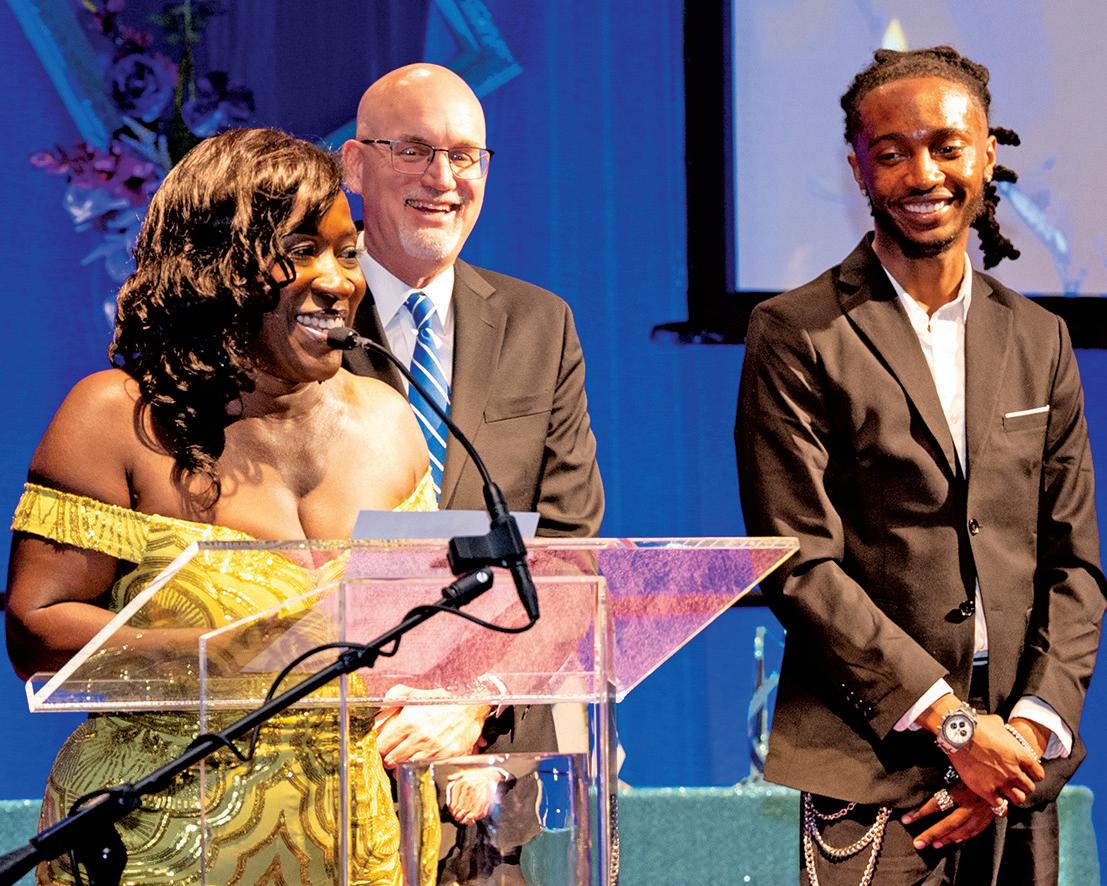
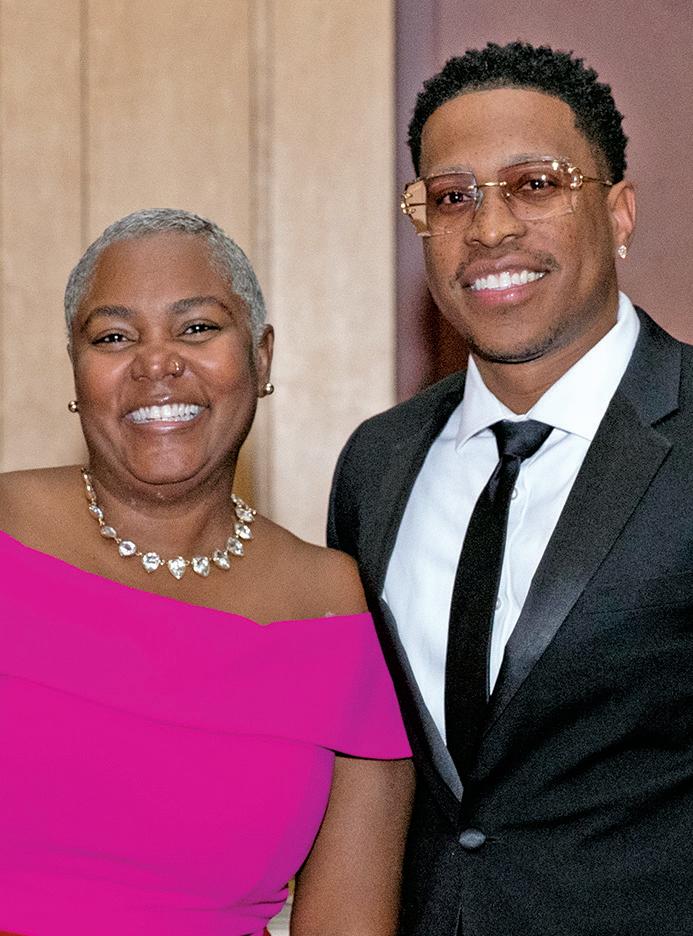
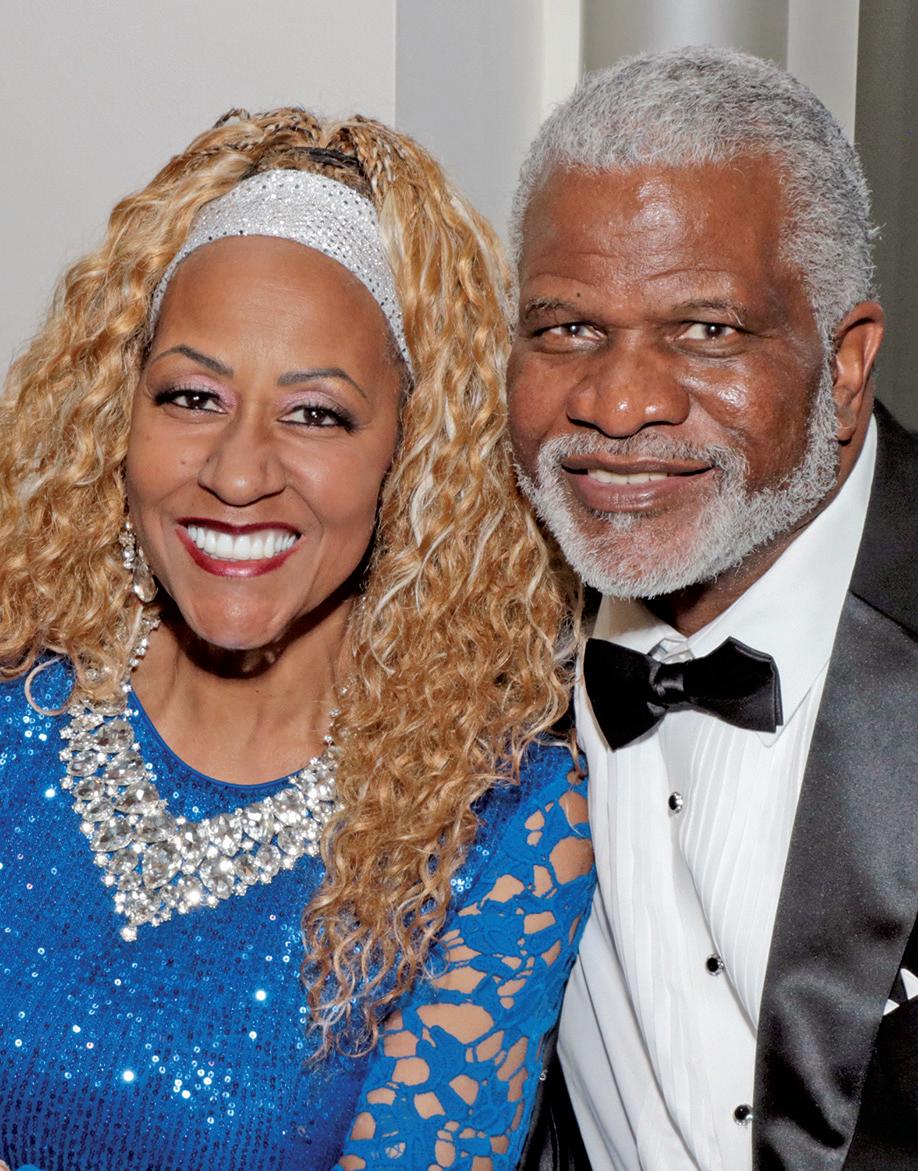

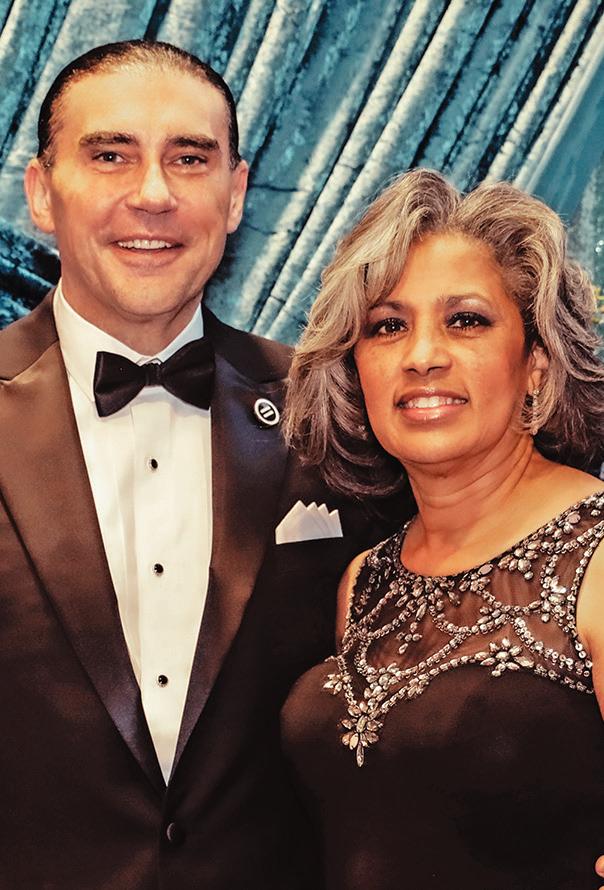
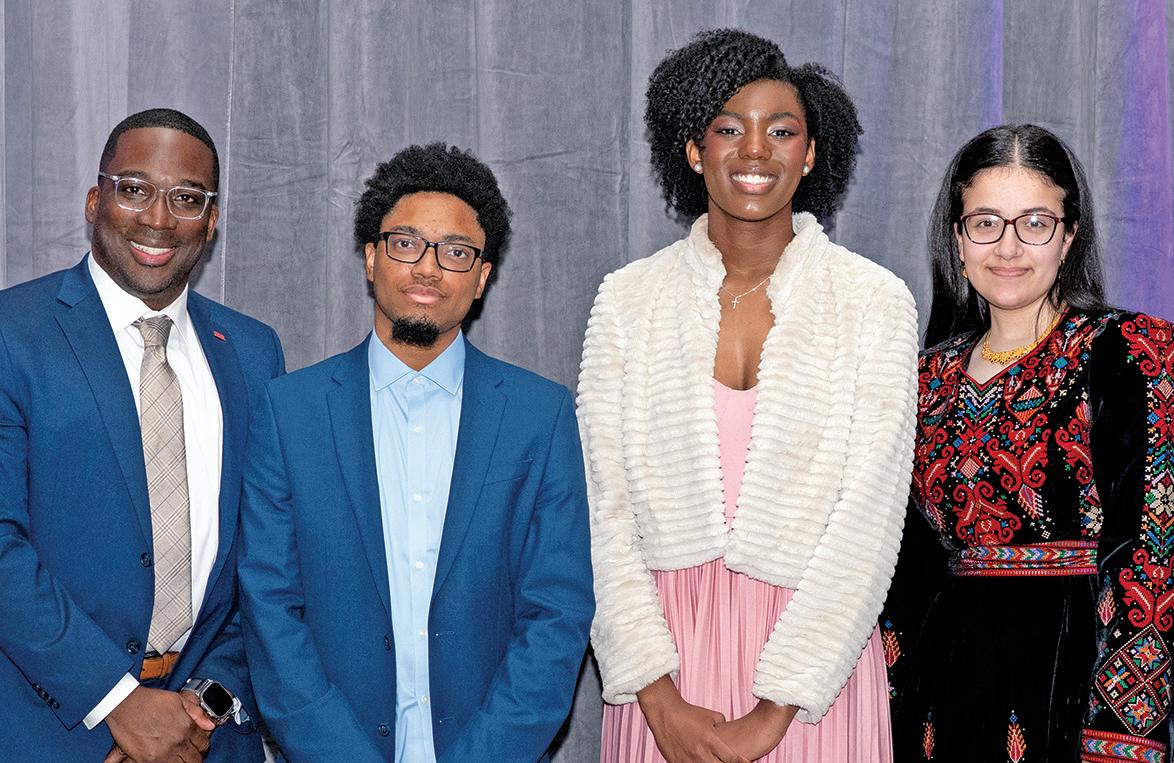
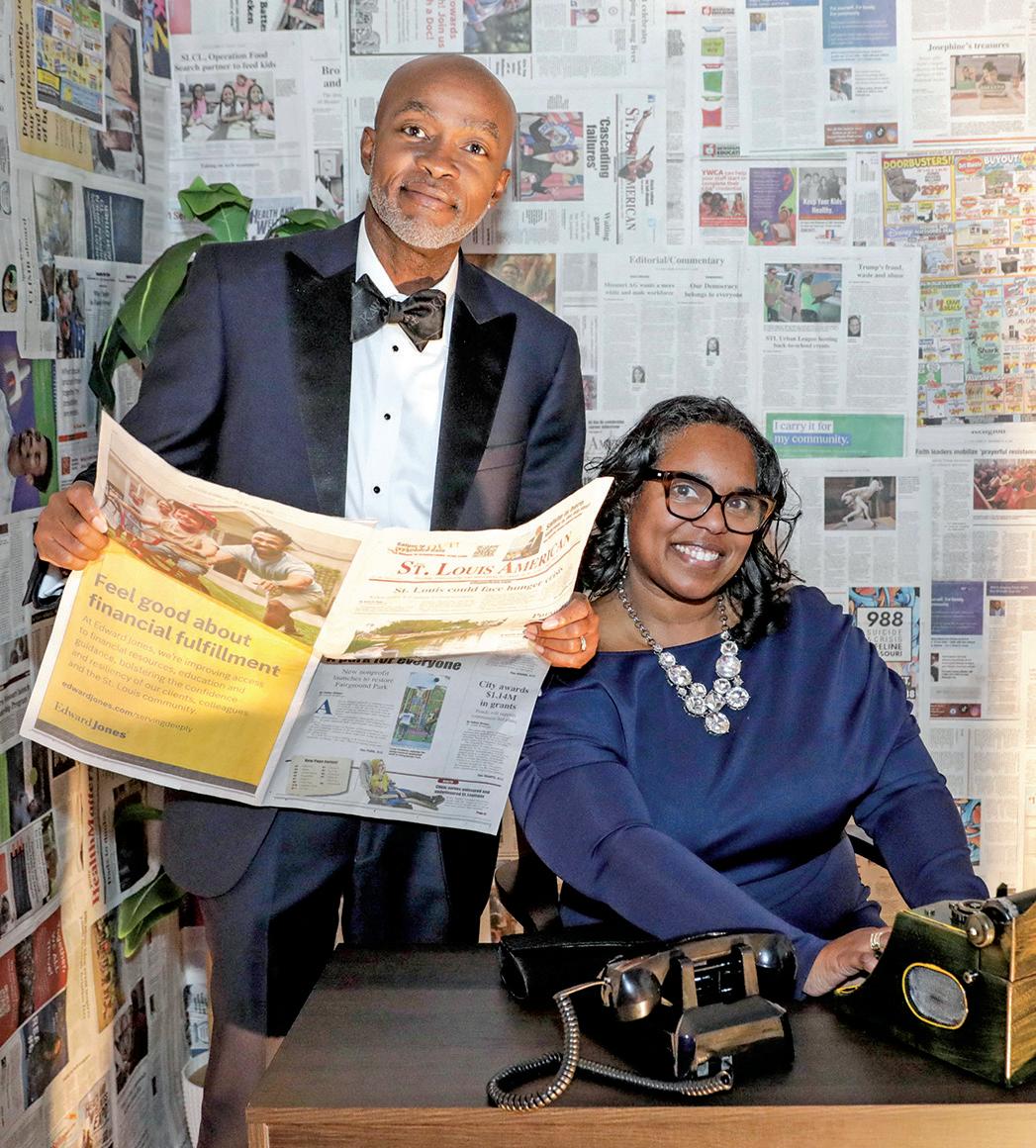
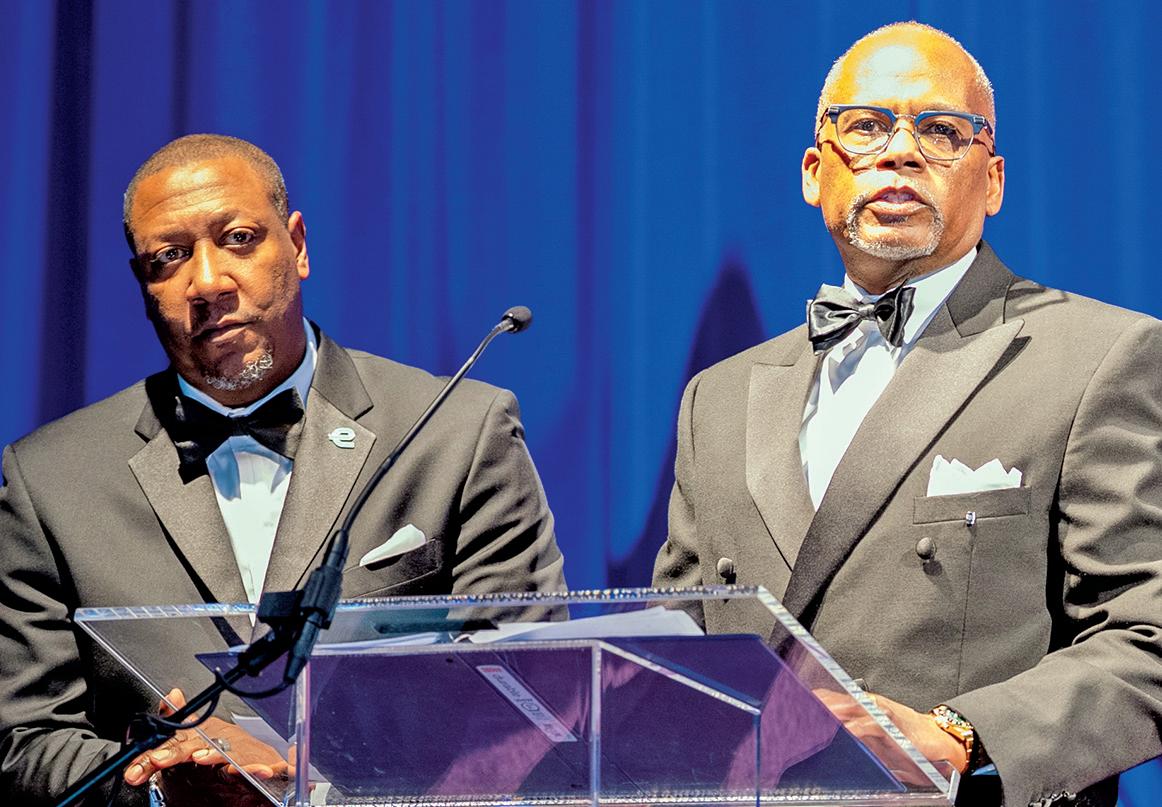
A joyful finale to an unforgettable night — dancing, laughter and lasting memories
